








50®5 AUGUST 2022 / NO. 294 THOUGHT LEADERSHIP FOR 25 YEARS THE INDUSTRY’S LEADING REPORT / P.26 SPECIAL ANNUAL ISSUE A Golden Era of Fast Food? P. 78 Cold Coffee Gets Hot P. 15 Plus JUMP TO THE RANKING OF AMERICA’S BIGGEST LIMITED-SERVICE CHAINS | P.50

RUNS
We are Coca-Cola and so much more, offering the preferred categories and leading brands to drive your sales and profit growth. Contact your Coca-Cola representative, call 1-800-241-COKE, or visit www.coca-colacompany.com.
REFRESHMENT
IN THE FAMILY
BY DANNY KLEIN AND BEN COLEY
In the first full year following the onset of COVID-19, the country’s highest-earning restaurant chains battled for market share once again. Who grew in 2021? Who slipped? And who is ready to accelerate on the other side? Let’s dive into the data.
78
Is a Golden Era of Fast Food Upon Us?
 BY DANIEL P. SMITH
BY DANIEL P. SMITH
The restaurant world continues facing undeniable headwinds, but the impressive results and ambitious plans of industry power players suggest quick-serves are poised to become an even bigger part of daily life.
RACHEL PITTMAN
PERIODICALS POSTAGE PAID AT CHAPEL HILL, NC, AND ADDITIONAL ENTRY POINTS. ON THE COVER Starbucks clocks in at No. 2 in this year’s QSR 50 as it keeps scaling up. PHOTOGRAPHY: STARBUCKS / CONNOR SURDI NEWS 9 SHORT ORDER 24 FRANCHISE FORWARD Diversity from the Top Down Franchising can prove a powerful vehicle for restaurants to create career opportunities. BY
97 CLIMATE RESPONSIBILITY Shaking Up Sustainability Shake Shack is tackling the topic with a multifaceted strategy. BY
INSIGHT 15 FRESH IDEAS Cold Coffee Gets Hot Customers of all demographics are changing how—and when— they drink the habitual classic. BY
20 ONES TO WATCH Sarpino’s Pizzeria A bevy of offerings is drawing in guests, old and new, and prospective operators, as well. BY BEN
62 OUTSIDE INSIGHTS Why 2021 Was a Mixed Blessing for Top Brands Beyond the numbers and into consumer sentiment, there’s a lot this past year can tell us. BY ADAM LEFF 104 START TO FINISH Scott Snyder The CEO of Bad Ass Coffee of Hawaii on leading a rocket ship. 2 BRANDED CONTENT 4 EDITOR’S LETTER 103 ADVERTISER INDEX DEPARTMENTS QSR is a registered trademark ® of Journalistic, Inc. QSR is copyright © 2022 Journalistic, Inc. All rights reserved. 101 Europa Drive, Suite 150, Chapel Hill, NC 27517-2380, (919) 9450700. Printed in USA. The opinions of columnists are their own. Publication of their writing does not imply endorsement by Journalistic, Inc. QSR (ISSN 1093-7994) is published monthly. Periodicals postage paid at Chapel Hill, NC, and additional entry points. SUBSCRIPTIONS: (800) 662-4834, www.qsrmagazine.com/subscribe. QSR is provided without charge upon request to individuals residing in the U.S. meeting subscription criteria as set forth by the publisher. ABC member since 2001. POSTMASTER: Send address changes to QSR, 101 Europa Drive, Suite 150, Chapel Hill, NC 27517-2380. All rights reserved. No part of this magazine may be reproduced in any fashion without the expressed written consent of Journalistic, Inc. 26
50
HILARY DANINHIRSCH
AMANDA BALTAZAR
COLEY
QSR
26/ McDONALD’S SITS ATOP THE QSR 50, AS USUAL. BUT WHAT’S CHANGED IN A YEAR? THE SHORT ANSWER: A LOT. QSR / LIMITED-SERVICE, UNLIMITED POSSIBILITIES TABLE OF CONTENTS AUGUST 2022 #294 ADOBE STOCK NITIPHOL August www.qsrmagazine.com | QSR | AUGUST 2022 1
FEATURES
How
EDITORIAL
EDITORIAL DIRECTOR, FOOD NEWS MEDIA: Danny Klein danny@qsrmagazine.com
MANAGING EDITOR, FOOD NEWS MEDIA: Nicole Duncan nicole@qsrmagazine.com
DIRECTOR OF CUSTOM CONTENT: Peggy Carouthers peggy@qsrmagazine.com
CUSTOM CONTENT ASSOCIATE EDITOR: Charlie Pogacar charlie@qsrmagazine.com
CUSTOM CONTENT ASSOCIATE EDITOR: Kara Phelps kara@qsrmagazine.com
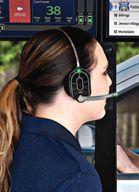
CONTENT EDITOR: Ben Coley ben@qsrmagazine.com
STAFF WRITER: Trevor Griner Trevor@qsrmagazine.com

ART & PRODUCTION
ART DIRECTOR: Tory Bartelt tory@qsrmagazine.com
ONLINE ART DIRECTOR: Kathryn “Rosie” Rosenbrock rosie@qsrmagazine.com
GRAPHIC DESIGNER: Erica Naftolowitz erica@qsrmagazine.com

PRODUCTION MANAGER: Mitch Avery mitch@qsrmagazine.com
ADVERTISING
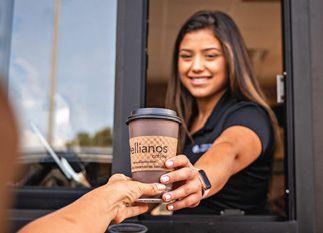
800.662.4834
NATIONAL SALES DIRECTOR // EXTENSION 126 : Eugene Drezner eugene@foodnewsmedia.com









NATIONAL SALES MANAGER // EXTENSION 149 : Edward Richards edward@foodnewsmedia.com
NATIONAL SALES MANAGER // EXTENSION 141 : Amber Dobsovic amber@foodnewsmedia.com

NATIONAL SALES MANAGER // EXTENSION 148 : John Krueger john@foodnewsmedia.com

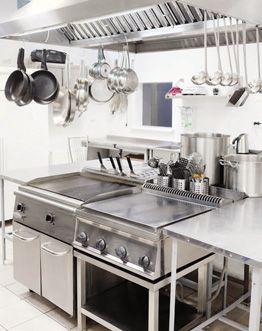
SALES SUPPORT // EXTENSION 124 : Tracy Doubts tracy@foodnewsmedia.com
CIRCULATION WWW.QSRMAGAZINE.COM/SUBSCRIBE
CIRCULATION COORDINATOR: N. Weber circasst@qsrmagazine.com



ADMINISTRATION
GROUP PUBLISHER, FOOD NEWS MEDIA: Greg Sanders greg@foodnewsmedia.com
PRESIDENT: Webb C. Howell
MANAGER, IT SERVICES: Jason Purdy
ACCOUNTING ASSOCIATE: Carole Ogan
ADMINISTRATION
800.662.4834, www.qsrmagazine.com/subscribe
QSR is provided without charge upon request to individuals residing in the U.S. meeting subscription criteria as set forth by the publisher.
REPRINTS
THE YGS GROUP
TOLL FREE: 800.290.5460





FAX: 717.825.2150
E-MAIL: qsrmagazine@theygsgroup.com www.qsrmagazine.com/reprints
Sponsored content in this magazine is provided by the represented company for a fee. Such content is written to be informational and non-promotional. Comments welcomed. Direct to sponsoredcontent@foodnewsmedia.com

FOOD NEWS MEDIA PROPERTIES


6 Improve Beverage and Dessert Sales on the Takeout Menu Off-premises, appearance is (almost) everything. SPONSORED BY RICH PRODUCTS 12 Ellianos Turned $100 into a Multi-Million Dollar Coffee Franchise The brand is searching for franchisees with fuel to grow. SPONSORED BY ELLIANOS COFFEE 18 How Actionable Insights and Improved Communication Make Drive Thrus More Profitable As drive-thru business continues to increase, efficiency is critical. SPONSORED BY HME HOSPITALITY AND SPECIALTY COMMUNICATIONS 22
Brands Are Enhancing CRM Data In Order to Target Customer Segments Inflation affects businesses and customers alike, but this solution offers a win-win. SPONSORED BY FETCH REWARDS 59 Quick-Serve Restaurants are Already Decarbonizing Menus Next up: decarbonizing parking lots while driving down the bottom line. SPONSORED BY CHARGENET STATIONS IN THIS ISSUE BRAND STORIES FROM QSR BRANDED CONTENT SmartChain / p. 81 SPONSORED SECTION AUGUST 2022 81 COVID Impact P82 Labor Changes P86 Tech and Design P90 Key Players P94 TOMORROW’S KITCHEN Futuristic tech is already here to increase back-ofhouse efficiency BY KARA PHELPS VENDOR RESOURCES TRENDS NEW PRODUCT S TOMORROW’S KITCHEN / FUTURISTIC TECH IS ALREADY HERE TO INCREASE BACK-OF-HOUSE EFFICIENCY. 82 The Post-COVID Kitchen Operators are finding innovative ways to do more with less. 86 Hail to the Chef Labor-saving technology can become a perk to help retain staff. 90 The Right Tech, the Right Space The kitchen of the future may have a smaller footprint with more automation. 94 Key Players Here are the biggest names in the world of kitchen equipment and solutions.
RICH PRODUCTS
ELLIANOS COFFEE
2 AUGUST 2022 | QSR | www.qsrmagazine.com
HME ADOBE STOCK MILENKO ÐILA CHARGENET STATIONS



One for the History Books
This August marks 25 years of the QSR 50. I spent a few dusty minutes the other day trying to track down the original copy. It was in the care of our art director, Tory Bartelt, who had to empty a few shelves before former Sonic Drive-In leader Clifford Hudson’s cover fell out of the pile. The inaugural QSR 50 actually didn’t feature a chart and ranking the way it has from Year 2 forward. It wasn’t even called the QSR 50, technically. We labeled the report, “America’s Hottest Chains” and essentially broke down the landscape from the top to the “Up and Coming.” To prove how long ago this was, Jersey Mike’s was on that list with 106 stores. Today? There’s 2,100 with systemwide sales north of $2.2 billion. The brand added 246 restaurants in just 2021.
In 1997, Chick-fil-A had sales of $671.95 million—a 17.9 percent jump from the prior year. The company’s stated goal was to hit $1 billion in systemwide sales by the year 2000. Feel old yet? Chick-fil-A crossed $16 billion in 2021. And its unit count has ballooned from 761 to over 2,700. A year later, Panda Express clocked in with $191.4 million in domestic systemwide sales and 269 units. It closed 2021 at $4.45 billion and 2,334 stores, respectively. For the most part, what stands out is the category’s resiliency. But, naturally, there are other sides. Blimpie boasted $300 million and 2,135 locations in 1998. The footprint was a 16.48 percent bump from 1,833. To be candid, I’m not entirely certain how many dot America today, but Mashed pegs the figure at about 156. It’s also interesting to see the inflection Subway stood at. There were 11,540 units after a relatively modest 3.36 percent,
year-over-year, rate. Before an 866-store decline from 2016–2017, Subway added 4,456 restaurants the previous six years combined. The concept finished 2021 with 21,147 U.S. outlets, a net decrease of 3,650 units versus 2019. Even so, it’s still the largest domestic brand by a good distance. Starbucks, at 15,450, is next. Back in 1998, the title belonged to McDonald’s, which had 12,472 U.S. stores and sales of $18.1 billion. It touted 13,438 locations in the U.S. year-end 2021. That sales figure, though, has ballooned to nearly $46 billion.
Let’s circle burgers and pizza. In 1998, the “Big 3” went as follows after McDonald’s: Burger King—sales of $10.241 billion and 7,691 locations; Wendy’s—sales of $5.6 billion and 4,676 units.
Fast forward: BK generates $10.03 billion across 7,105 stores. Wendy’s touts $11.1 billion and 5,938.
And pizza: Pizza Hut in 1998, $4.875B, 8,471; Domino’s $2.6B, 4,475; Little Caesars $1.75B, 3,905; and Papa Johns, $1.2B, 1,879. Current view: Pizza Hut, $5.5B, 6,548; Domino’s $8.6B, 6,560; Little Caesars $4.2B, 4,181; and Papa Johns, $3.45B, 3,164.


I could stare at these comparisons until my eyes twitch. When I first started covering restaurants (the QSR 50 had been going on for nearly 20 years by then), somebody told me I’d enjoy writing about fast food because it’s “the heartbeat of the American consumer.” Want to know what’s going on in the world? See how people are eating. If there’s a more accurate statement in this world, I haven’t found it yet.
Klein, Editorial Director







ROSIE
The QSR 50 turns 25, and we turn back the clock.
ROSENBROCK DANNY@QSRMAGAZINE.COM QSR MAGAZINE
4 AUGUST2022 | QSR | www.qsrmagazine.com EDITOR’S LETTER
Danny
SPRINKLE ON SOME magic
Introducing Dark Chocolate Barista Mini Chips in NEW 5LB. bags. Convenient and versatile, these mini chips deliver decadent chocolate flavor to your most delightful treats—steam with milk for a delicious hot mocha, blend in frappés for an extra chocolatey treat or create a magical topping for ice cream and beverages with just a little sprinkle.
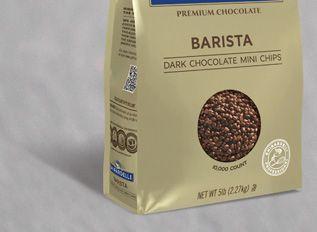

Order FREE samples at 800.877.9338 or professionalproducts@ghirardelli.com
MOCHA SALES WITH GHIRARDELLI ON THE MENU.

©2022 Ghirardelli Chocolate Company

TECHNOMIC GHIRARDELLI BRAND EQUITY RESEARCH, 2020
DOUBLE
PREMIUM CHOCOLATE
Improve Beverage and Dessert Sales on the Takeout Menu
/ BY KARA
Today’s consumers are ordering out in record numbers. According to Datassential, nearly 40 percent of all consumers say they get food delivery at least weekly. Of course, these off-premise restaurant guests also expect their orders to look and taste the same as they would when dining in, which isn’t always easy to provide.
“One of the biggest overarching challenges for operators right now is to find products that actually travel well from point A to point
B,” says Katie Kozlowski, senior product manager for garnishes at Rich Products. “How can you preserve the integrity of your menu item from start to finish, especially now that so many more people are using delivery and ordering takeout?”
If quick-service restaurants include beverage or dessert programs on their takeout menus, these concerns become more
pressing. Most whipped topping, whether it’s used as a staple for upselling or just a basic customer expectation, isn’t capable of withstanding the delivery journey well. Many brands completely disintegrate into their carrier within a few minutes. In the past, operators could be sure most customers would consume their order before this happened. Today, it’s a safe bet that a customer who ordered milkshakes for the family through a third-party delivery app won’t be happy to see a melted mess when the items finally arrive. The same is true of whipped topping used as a garnish on a dessert.
Rich’s On Top® Whipped Topping, however, has proven it can survive long hold times, rough handling, and bumpy roads— whether the beverage or dessert is hot or cold. Rich’s On Top Whipped Topping arrives at its destination fluffy and intact, with Instagrammable appeal, every time. When 92 percent of consumers expect their delivered food to be prepared to the same standards as when they dine in-house, as Datassential has recently found, superior stability is important.
“It’s all about appearance,” Kozlowski says. “If the customers’ expectations are met, the operator will get repeat business. Rich’s On Top drives traffic, interest, and sales in a way that other whipped toppings can’t.”
It carries through to taste, as well. Rich’s On Top Original has a light, creamy flavor with a hint of vanilla. The On Top portfolio also offers a range of other flavors—from authentic cream and sugar-free to chocolate and marshmallow—allowing operators to customize their menus while ensuring product consistency.
“Rich’s On Top gives the customer exactly what they’re looking for,” Kozlowski says. “From the time you first grab the product to when you arrive at home or when it gets delivered to your door, you’re getting a consistent experience.”
This stability also gives operators an opportunity to increase the profitability of their beverage or dessert menus. “Some operators include an upcharge for whipped topping, in situations where it’s more of an add-on than a requirement,” Kozlowski says. “This offers a way for guests to customize their orders, which is a big trend right now. Customers are satisfied with the taste and stability of Rich’s On Top and are willing to pay extra, and operators can enjoy higher margins.”

SPONSORED BY RICH PRODUCTS
RICH PRODUCTS
Off-premises, appearance is (almost) everything.
TO LEARN MORE, VISIT RICHSUSA.COM/ONTOP. 6 AUGUST 2022 | QSR | www.qsrmagazine.com
PHELPS
PICTURE PERFECT, EVERY TIME.

RICH’S ON TOP ® PORTFOLIO







Add sweet, creamy flavor and visual appeal to any on-the-go creation with On Top. Available in a variety of flavors, colors and textures, On Top combines valuable versatility with superior stability to create experiences that will have customers saving your operation to their Favorites in their ordering app.




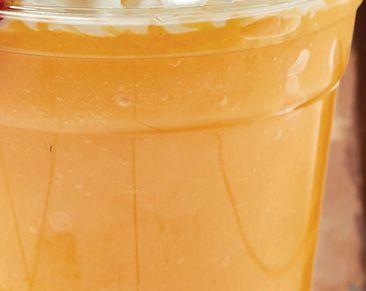
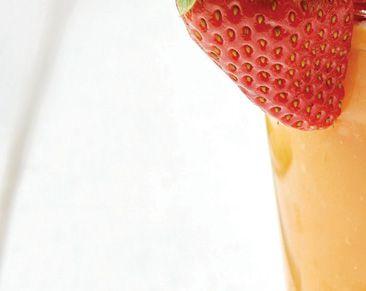






STAND UP TO EVERY DELIVERY JOURNEY. RICHSUSA.COM/ONTOP


© 2022 Rich Products Corporation
BACK TO RESTAURANTS COFFEE DRINKERS
47%

of lapsed customers say more variety of hot & cold specialty coffees and new brewed coffee options would entice them to increase food and beverage purchases at breakfast.

Whether you’re a quick-service coffee destination or full-service restaurant with a breakfast program, Mother Parkers is here to partner on your tea and coffee needs through:
• Blend & Product Development

• Insights to Drive Growth
• Surety of Supply

Get in touch with us online mother-parkers.com/contact-us to learn how we can help!

Find out more about our coffee and tea programs by visiting us at www.mother-parkers.com


BRINGING
McDonald’s Goes Camping
Retro meets loyalty in the fast-food chain’s summer promotion.
ORDER



IN JULY, McDONALD’S TURNED ITS APP into a summer ticket for fans to access events, deals, and revolving activations. Camp McDonald’s, a month-long virtual experience, featured a lineup of food offers, everything from Big Macs to fries, Chicken McNuggets, and more, menu mixups, merchandise collaborations, and music performances featuring artists such as blackbear, Omar Apollo, BIBI, and Kid Cudi. Customers had to check the app each day for details.
Among the merch launches was a Retro Grimace Pool Float ( pictured) and a “Don’t Trip” Camp McDonald’s Collection from Free & Easy. Menu Hacks showcased fresh spins on classics like the Apple Pie McFlurry (July 6) and a McFlurry Sandwich (July 20).
What says “summer” better than a Grimace pool float?



McDONALD’S Got timely and newsworthy photos?Submit them to ShortOrder@qsrmagazine.com.
www.qsrmagazine.com | QSR | AUGUST 2022 9 SHORT
Th roughout the pandemic bubble, the restaurant industry’s grapple with labor dynamics has hardly let up. The industry added 40,800 jobs in June, bringing the total to 11.9 million. W hile upward, the figure remained about 700,000 jobs below pre-COVID-19 levels.


















Like hourly employees, restaurants have seen fluctuations in management-level support. Black Box Intelligence released a report on what it calls the “Moneyball Metric.” Put differently, why the No. 1 driver of performance for restaurants, pandemic conditions and all, is the GM. Here were some findings:

35% OF MANAGERS WERE NOT ENGAGED


● A pre-pandemic employee engagement report suggested 35 percent of managers were not engaged and depart within a year.


● The common culprit: work/life balance— a topic that’s only accentuated under the COVID spotlight.


● In fact, data from February 2022shows turnover for restaurant managers both in limited- and full-service restaurants increased during each quarter in 2021 and reached historically prominent levels.

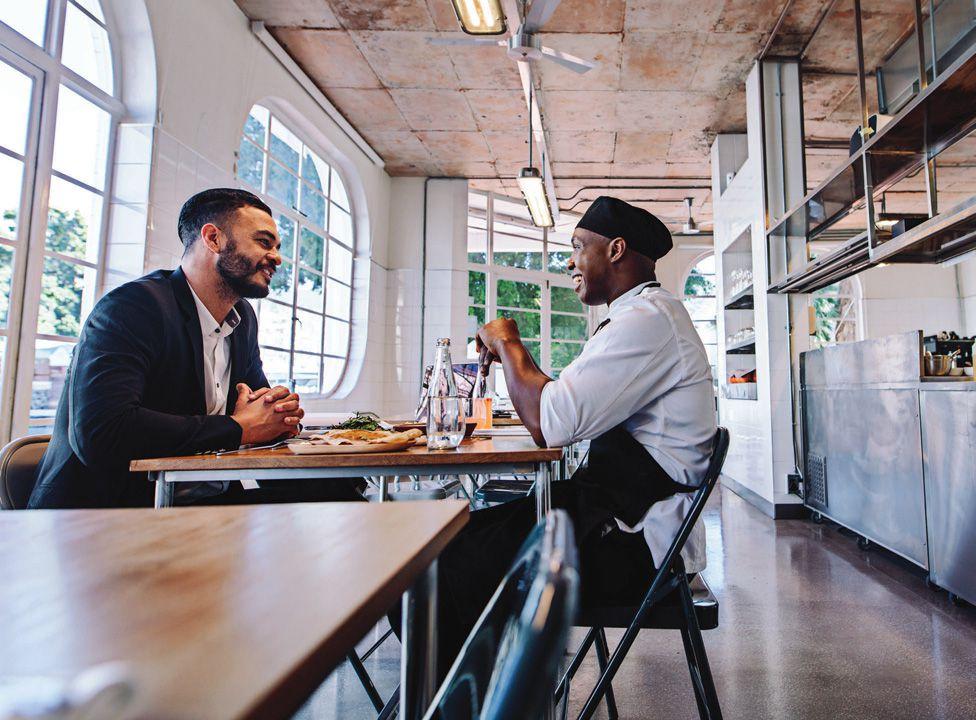
● Total compensation for the median general manager in alimited-service restaurant increased by 3.7 percentage points between having a great impact on employee retention.
TIPS FROM BLACK BOX:





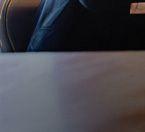





Managers should be sure to integrate tools and systems that make both front-of-house and back-of-house processes more efficient. Example: a manager working with antiquated print-out spreadsheets and schedules is likely wasting a lot of hours on manual labor, and today’s tech-savvy employees likely have a harder time navigating such.
Invest in online scheduling, inventory, and payment systems that save time for management and are easy to use for floor staff.
Ensure the team is properly staffed with multiple managers covering different aspects of the business. That way if one is burned out, you’re not left floundering. This also provides the opportunity for more intimate relationships with team members.
Many employees enjoy giving or receiving mentorships in their careers and the more levels of support available, the better.




ADOBE STOCK (2), MANAGER TALKING WITH CHEF: JACOB AMMENTORP LUND, CAFE MANAGER: 1001COLOR
IT’S A SAYING AS OLD AS HOSPITALIT Y: “Want to see a great restaurant? I’ll show you a great GM.”
10 AUGUST2022 | QSR | www.qsrmagazine.com SHORT ORDER
NEW YORK DETROIT CHICAGO
NO MATTER WHERE YOU’RE FR
Mike’s Hot Honey started out of a pizzeria in Brooklyn 11 y creating a whole new category of pizza topping that has been c changer by pizza fans and spawned best-selling menu items nationwide. Request a sample today to see what all the buz







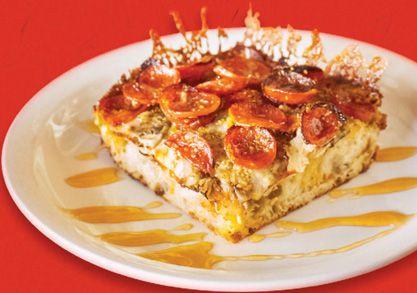


















mikeshothoney.com/sample











Ellianos Turned $100 into a Multi-Million Dollar Coffee Franchise
Brand seeks franchisees with fuel to grow.
Inspirational stories of how restaurant brands came to be abound in the foodservice industry, but Ellianos Coffee may have one of the most unique. Though the drive-thru coffee franchise now boasts multimillion dollar sales, with 23 locations open and over 80 more in development, it all started with just $100.

The Ellianos story began over 40 years ago when now-Ellianos-president and founder Scott Stewart received a $100 savings bond gifted to him by his grandmother. Inspired by a trip to the Pacific Northwest in the early 2000s, Stewart and his wife Pam returned home to Lake City, Florida, and decided to take that savings bond he had received 20 years prior and turn it into a coffee chain focused on serving “Italian Quality at America’s Pace.”
Having owned several of his own businesses, combined with his experience as a franchisee with a major national pizza chain, Stewart knew the ins and outs of the foodservice business. Thanks to his industry knowledge, the brand’s dedication to thoughtful growth, and its emphasis on hiring the right people, Ellianos is now a steadily growing chain. Yet while the brand is seeking new franchisees, the company hasn’t lost sight of its roots and is committed to maintaining the same thoughtful growth plans it has since its inception.
“We don’t want to grow just to grow; we want to grow the right way,” Stewart says. “My wife and I said 20 years ago that we’re going to do it right and take our time. We started that journey and built the framework, and while we want to expand, we’re prioritizing strong growth over just growing for the sake of growing.”
Rather than setting aggressive growth targets like other brands, the Ellianos team is committed to finding the right people first.
“More than past experience, we’re looking for genuine people with the right kind of fuel,” Stewart says. “We always start by asking people why they want to franchise. Some people’s fuel is helping others, to be busy, to make a difference, to feel successful, to take care of their family—this is all good fuel. Bad fuel is jealousy, pride, or arrogance. We don’t want people who just want to make money at all costs. Past experience is helpful, and the financial ability to get a loan and have enough equity is important, but it really all comes down to fuel.”
When a person has the right fuel, Stewart says, the goal is to find their passions and get out of their way so they can develop new skills
and take on new challenges while still offering support programs to help them in their journey. These strong support programs have, in part, resulted in very satisfied franchisees. In fact, in a recent survey of Ellianos’ franchisees conducted by a third party, over 90 percent said they would recommend franchising with the brand to a friend.
The second most important factor for a potential Ellianos franchisee is location. Though the brand has received interest from potential investors across the country, the coffee chain’s leadership team is committed to offering each of its franchisees one-on-one support, including in-person assistance. This means a new territory must be close enough to be supported by the existing Ellianos network, and potential franchisees must live close enough to their proposed stores to offer their own support to store staff.
Greg Pruitt, vice president of marketing at Ellianos, says the right franchisee is also community-oriented.
“We want to pick the right franchisees in the right locations,” Pruitt says. “A lot of our franchisees are very involved in their stores. In every organization, employees look from the top down to understand a brand’s goals and priorities. When you have friendly bosses who are enjoying work, you also have happy employees. We want to be a light in each community and help that community feel like they’ve got something special.”
-By Peggy Carouthers
To learn more, visit ellianos.com.
SPONSORED BY ELLIANOS COFFEE ELLIANOS COFFEE
12 AUGUST 2022 | QSR | www.qsrmagazine.com



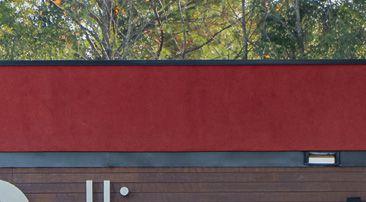
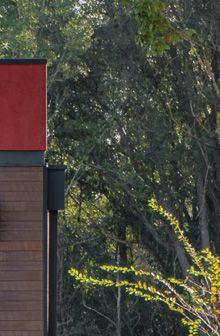
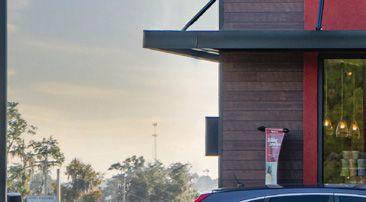



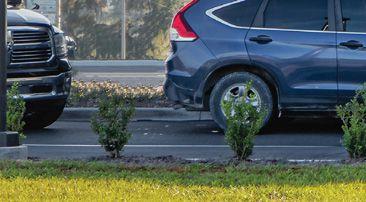


COMPETE WITH COFFEE AND TEA
In today's environment, foodservice operators are facing ongoing challenges like inflation, labor shortages, r and supply chain issues - just to name a few According to Cleveland Research Company in their recent r “State of the Foodservice Industry" webinar, research shows that despite inflation, consumer demand for restaurants looks to remain strong and the outlook for dining r out is optimistic. However, with growing competition to win consumer loyalty, r how do you ensure you're standing t?
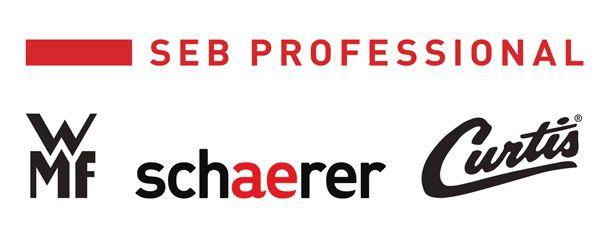
By providing a full-scale, top-quality coffee and tea program, you are laying the foundation to greatly enhance your food r offerings! By upgrading your coffee r and tea programs, your establishment r can become a destination for hot and iced coffee and tea all day long!


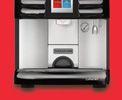




wmf-coffeemachines.com • schaererusa.com • wilburcurtis.com
freshideas


Cold Coffee Gets Hot
 BY AMANDA BALTAZAR
BY AMANDA BALTAZAR
Servings of cold brew coffee ordered at quick-service restaurants climbed 27 percent in the 12 months ending April 2022, year-over-year, according to The NPD Group/CREST.

That equated to 373 million servings, which is no small figure. Servings of frozen/slushy coffee from quick-serves during the same stretch jumped 3 percent to 726 million, showing customers are open to cold coffee in myriad formats.


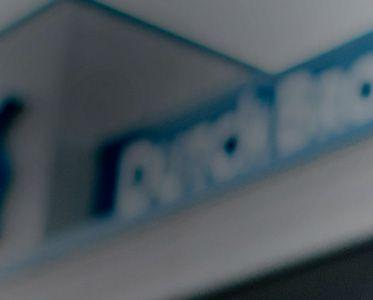
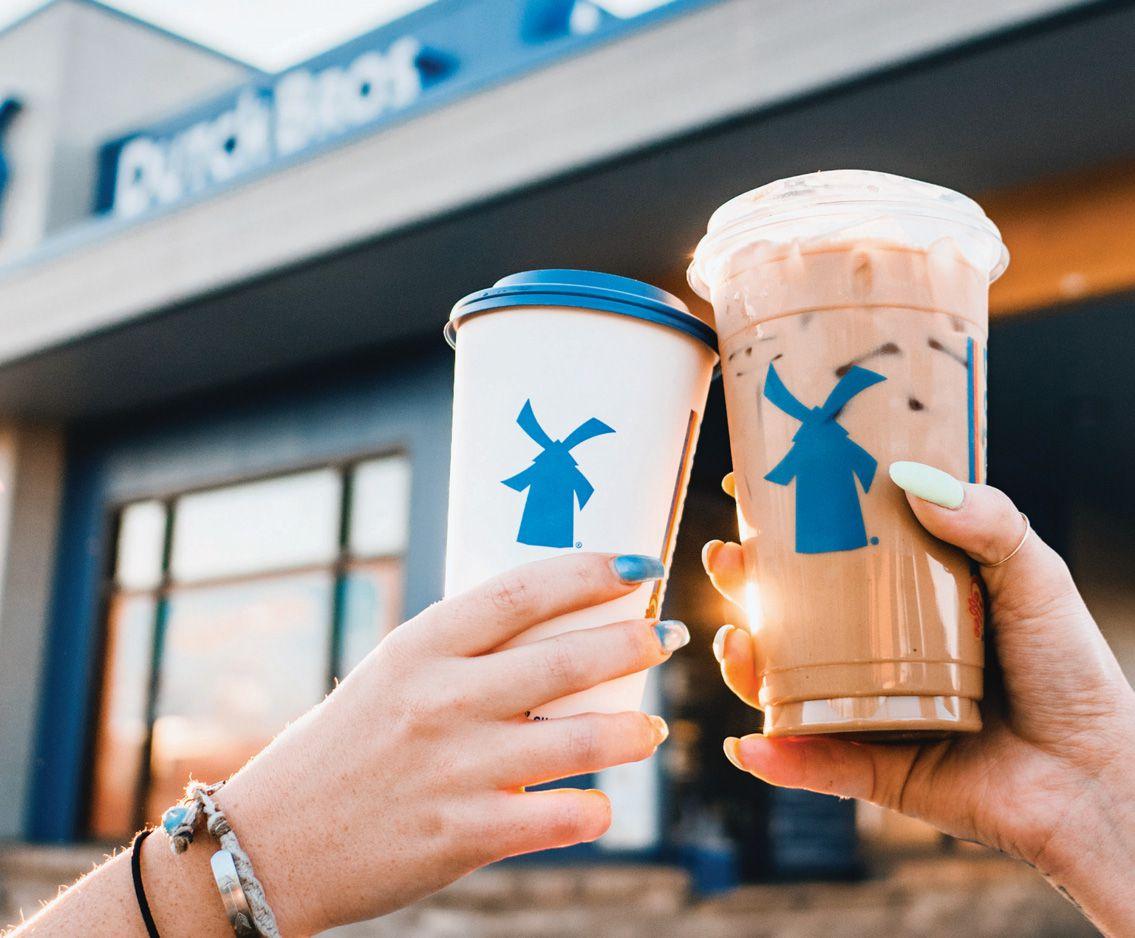
However, iced coffee remained the cold leader, as customers ordered 2.8 billion servings in the calendar up to April, up 11 percent from the year prior.
Roughly 70 percent of all sales at The Coffee Bean & Tea Leaf are cold coffee and cold tea. Sanjiv Razdan, president, Americas
and India, attributes it to several factors:
First, the consumption of coffee shop beverages has moved away from first thing in the morning “and become a pick-me-up treat, a recharge beverage that people consume across the day,” he says.
“As that daypart consumption has changed, people use the beverage very differently. Cold is more versatile and tends to be more suitable for various dayparts up until late evening.”
Secondly, the quality of these cold drinks has improved as consumers’ became more sophisticated. “There’s an appreciation for the craftsmanship that goes into these drinks,” Razdan says. And finally, cold beverages fit snuggly into the off-premises trend that
DUTCH BROS.
Dutch Bros. is using its loyalty base to promote cold offerings, but the message is getting out through word-of-mouth as well.
| COLD COFFEE |
Customers of all demographics are changing how— and when—they drink the habitual classic.
www.qsrmagazine.com | QSR | AUGUST 2022 15
MULTI-UNIT FRANCHISE OPPORTUNITIES


ACQUIRE EXISTING LOCATIONS
INVEST IN MODERN, FRESH FORWARD RESTAURANT DESIGNS REMODELS, RELOCATIONS, AND NEW RESTAURANTS
LEVERAGE MULTIPLE REVENUE STREAMS
ENGAGE WITH NEW BRAND LEADERSHIP FOCUSED ON DRIVING FRANCHISEE PROFITABILITY






GROW YOUR PORTFOLIO WITH US


S
*COMPARED TO 2019
boomed amid COVID-19 conditions.
More than 58 percent of Bad Ass Coffee’s business fits into the cold bill, which includes everything from cold brew to smoothies and blended drinks, with iced lattes being the hands-down top category. Bad Ass Coffee has 22 stores with eight under construction.

Cold drinks constitute 70–80 percent of sales At Dutch Bros. as well. “Cold travels better and more of our drinks are traveling with us as opposed to being enjoyed in the moment,” CMO John Graham says.
Innovation and LTOs
To succeed in cold beverages, it’s vital coffee shops innovate and continue to create excitement in this category.
Coffee Bean & Tea Leaf launched a summer LTO with three cold brew teas: watermelon mint; peach jasmine; and mango caramel. Previously, the brand focused innovation on lattes and iced drinks but switched to cold brew this year, Razdan says.
The brand also embraced decadence with its Belgian Chocolate Ice Blended Drink.
To generate engagement, Coffee Bean & Tea Leaf launches these beverages as LTOs, but adds them to the permanent menu if they do well. But limited runs really drive sales, he says. “We’re a society driven by the fear of missing out and we want to try new things and be the first to try something that our favorite brands are bringing to us,” Razdan says. “We create that buzz and it plays for us very well.”
Bad Ass’ summer LTOs included Beach Bonfire Latte (iced, frozen, or hot): espresso and milk with macadamia nut, toasted marshmallow, and dark chocolate swirl syrups; and Beach Bonfire Cold Lava Cold Brew: Hawaiian blend cold brew, macadamia nut syrup, and toasted marshmallow cold lava (cold lava is cold foam made with milk and syrup).
It’s essential to stay ahead of trends, CEO Scott Snyder says, because guests love customizing drinks. “Brands are listening and creating more and more innovation,” he says. “We have tea, coffee, cold brew, smoothies, and we use those as base elements and then listen to what our customers want. When you see a trend, you see innovation.”
Universal appeal
While customers of all walks are enjoying cold drinks, they do tend to skew more toward younger demographics, Razdan says, and are also proving an option for the much younger crowd—the tweens and teens who don’t yet drink caffeine but want a drink when their parents go to a coffee shop.
Younger consumers have grown up with coffee shops, Snyder adds. So they’re accustomed to ordering blended, non-alcoholic
drinks before they were adults, and are now comfortable with these options.
While hot beverages remain popular in the mornings, the customer who buys that often comes back in the afternoon for something cold, he says. “What we really see, especially with that younger demographic, is that afternoon bounce-back with a cold brew product,” Snyder says. “The cold brew packs quite a punch so you can make it straight up or with cream or flavors and it can be both a treat and a pick-meup. We see a bigger influx [of these] in the afternoon.”
Chilled out marketing
While Coffee Bean & Tea Leaf uses store menuboards and social media to promote cold drinks, especially new ones, the loyalty program is also great for this purpose. The concept sends members customized messages based on what they’ve previously drunk.
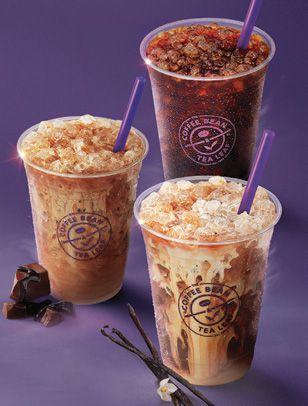
Bad Ass Coffee promotes its cold coffees with in-store tactics including posters, table cards, and menu highlights, as well as online marketing with geotargeted ads. Social media is exploding, too.
But most important is loyalty, Synder says. “It gives great access to the customers who are our best customers, who are also our best word-of-mouth and influencers,” he says.
Dutch Bros.’ loyalty base is also a great tool for promoting cold coffees.
“Our first stop in anything we do is our rewards program,” Graham says. “We back that up on the social side with text and email programs. We have a great customer data program and talk to customers the way they want.”
The future
Cold beverages aren’t going anywhere, Razdan notes. “We’ll see significant growth of cold brew teas and coffees with their more delicate flavor, more nuances. Cold is here to stay but the name of the game is innovation,” he says.
Synder echoes the thought. “The younger audience who grew up in these stores are creating that same family experience now with their kids,” he says.
“Diversity and creativity in your menu is also what customers are looking for. Everyone gets excited when there’s something new. By the same token hot isn’t going away; it’s where this all started.
“But I do believe that cold as the dominant percentage is here to stay,” Synder adds. q
DUTCH BROS., COFFEE BEAN & TEA LEAF
Amanda Baltazar is a regular contributor to Food News Media and is based in Washington.
www.qsrmagazine.com | QSR | AUGUST 2022 17 fresh ideas | COLD COFFEE |
THROUGH THE DRIVE-THRU, VIA MOBILE, OR IN-STORE, COLD DRINKS FIT THE INNOVATION BILL.
How Actionable Insights and Improved
he NPD Group recently reported drive-thru sales grew by 20 percent between February 2020 and February 2022. Digital ordering has also picked up in a big way, with the NPD Group reporting an increase of 117 percent since February 2020. That figure includes curbside pickup and other digital orders that are picked up at the drive-thru window, and is yet another reason why drive thrus are busier than ever before.
The growth in these areas have been a blessing and a curse for the industry. More revenue is always good, of course, especially as labor and food costs spike. But the challenges of integrating new ordering and pick-up channels, with the backdrop of an industry-wide labor crisis, means restaurant efficiency is a critically important challenge.
“Restaurants are severely understaffed,” says Scott Mullica, director of product management with HME Hospitality and Specialty Communications. “Managers are working six days a week, and operators are extending crews across multiple locations. But these temporary solutions are increasing employee burnout instead of alleviating pressure.”
Fortunately, there are tech solutions that can help maximize restaurant and employee efficiency. For example, HME Hospitality and Specialty Communications’ new NEXEO | HDX Crew Communication Platform integrates with the HME ZOOM Nitro Timer with video detection to enhance drive-thru efficiency. The platforms’ integration empowers restaurants with actionable insights delivered to the right person at the right time. Key staff members can receive headset alerts when it matters most, like each time a car arrives in a curbside pickup space in the parking lot, enabling your team to better serve guests across all order pickup locations.
“Actionable data and greater insights help managers make better
decisions in real time,” Mullica says. “ZOOM Nitro alerts to your NEXEO | HDX headset enhances awareness to key areas of your operation—the drive thru, mobile orders, and curbside—enabling your team to improve performance on the spot.”

The cloud-connected NEXEO | HDX platform has other competitive advantages that make it better suited for modern off-premises sales, too. Because of its multiple channels, the platform enables dedicated communication for outside order takers, mobile order groups, and more. Team members can use hands-free voice commands to perform certain tasks, such as connecting to a mobile order group channel. HME CLOUD connectivity also keeps NEXEO | HDX upto-date and prepared for the future of the industry. Plus, the system is ready to integrate with voice-AI providers.
“NEXEO | HDX is the total communication platform that is best suited to drive increased efficiency in your restaurant as your business grows,” Mullica says. “This platform provides more communication options and flexibility than other systems currently available and can grow with your business and its future needs.
For more on HME’s NEXEO | HDX, visit hme.com/nexeo.
SPONSORED BY HME HOSPITALITY AND SPECIALTY COMMUNICATIONS
HME HOSPITALITY AND SPECIALTY COMMUNICATIONS
With drive-thru business up 20 percent, greater efficiency is necessary.
18 AUGUST 2022 | QSR | www.qsrmagazine.com
/BY CHARLIE POGACAR











The Total Solution for Restaurant Communication 866.577.6721 | www.hme.com/nexeo © 2022 HM Electronics, Inc. The HME logo and product names are registered trademarks of HM Electronics, Inc. All rights reserved. NEXEO | HDX TM integrates with ZOOM Nitro® Timer to deliver actionable insights to key staff when it matters most. Maximize efficiency and stay on top of your operation’s performance even as you move around the restaurant. Notifications from ZOOM Nitro to the right employee’s headset provide critical information that enables immediate action and helps you improve performance on the spot. Actionable Insights to the Right Person at the Right Time FINALLY! Integration Between Drive-Thru Headset and Timer. 0:20 Menu 1 Time 70 Prev 0:42 Hour AVG 0:40 Goal 0:14 3 Service TimeDrive Offs 0:12 Hour AVG This Hour 0:15 Goal 0:28 Menu 2 Time 0:42 Hour AVG 0:40 Goal Casher Car 0:45 Hour DRIVE OFF DETECTED PRE-MENU CASHIER SERVICE HMEats’ #4321 620 200PM 00PM JUNE23 S Y DAYPART- 3 S CK S T- 2 COS G 200PM 800PM 1:25 1:22 1:12 1:42 0:12 0:08 0:03 0:02 0 e s r 5 u MENU 1 U ENU EN MEN N E M 2 MERGE 1 E RGE MERGE GE ERGE G RG MERG ME ERG R M 2 4:46:20 2:00 PM 5:00 PM JUNE 23 WEDNES ES A SDAY DA DAYPARTSNACK SHIFTCLOSING 12:00 PM 8:00 PM 0 0: 0:20 :20 20 0:28 :228 0 0::55 5 55 5 0:45 “Drive
” “Drive-thru
*requires ZOOM Nitro with video detection.
mobile order is waiting.”
off has occurred.*
danger zone alert.* ”
“Pull-forward
time has been exceeded.”
“A
Sarpino’s Pizzeria
BY BEN COLEY
way from pizza to pasta and tiramisu. And it’s all fresh.”
Nelowet was brought on in September 2021 to make sure the Chicago-based Sarpino’s is no longer a secret, both to operators, and by extension, consumers. The delivery/ takeout focused pizzeria entered the U.S. in 2002 and has since expanded to roughly 45 locations in Georgia, Iowa, Missouri, Texas, Florida, Minnesota, and Illinois. Sarpino’s USA acquired domestic franchising rights in 2005, and has been in charge of growth ever since. For the first time, the fast casual is moving forward with a national franchising push.
Sarpino’s USA president David Chatkin, who’s been with the brand for 20 years, feels the timing for expansion made sense, given how strongly the pizza chain’s operational model performed during the rush toward convenience. Sarpino’s has experienced double-digit increases in sales in the past few years, and systemwide AUV is almost $1.1 million.


FOUNDER: David Chatkin, CEO
HEADQUARTERS: Chicago
YEAR STARTED: 2005
ANNUAL SALES: 2021 U.S. system-wide sales of $45,988,768
TOTAL UNITS: 45
FRANCHISED UNITS: 45
SCOTT NELOWET, DIRECTOR OF FRANCHISE DEVEL opment for Sarpino’s Pizzeria, has been with the fast casual for less than a year. In that time, he quickly learned the key to reeling in prospective operators—the expansive Italian menu.
The brand boasts more than 60 specialty and gourmet pizzas. There’s also roughly 20

calzones and sandwiches each, 11 salads, 12 pastas, five bone-in wing flavors, and a variety of appetizers. Among those choices are several vegan options. All selections aren’t available at every restaurant, but the variety is still unmatched by most in the quick-service pizza segment, and Nelowet knows this.
“[Sarpino’s] hasn’t spent a lot of time doing press and conversations like this,” Nelowet says. “And so, when I’m talking to people, a lot of them have never tasted the product before. And what’s great about Sarpino’s for me is that’s the least of my worries. I know that once I move into the franchise process, I worry about all their stuff. I don’t have to worry about the food at the end of the day. We’ll sit them down, they’ll taste it. It’s a home run every time because they’ve got the full Italian restaurant menu all the
The brand’s expansion plan targets markets where it’s already having great success, including Florida and Kansas City, Missouri, where stores are making $1.3 million per year. Illinois, Colorado, Kansas, and the Southeast are under consideration, as well.
“We’ve been through COVID times for a couple of years,” Chatkin says. “It was a time of unknown. But we went out of this time much stronger than we used to be before COVID, and we see some good progress in the several states we are in, and we were able to prepare and build a franchising process internally. We’ve specialized in delivery for the last 20 years and after COVID time, it’s a good business to be in.”
In addition to the menu, Nelowet believes operators will be most attracted to Sarpino’s technological infrastructure.
In the back of house, there’s a monitor installed at every work-
SARPINO’S PIZZERIA (2)
A bevy of offerings is drawing in guests, old and new, and prospective operators, as well.
DEPARTMENT ONES TO WATCH CONTINUED ON PAGE 102 20 AUGUST2022 | QSR | www.qsrmagazine.com





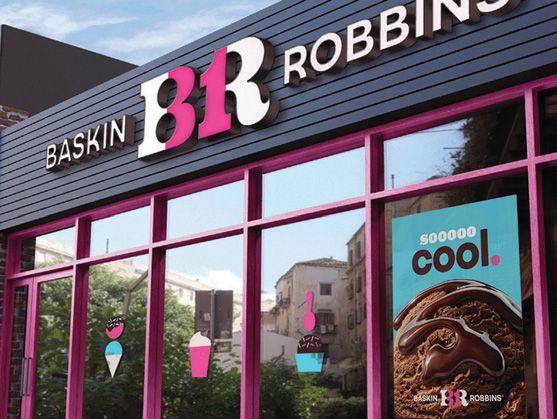




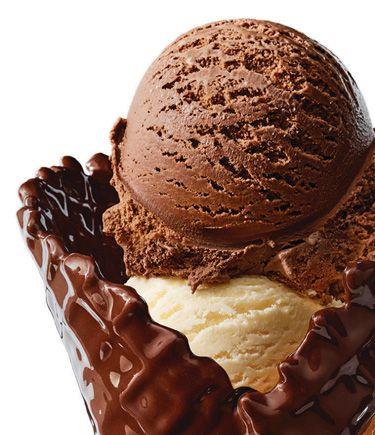

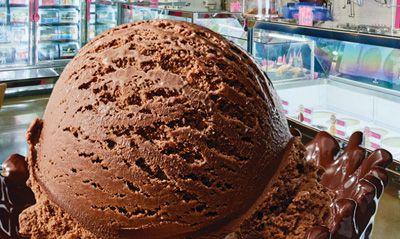

1 2 3 4
How Brands Are Enhancing CRM Data In Order to Target Customer Segments
With inflation affecting both consumers and businesses, this solution offers a win-win.
brands visibility into purchasing behavior, including on cash transactions, and allows brands to market directly toward customers.
Best of all, says Lindsay Eichten, head of CRM and loyalty at TGI Fridays, restaurants only pay for results. It’s why many of the leading brands are turning to Fetch Rewards.
“Fetch Rewards caught my eye with its commitment to pay-for-performance, hypertargeted customer opportunities,” Eichten says. “I didn’t have to just believe it from the sales pitch, I could actually evaluate for myself how a small investment could work hard for the TGI Fridays brand to deliver incremental value to our guests in a tough macro-economic environment.”
Customer relationship management (crm) software has traditionally offered restaurant brands insights into consumer behavior that can assist in running targeted marketing campaigns. But the practice of doing so has become increasingly challenging as the largest tech brands move to enhance privacy.
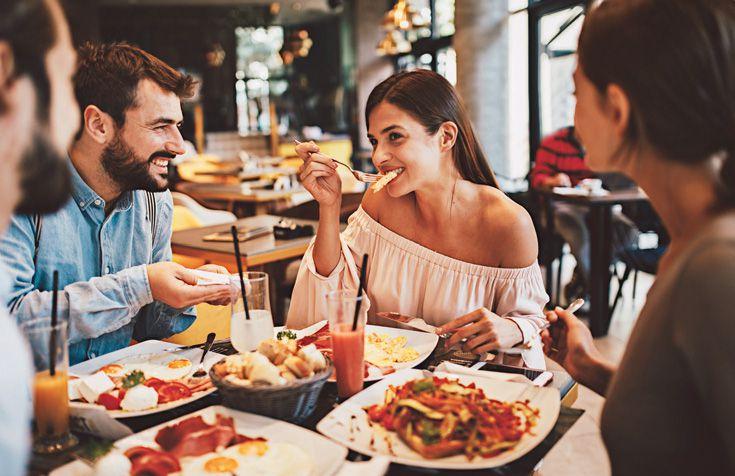
“The shift in the digital landscape toward privacy is in line with consumer demand, but it also means advertisements are becoming less effective,” says Phil Quackenboss, vice president of restaurants at Fetch Rewards. “It’s also more difficult to track ROI, because you may no longer have the ability to measure incremental behaviors that are driven by each campaign.”
On top of this, surging inflation means both restaurant brands and consumers are strapped for cash. That means that even if restaurant brands have a CRM, they have an uphill battle on multiple fronts in reaching and convincing customers that they should come dine out.
In many ways, Fetch Rewards was made
for this moment. Co-founded in 2013 by thencollege student and current Fetch Rewards CEO Wes Schroll, the company’s mission is to build customer loyalty while creating a win-win for the customer and brand alike. Fetch Rewards has since grown into the largest consumer rewards app in the U.S. with more than 15 million active users.
Here’s how it works: Users snap restaurant receipts in the app, building up loyalty points that translate into rewards. Restaurants gain actionable first-party insights that have the ability to enhance CRM data with no impact on unit economics. Customers pay full price for each purchase, and there are no changes required for in-store operations. Fetch offers restaurant
The investment has paid huge dividends for TGI Fridays. Eichten reports that she had high expectations for performance, but Fetch has exceeded her KPIs, “driving incremental sales lift.” The app has driven repeat visits from TGI Fridays’ loyal following, while also creating “new and engaged Fridays customers who can now double dip into Fridays Rewards to earn points from both platforms and maximize values from constrained wallets.”
Eichten says Fetch has become like an extension of her marketing team, helping bring data and insights to the challenge of connecting with a customer base dealing with the same inflation that is affecting restaurant brands. “The macro-economy factors will continue to be steep to overcome,” Eichten says. “Fetch is a waste-less, highly-effective, comprehensive app experience that supports the TGI Fridays brand goals while serving our guests additional value.”
SPONSORED BY FETCH REWARDS
ADOBE STOCK MILENKO ÐILA
For more on Fetch Rewards, visit partners.fetchrewards.com/qsr.
/BY CHARLIE POGACAR
22 AUGUST 2022 | QSR | www.qsrmagazine.com
“The shift in the digital landscape toward privacy is in line with consumer demand, but it also means advertisements are becoming less effective.”




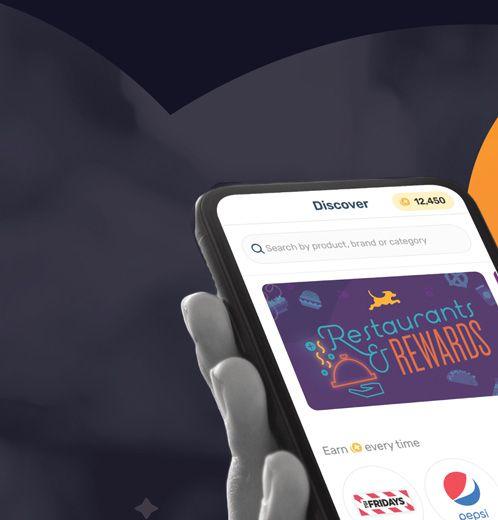


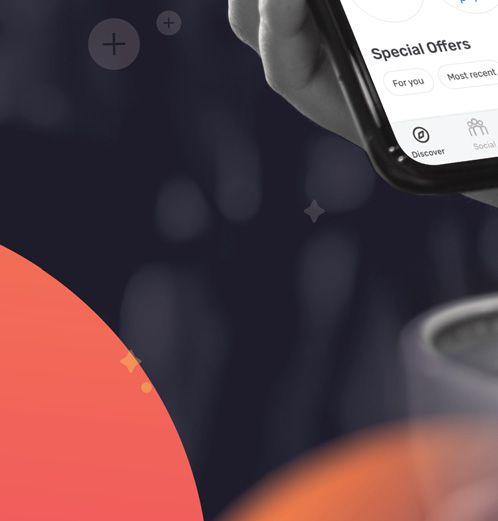
15 MILLION engaged Discover how Fetch can help your QSR brand stand out and go further. OVER in captured annualized retail sales $120B With Fetch, your restaurant brand can billions GENERATE PRECISELY TARGETED OFFERS
COMMUNICATIONS PAY FOR OUTCOMES, NOT IMPRESSIONS USE FIRST-PARTY DATA TO UNDERSTAND CUSTOMERS Download America’s
CUSTOMIZE
Diversity from the Top Down
BY HILARY DANINHIRSCH
and measurable steps.”
Some of these steps she sees brands take include mentoring, recruitment, and programs specifically aimed at increase diversity.
“I think it’s almost like vision statements and core values. Everyone has them, but for a lot of brands, they sat in the drawer and were never referenced; that is where diversity was. Now, we’ve taken everything out of the drawers and put it on the walls and are focusing on it as an industry,” adds Gagnon, who is also the chair of the International Franchise Association’s Women’s Franchise Committee.

Traditionally, some of the obstacles to becoming a franchise owner was the startup capital, which could be cost-prohibitive to many potential business owners, as well as the educational opportunities and skills required. That is why some companies are taking proactive measures to break down barriers, many of which disproportionately affected minorities.

Diversity in the workplace is a goal for many restaurant franchisors, as the benefits are numerous, from attracting more talent to being better able to serve its customers to an improved bottom line.
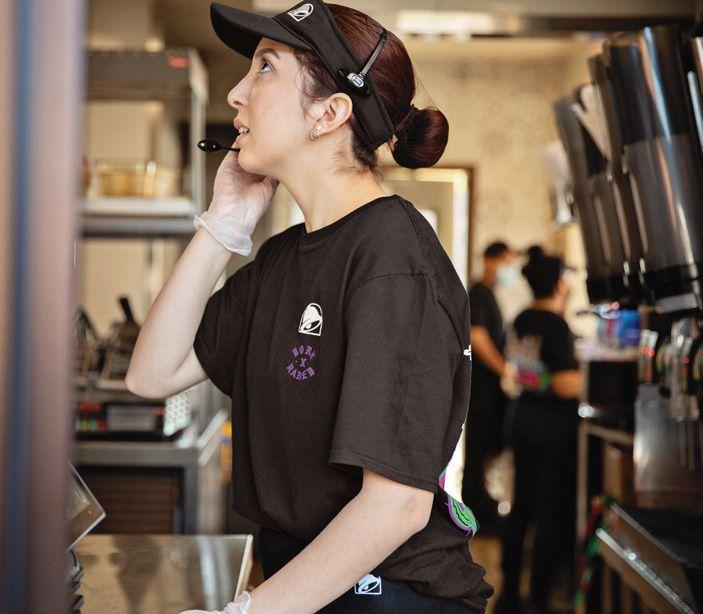
The U.S. Census Bureau reported franchise businesses were more likely to be owned by minorities than non-franchised businesses. Specifically, just over 30 percent are minority-owned, compared to 18.8 percent of non-franchised ones. The good news is there has been a steady and significant increase in the minority and female ownership rate across the sector, but there is still work to be done.
Robin Gagnon is the co-founder and CEO of We Sell Restaurants, a company specializing in business brokerage specifically for the restaurant industry. Gagnon said for the first time in more than two decades, there is a real push to address the diversity issue rather than it just being a discussion point. “Now, it’s absolutely on everyone’s radar; everyone is discussing how we can embrace a platform of diversity to make us stronger as a company and how we can appropriately reflect the audience around us,” she says. “The main thing is this incredible focus, and with focus, comes specific
To be a successful entrepreneur, you also need a social network. “The IFA found that entrepreneurs of color have smaller and less connected networks. Also, there is discrimination: unconscious bias that these entrepreneurs are facing,” says Abigail Pringle, president of international and chief development officer with Wendy’s.
These capital, educational, and social gaps are gradually being recognized and rectified through various initiatives across the industry.
In January, Yum! Brands, a Louisville, Kentucky, company with more than 52,000 restaurants including KFC, Pizza Hut, Habit Burger, and Taco Bell, initiated the Yum! Franchise Accelerator, a fellowship designed to advance underrepresented people of color and women interested in the industry. “This is an important part of the Yum! Brands ‘Unlocking Opportunity’ initiative announced last year. The initiative knocks down current barriers to entry such as lack of franchising education, knowing the right key franchising contacts at a brand or in the industry, and access to capital,” says Wanda Williams, Yum!’s head of global franchising.
“One of the gaps we have identified in terms of opportunity for success among some franchisees is education, so we are taking steps to make this education widely available to students and franchise professionals worldwide through the Yum!
TACO BELL
Taco Bell has continued to invest in employee education, inside and outside restaurants.
Franchising can prove a powerful vehicle for restaurants to create career opportunities.
DEPARTMENT FRANCHISE FORWARD CONTINUED ON PAGE 102 24 AUGUST2022 | QSR | www.qsrmagazine.com





























































TECHNOLOGY & INNOVATION THAT DRIVES THE OM • A compelling growth opportunity fromap brand with plenty of white space to ep affordably with efficient buildings, sm strong growth incentives • A proven concept with strong return investment and competitive growth ice to grow your portfolio • Metrics-driven management style imp profitability by developing efficiencies the business model Visit owncheck QSR or Call 8889139135 ©2022 Checkers Drive-In Restaurants, Inc. 4300 W. Cypress St., Suite 710, Tampa, FL 33607. 1. Checkers & Rally’s 2020 Franchise Disclosure Document (FDD). Written substantiation will be provided on request. This advertisement is not intended as an offer to sell, or the solicitation of an offer to buy, a franchise. It is for information purposes only. The franchisor, Checkers Drive-In Restaurants, Inc. is located at 4300 West Cypress Street, Suite 600, Tampa, Florida 33607, and is registered as file number F-4351 in the state of Minnesota. In New York, an offering can only be made by a prospectus filed first with the Department of Law, and such filing does not constitute approval by that Department. 20220300 H E BOTTO M LI N E om a proven national expand and grow maller footprint s and on incentives mproves es across EVOLUTION OF EXPERIENCE THE CHECKERS & RALLY’S
YEAR 1 OF COVID-19 WAS DEFINED BY DIVERGENT REALITIES.

Quick-service outlets fared far better than competitors. Once the initial wave of uncertainty passed (was it even safe to get food at the drive-thru?), the sector’s long-standing strength outside its four walls crystalized. Not only that, however, but the agility and innovation that’s always defined the category. And now? You could argue quick service, especially drivethru, has become the hottest retail ticket in town. As this year’s QSR 50 shows, many concepts aren’t recalibrating in the wake of the pandemic; they’re rocketing upward. Major growth prospects—at times in the fourdigit realm—are on the table for fast casuals and fast-food icons alike.
But the coast isn’t free of obstacles. This past year provided frequent hurdles, from Omicron to a continued labor battle that’s stretching well past the crisis. Buzzing topics like robotics, AI, automation, and integration, have popped up in response and handed operators more threads to connect with guests than ever. And in the end, we might just be headed for a golden era of quickservice growth unlike anything we’ve seen in decades.
/ BY DANNY KLEIN & BEN COLEY



McDonald’s


The top-earner in fast food rewrote its own record book in 2021. McDonald’s systemwide sales bumped 21 percent to more than $112 billion—a new high mark in company history. Domestically, McDonald’s samestore sales climbed 13.8 percent against a 0.4 percent lap in 2020. This, too, raised the bar; it signaled the highest-recorded comps performance since McDonald’s began reporting the metric in 1993 (and the seventh consecutive calendar of positive U.S. same-store sales)




Naturally, the top-line burst worked through the franchise system, which comprises roughly 95 percent of McDonald’s domestic base. Operators posted recordsnapping cash flow, with average growth of $125,000 per restaurant. The end result: North of $500,000, or a 50 percent increase over the past three years. Additionally, McDonald’s posted unprecedented operating income of more than $10 billion.


How McDonald’s got there was a familiar tale for restaurants a year removed from COVID’s initial assault on routines. The chain’s same-store sales benefited largely from average check growth as pricing rose about 6 percent (this number was 8 percent

1
P.62 ADOBE STOCK WOLTERKE 26 AUGUST2022 | QSR | www.qsrmagazine.com
* & JUMP STRAIGHT TO THE CHARTS P.50 WHY 2021 WAS A MIXED BLESSING FOR QSR 50 BRANDS
higher in Q1 2022 versus the prior year). Traffic remained on pace with 2019, for the most part, with monthly dining visits rising 2.1, 3.8, and 1.1 percent in August, October, and December, respectively, according to mobile location analytics platform Placer.ai.
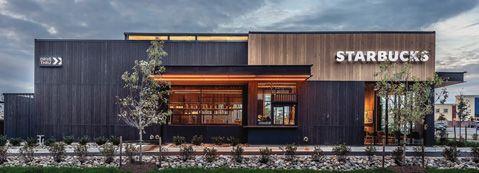
While in-store guest counts continue to adjust, McDonald’s digital sales surpassed $18 billion—also a record—and mixed more than 35 percent of its top six markets. In some, digital accounts for more than 50 percent of sales, like China and France. The single-biggest driver of digital adoption was MyMcDonald’s Rewards, which launched nationally in July. It lifted to more than 30 million loyalty members by year’s end, including 21 million active users. To date, the program has boosted frequency among members by more than 10 percent.
To start fiscal 2022, in those six markets, digital sales (mobile app, kiosks, delivery) accounted for more than 30 percent of systemwide sales. That equates to nearly 60 percent year-year-over expansion. In the U.S., McDonald’s generated over $2 billion in digital sales in just Q1 2022.
Delivery also ballooned to more than 33,000 restaurants in 100 countries. CEO Chris Kempczinski said in April McDelivery is now the largest quick-service delivery program in the world. Direct delivery is coming to the brand’s U.S. app later in the year.

McDonald’s, which in 2022 held its first worldwide convention in four years, ended 2021 with 13,443 domestic locations, a net decline of 239 stores. Globally, there were a tick more than 40,000 following net growth of 838 (China expanded by 608 units, the most of any country).

To sum up an eventful calendar, Kempczinski noted, “It’s clear there has never been a better time to be a part of brand McDonald’s than right now.”
Starbucks
Speaking of jam-packed years, few chains in quick service are undergoing as many changes as the java giant. It’s a conversation that starts at the top. In March 2022, Starbucks announced president and CEO Kevin Johnson’s plans to retire. Stepping into the interim role was none other than founder Howard Schultz, who previously served as CEO from 2008–2017 and 1985–2000 and as president from 2008–2015 and 1985–1994. In that wide stretch, Starbucks scaled from an 11-store brand with 100 employees to more than 28,000 locations in 77 countries.
And Schultz had no shortage of tasks ahead. He took a base salary of $1 and began tackling a topic Starbucks hadn’t quite faced before. The brand suddenly had more demand on its hands than it could serve to standard, which, from a certain angle, is a decent problem to have. But nonetheless, a rather expensive one to fix. As Schultz put it in May: “Simply said, we do not, today, have the adequate capacity to meet the growing demand for Starbucks coffees.”
Schultz credited COVID and the brand’s diverted focus to navigating the crisis. In turn, disruptions interfered with Starbucks’ ability to anticipate and invest ahead of the market. It didn’t adjust store designs, operations, infrastructure, or tech to service that “relentless demand.”
Perhaps the most publicized corner of this concerns
2
www.qsrmagazine.com | QSR | AUGUST 2022 27 QSR 50
DINE-IN RETURNED TO McDONALD’S, BUT ITS DIGITAL SALES ARE REWRITING THE RECORD BOOKS, UP TO $18 BILLION IN 2021. McDONALD’S, STARBUCKS MATT GLAC
labor and an ongoing union conflict. Organizing had spread to at least 150 locations by mid-summer.
In Q2 2022, Starbucks announced it would spend more than $200 incremental this year to investments already committed at domestic corporate stores. The total yearly bill: about $1 billion, with much of it going toward training, wage, and equipment updates intended to improve the company’s proposition, make jobs easier and more enjoyable, and yes, more lucrative.
Starbucks moved all U.S. employees to a $15 per hour floor on August 1. It then layered in incremental increases for domestic store workers. Average hourly pay at Starbucks hit nearly $17 per hour nationally, with every employee hired on or before May 2 getting either a 3 percent raise or $15 per hour (whichever was higher) Employees with two to five years of tenure got a 5 percent bump and those with five-plus years received a 7 percent hike. Starbucks doubled investments in store manager, assistant store manager, and shift manager pay for leaders hired on or before May 2.
Training for baristas jumped from 23 to 40 hours and Starbucks redesigned its “First Sip” training program alongside a fresh shift supervisor program as well. Training is no small point for Starbucks, as 70 percent of hourly employees were new to the brand last year.

Also notable: this suite of updates did not extend to stores mired in union activity.
Back on demand, Schultz wasn’t overstating. Starbucks’ mobile order and pay, a more than $4 billion business, is up 400 percent over five years (20 percent above 2021) and now mixes 70-plus percent of the chain’s U.S. store volume. The company’s $500 million delivery segment hiked 30 percent, year-over-year. Starbucks’ Card program, which boasts usage of about 120 million people, is alone larger than the entire gift card category. Starbucks’ consumers prepaid for $11 billion worth of purchases last year. Today, there’s north of $1 billion loaded on Starbucks Cards that hasn’t been redeemed. And the company’s rewards base in the U.S. last quarter lifted 17 percent over Q2 2021 to 27 million members. Rewards members delivered 54 percent of revenue— the highest level of engagement on record for Starbucks, and 2 percentage points up from last year. Handcrafted cold beverages now comprise roughly 80 percent of sales.
Going forward, Starbucks said 90 percent of new store growth will feature drive-thrus. And this coming fleet will integrate fresh store designs and technology, including more handheld devices and equipment improvements to boost throughput. Essentially, the line-busting tablets you see at an increasing number of brands coming out of COVID.
Drive-thru, mobile order and pay, and delivery col-


lectively totaled 75 percent of U.S. company-operated sales in Q2.
Across 2021, Starbucks’ Q4 global revenue reached $8.1 billion—22 percent higher than last year. The quarterly record closed out a fiscal-year best $29.1 billion.

“What we have to do is harness the issues that we have to deal with in terms of capacity, exceeding the expectations of our people,” Schultz said in May. “I’ve been here long enough to understand what the challenges are and long enough to understand the extraordinary opportunity Starbucks has in the marketplace domestically and around the world.”
Chick-fil-A
Anecdotes of packed Chick-fil-A drive-thrus (yet still efficient) were easy to find throughout the pandemic. So telling somebody the brand surged out of lockdowns doesn’t feel like some grand news leak. But just how high Chick-fil-A reached was eye-opening. Diving deeper into Chick-fil-A’s financials, of the brand’s 1,836 U.S. freestanding restaurants outside of malls (those open and operated for at least a full calendar year, from a total of 2,023), average annual sales volumes clocked in at $8.142 million last year, with 849 of those, or 46 percent, producing figures at or above. One operator pushed $17.16 million. Roughly 35 percent of the pool generated annual sales volumes under $7.2 million; 34 percent between $7.2 and $9 million; and 31 percent above $9 million.
Chick-fil-A’s AUV was also nearly 15 percent better than its 2020 result. So the brand’s upward mobility is clearly a long-term trend, not one born from the drivethru, COVID era.
Even mall stores (no drive-thru) generated AUVs of $3.2 million last year, nearly that of McDonald’s ($3.42M)
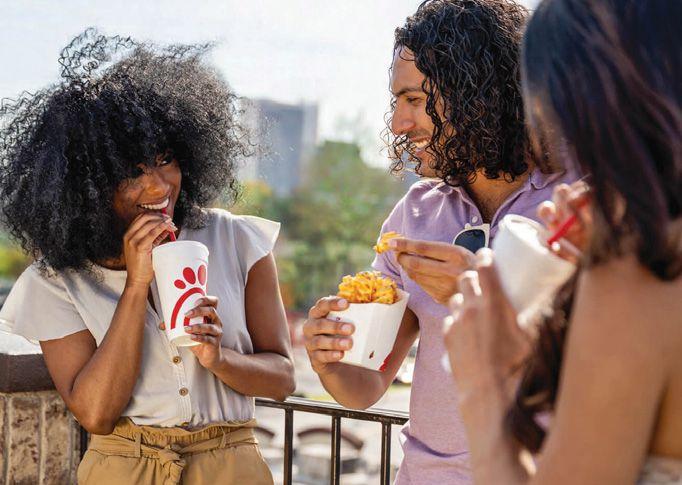
3
CHICK-FIL-A’S PACKED DRIVETHRUS WERE ANYTHING BUT A MIRAGE IN 2021: AUVs TOPPED $8M AT FREESTANDING LOCATIONS.
STARBUCKS / CONNOR SURDI (2), CHICK-FIL-A (3); TEA: ALI HARPER 28 AUGUST 2022 | QSR | www.qsrmagazine.com QSR 50
STARBUCKS PLANS TO SPEND UPWARD OF $1 BILLION THIS YEAR TO BOOST TRAINING, TECH, AND THE EMPLOYEE PROPOSITION.


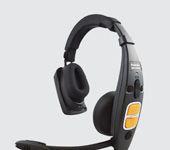



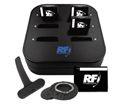








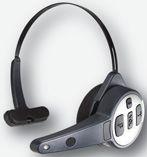





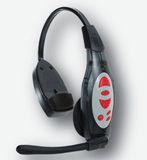
The numbers don’t trail off. Chick-fil-A grew by 155 locations stateside in 2021. Revenue climbed to $5.8 billion, well ahead of the $4.3 billion it appreciated in 2020 and $3.8 billion the year prior. Comprehensive earnings of $1.198 billion sailed $715.9 million ($647 million in 2019). Systemwide sales over the past three years lifted from $12.2 to $13.7 to $16.7 billion.
Amid this boom, Chick-fil-A also underwent a change of leadership. Chick-fil-A executive Dan T. Cathy stepped down in November after an eight-year run. Andrew T. Cathy, Dan Cathy’s son, took over, while Dan Cathy remained chairman of Chick-fil-A.
Andrew Cathy, only the chain’s third CEO, began his Chick-fil-A career in 2005, working two years as operator of a store in St. Petersburg, Florida.
He’s now holding the reins of arguably the fastestgrowing (from a financial perspective) brand in fast food. In the future, this could include further international expansion into Toronto as well as continued growth in Puerto Rico, where the first Chick-fil-A opened
All told, Chick-fil-A is fronting a chicken category that shows no signs of slowing.
4 Taco Bell
This past year saw Taco Bell lean further into what’s historically set it apart—distinctive products, value, and an operational backbone that supports it all. The Yum! Brands chain’s 2021 system sales grew 13 percent, driven by 11 percent same-store sales growth and 5 percent unit expansion. In the U.S., Taco Bell finished with more than 7,000 locations and “ample whitespace for future developments,” CFO Chris Turner said in Yum!’s year-end review. Also, Spain became the first international market to surpass 100 units in the quarter.
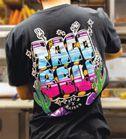
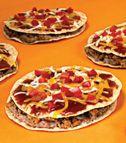
Taco Bell’s overseas conversation is one worth tracking. It added more than 160 net new units on a base of just 600 coming into the year, or 26 percent growth. CEO David Gibbs called Taco bell’s international runway “probably one of the most exciting stories we have right now.”
The aim for Taco Bell is to reach scale in a few key markets and drive brand awareness, ultimately improving new unit returns to support accelerated growth.

In 2022, Turner said Taco Bell is on track for another record development year with next-gen assets in the U.S. and additional markets outside the country. One recent announcement being Yum! China’s commitment to expand the brand, which will give Yum! three markets above the 100-unit lever by the end of 2022 (Spain, U.S., China)
It was a banner calendar, development wise, across all of Yum! in 2021. The company debuted a net of 1,259 restaurants in Q4, pushing the year-end total to 3,057 net new openings. The previous record was 2,040 in 2019.
Overall, Yum! added 4,180 gross units, putting an exclamation mark on what Gibbs called “the strongest growth year in our history and setting an industry record for unit development.”
For perspective, the company opened a new restaurant on average every two hours. Taco Bell represented 12 percent of those net new openings with 364.
Returning to the ops angle, Taco Bell’s drive-thru times last year were 2 seconds faster, year-over-year, with Q4 marking the eight consecutive period of average sub-4 minute times. That became nine straight in Q1 2022. “This is truly an impressive performance considering labor availability challenges,” Turner added.
Taco Bell’s domestic digital sales rose nearly 20 percent as Yum! collectively pushed a record $22 billion. Following KFC’s lead, Taco Bell is currently in the process of rolling pickup shelves into stores. Thus far, early tests are freeing up drive-thru capacity. Yum! is also installing a new kitchen display system and smart hub, and leveraging its cloud-based point-of-sale in Taco Bell stores with the hope of modernizing the employee experience. The systems separate delivery orders from standard drive-thru ones.
This year marks Taco Bell’s 60th anniversary. Gibbs noted in May the chain would continue to stay relevant by championing customer value, including the introduction of $2 burritos on Taco Bell’s new Cravings Value Menu, which joined the chain’s existing $1 offering.
And on the marketing side, Taco Bell had plenty to talk about, as usual, with crispy chicken wings hitting stores for a limited time, as well as Nacho Fries. It then mic dropped the buzzy return of Mexican Pizza, cut in 2020 for simplification and sustainability reasons, with artist Doja Cat at Coachella (a musical featuring Dolly Parton premiered on TikTok in late May as well )
Taco Bell’s Q1 2022 system sales hiked 8 percent on 5 percent unit growth and 5 percent same-store sales expansion. Domestic comps increased 5 percent. All were among the top tier of quick-service results industry-wide to start the year.

TACO BELL (4) 30 AUGUST 2022 | QSR | www.qsrmagazine.com QSR 50
TACO BELL CARRIED AMPLE MOMENTUM INTO ITS 60 TH ANNIVERSARY AFTER ANOTHER STELLAR YEAR.




Deliver Dine-In Quality When You Protect Temperature and Texture, Your Customer Will Taste the Difference The only container that keeps food hot & crispy for 30-minutes on the go Consumer Reusable • Microwaveable • Curbside Recyclable • Full Assortment of Shapes and Sizes Made in the USA CRISP FOOD TECHNOLOGIES® CONTAINERS anchorpac.com ©20 ©2 22 Anc hor Pa cka g in g ® LLCSt. Lou is, Mi sso uri FREE SAMPLES TEST & TASTE E FOR OR YOURSELF EL
Wendy’s
Wendy’s labeled 2021 a “breakthrough year” as it notched its 11th consecutive run of global same-store sales growth. In Q4 specifically, Wendy’s U.S. comps accelerated to 11.6 percent on a two-year basis. The chain’s breakfast sales—a daypart that launched on the doorstep of COVID in March 2020—expanded roughly 25 percent across the year ( breakfast recently launched in Canada on May 2, 2022 as well)
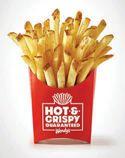
Wendy’s digital business reached 10 percent of sales globally in Q4, with its loyalty program upping total membership by about 75 percent and monthly active users 25 percent throughout the course of the year.
With expansion itself, Wendy’s delivered 121 net new restaurants—it sixth straight year of net new restaurant growth and its highest figure in nearly two decades. This included the opening of Wendy’s first U.K. restaurants and its 1,000th international store. Also, the debut of 30 Wendy’s delivery kitchens with REEF across the U.S., Canada, and the U.K.
Worth noting, too, roughly 50 percent of Wendy’s growth came via nontraditional means (REEF included)
On the latter topic, REEF’s units boast average-unit volumes in the $500,000–$1 million range, with Wendy’s collecting about a 6 percent royalty rate income compared to its typical collection of 4 percent. So the higher number turns in similar economics, despite lower AUVs. But the REEF path, as much as the dollar figures, will help Wendy’s narrow what’s historically been a significant gap relative to peers—an underpenetrated footprint in urban markets.
In 2022, Wendy’s expects to debut 150–200 REEF kitchens globally—about 65 percent in the U.S.; 10 percent in Canada; and 25 percent in the U.K. And nontraditional, broadly, will continue to mix 40–50 percent of the brand’s path.
As significant a growth stretch as 2021 was for Wendy’s, it still came in at about 2 percent. That’s about to step up to as high as 6 percent in 2022. Already this year, Wendy’s kicked off Q1 by opening a net of 67 locations (45 domestic). That was a meaningful bump from Q1 2021 when Wendy’s expanded by a net of 10 stores and “one of our best quarters in in our history for unit growth,” CEO Todd Penegor said at the time.
And despite inflationary challenges and other external hurdles, Wendy’s stretched its streak of growing or maintaining category burger dollar share to 11 quarters.
Elaborating on breakfast, the daypart represented about 7 percent of sales in Q1, which was down from 7.8 percent a quarter earlier due to Omicron and weather setbacks. But the brand feels confident in its plan to reach $3,000–$3,500 in average weekly sales per store (it was about $2,500 in Q1) and grow the business by 10–20 percent for the full year. A reason for optimism—legacy stores that offered breakfast pre-2020 launch are pushing $4,000–$4,500 per unit.
As Wendy’s tacks on new units, it’s also reimaged about 75 percent of its 7,000 locations globally. Revenues in Q1 climbed 6.2 percent to $488.6 million.
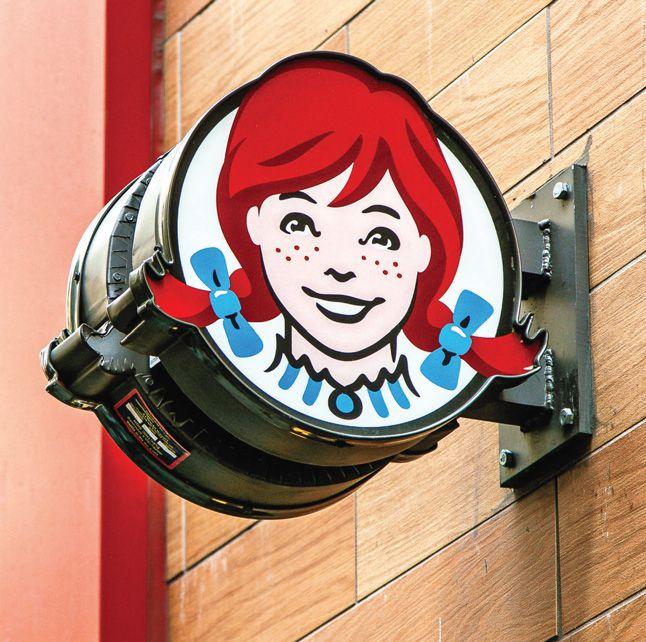
Domestic same-store sales gained 1.1 percent to begin 2022 against a prior-year lap of 13.5 percent. Globally, the brand achieved its second consecutive period of double-digit two-year comps at 15.4 percent. Internationally, Wendy’s same-store sales gained 14.1 percent, which helped elevate the systemwide figure to 2.4 percent.
Dunkin’
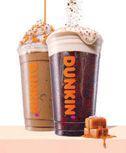
The first change in this year’s QSR 50 comes at No. 6, with Dunkin’ moving up a slot. The brand spent most of 2020 sprucing up its footprint, including the exiting of 450 Speedway stores along the East Coast, which represented less than 0.5 percent of U.S. sales. Overall, Dunkin’ closed a net 547 units that year; these were stores that had low average weekly sales, couldn’t support beverage innovation or a NextGen remodel, or were based in areas where traffic shifted and they couldn’t relocate or add drive-thru. Former Dunkin’ CEO Scott Hoffman called it a “good scrubbing of the portfolio.”
But 2021 told a different story. Under new owner Inspire Brands—which spend $11.3 billion to acquire the chain at the end of 2020—Dunkin’ debuted a net of 161 outlets last year. Same-store sales rose 15.5 percent in 2021 year-over-year and increased 10.4 percent on a two-year basis.
The beverage and doughnut chain continued its momentum in February, opening its first co-branded
6
5
WENDY’S HAS TURNED IN SIX STRAIGHT YEARS OF NET NEW GROWTH.
ADOBE STOCK
32 AUGUST 2022 | QSR | www.qsrmagazine.com QSR 50
DUNKIN’ SAW ITS SAME-STORE SALES POP 15.5 PERCENT IN 2021.
ROMAN TIRASPOLSKY, WENDY’S, DUNKIN’
Imagine if your dining tables wouldn’t wobble even in places like this. FLAT® Table Bases and Equalizers can adjust to almost any surface to bring stability to your operations. Learn more at FlatTech.com or call 855-999-3258.













Stable. Even here.
location with Jimmy John’s inside the main lobby of Inspire’s Global Support Center in Atlanta. The kiosk is digital only, meaning all orders are placed ahead of time through either the Dunkin’ or Jimmy John’s app.
7
Burger King
Throughout 2021, RBI CEO Jose Cil and his executive team acknowledged Burger King wasn’t performing up to expectations. To close last year, the brand’s U.S. samestore increased 1.8 percent year-over-year, but slid 1.1 percent on a two-year basis. In Q1, comps declined 0.5 percent compared to the year-ago period.
But the quick-service giant put a turnaround strategy in place, starting with promoting previous COO Tom Curtis to president of U.S. and Canada. The industry veteran, who previously spent multiple decades at Domino’s, was charged with leading a comprehensive agenda spanning multiple areas, including operations, digital enhancements, menu innovation, and refresh branding.
Two of the biggest accomplishments in 2021 were the nationwide launch of the Ch’King Sandwich and the unveiling of Royal Perks, the company’s new rewardsbased loyalty platform. The brand also looked to elevate multiple metrics, including hours of operation, staffing, speed of service, and average complaint ratios.
More progress was made through the first part of 2022. Burger King not only hired a new creative agency of record—a company that’s also worked with the likes of Chili’s, Nike, Taco Bell, Pizza Hut—to improve effectiveness of its messaging, it also put more focus on premiumizing the Whopper. The brand removed the burger from core discounting and rolled out the Whop-
Subway
For Subway, 2021 was one of the most impactful years in recent memory. The chain said it beat sales projections by almost $1.4 billion and reached its highest annual AUV in seven years. More than 16,000 locations, or about 75 percent of the U.S. system, experienced a 7.5 percent increase in same-store sales versus 2019. Domestic comps rose sequentially throughout 2021 and were positive from Q2 to Q4. In the final month of the year, same-store sales lifted 8.7 percent compared to 2019.

The sandwich chain owed its success to “Eat Fresh Refresh,” the biggest menu update in the brand’s 56-year history. The launch involved 11 new ingredients, six new or returning sandwiches, and four revamped signature products. Paul Fabre, senior vice president of culinary and innovation, said Subway spent 18–24 months enhancing the bread alongside a panel of bakers, including Nancy Silverton, who won the James Beard Foundation’s Outstanding Chef Award in 2014.
In addition to the menu innovation, the fast-food chain debuted an updated mobile app with a new dashboard and less friction and partnered with DoorDash to roll out direct delivery through its website and app. Subway’s digital sales surpassed $1.3 billion in 2021, which is three times as much as 2019.

In terms of U.S. development, the brand is continuing to clean its portfolio. Subway shed a net of 1,043 restaurants in 2021, after cutting a net of roughly 1,600 in 2020.
per Melt, which proved to be incremental to the burger platform and showed strong messaging with highquality ads. The product was teased as the first of more Whopper-centric innovation to come.
The efforts haven’t been in vain either. In early May, Cil said Burger King narrowed the gap between its peers by a few hundred basis points in Q1 and that guest satisfaction has elevated sequentially over the past three quarters.
Domino’s
Last year was a mixture of positive and not-so-positive news for Domino’s.
From the optimistic perspective, unit economics remained best in class, with U.S. stores earning $1.3 million in AUV and more than $170,000 in store-level EBITDA. Full-year same-store sales rose 3.5 percent—14.7
8
SUBWAY’S EAT FRESH REFRESH CAMPAIGN HELPED LIFT AUVs TO LEVELS NOT SEEN IN SEVEN YEARS.
9
BURGER KING ASYLAB, SUBWAY 34 AUGUST 2022 | QSR | www.qsrmagazine.com QSR 50
Leave Your Ice to the Ice Machine Experts

Take the stress out of your ice supply with an Easy Ice subscription.







Our subsciptions include:



















An Easy Ice subscription is the perfect solution for the business owner who doesn’t want to think about ice. It’s also the best way for restaurant brands with multiple locations to streamline their ice supply.



percent on a two-year basis—marking the 13th consecutive year of positive growth. Additionally, CEO Russell Weiner said no one in the pizza category has opened as many U.S. restaurants as Domino’s in the past few years. The brand, which already earns more U.S. sales than any other pizza chain, surpassed Pizza Hut as the biggest when it comes to domestic footprint, with 6,560 stores.
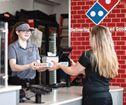

However, in the background of all those successes has been an ongoing labor shortage that’s carried over into 2022. After 41 straight quarters of positive U.S. comps, Domino’s saw decreases of 1.9 percent in Q3 2021 and 3.6 percent in Q1 2022, driven by shorter operating hours, disruption in customer service, and lapping federal stimulus. In the first quarter, the number of combined lost operating hours equated to the entire U.S. system being closed for six days. To mitigate increased labor and commodity costs, Domino’s switched its $7.99 carryout deal to only online, a more profitable sales channel for the brand. And for its $5.99 Mix and Match deal, it increased the price by $1 for delivery orders.
Prior to the macroeconomic issues, no company rejected third-party delivery companies more than Domino’s, however, Weiner noted in late April that “nothing is off the table” when asked about future potential partnerships.

Weiner took over as CEO in May for the retiring Rich Allison, who joined the company in 2011. 10
Chipotle
Count Chipotle among the quick-serves rocketing growth out of the pandemic. The brand announced in Q4 it was tacking on 1,000 North America locations to its previous long-view goal, meaning there could be at least 7,000 stores in time. What’s giving Chipotle confidence is a multifold story. For starters, you can look at the stock market to get a sense of how far it’s come since ex-Taco Bell leader Brian Niccol grabbed the CEO reins in winter 2018. When he did, Chipotle traded for $314.72 on February 1, 2018. As the fast casual reviewed Q4 earnings with investors this past year, the figure was north of $1,560 per share.
Along the way, Chipotle accelerated several pillars of its business while shoring up operations. It’s simply figured out a way to get food out quicker. The most talked-about element of this has been digital, where the chain’s full-year sales hit $3.4 billion last year. For reference, the figure is nearly three-and-half times what Chipotle reported pre-COVID in 2019. And that despite the fact two-thirds of guests still use in-restaurant as their exclusive channel, Niccol said in February.
In other terms, there are still occasions to chase. The consumer base deploying both digital and in-store remains relatively small. Chipotle expanded from 8.5 million rewards loyalty members in February 2020 to north of 26 million by year-end 2021.
What’s more, though, is how Chipotle continues to integrate channels with asset development, which really began with second-make lines for digital orders. Of late, it’s taken on more visible, guest-facing forms. Chipotle opened 215 new restaurants last year, including 78 in Q4 alone. Of those, 174, or 81 percent, included the brand’s order-ahead pickup “Chipotlanes.”As 2022 arrived, Chipotle had 355 of them. Still, while growing and spreading quickly, Chipotlanes represent a fraction of Chipotle’s 2,966-unit system.
But going forward, Chipotlanes are going to take on a larger role. The brand plans to open 235–250 stores in 2022, and north of 80 percent will be equipped with the feature.

Chipotle’s broader growth appears to have crossed an inflection point that it’s not turning back from. It opened just 40 locations in the three-month period that ended December 31, 2018, or Q4 of that year. The same timeframes ending March 31, June 30, and September 30 (all in 2019) saw openings of 15, 20, and 25 locations, respectively. In June 2018, Chipotle announced a revamp that included closing 55–60 stores. The chain had 2,408 restaurants on December 31, 2017 and 2,491 a year later. More than half of Chipotle’s stores have built in the past decade.
So this growth journey evolved quickly. Chipotle arguably saved its biggest innovation for last with the opening of its first Chipotlane Digital Kitchen in Cuyahoga Falls, Ohio. In addition to the mobile order drive-thru lane, the location includes a walk-up win-
dow, but no dining room or frontline. It’s smaller than a traditional Chipotlane stores and features a make-line dedicated to fulfilling digital orders from the website/ app and third-party delivery partners.
The Chipotlanes, in particular, fit into the brand’s directive to open in more “small towns” across the country as well. We’re talking towns with 40,000-plus people, which isn’t tiny, but is “small” by the brand’s historic
DOMINO’S IS FACING LABOR CHALLENGES BUT REMAINS AT THE TOP OF THE PIZZA PYRAMID.
DOMINO’S (3) CONTACTLESS DELIVERY & PICKUP:º BRENT FEEMAN, CHIPOTLE 36 AUGUST 2022 | QSR | www.qsrmagazine.com QSR 50
CHIPOTLE’S GROWTH PROSPECTS ARE PICKING UP, AND SWITCHING GEARS, WITH 80 PERCENT OF NEW DEVELOPMENT INCLUDING PICKUP LANES.
Fresh, Quality Milk








































Made from fresh, local milk gathered only a few hours after milking, BelGioioso Fresh Mozzarella begins with quality ingredients and care. The result is a delicate, Fresh Mozzarella with a soft texture and porcelain white appearance –the finest available on the market today. Available in waterpack tubs and cups, thermoform logs and balls, and slicing loaf. belgioioso.com
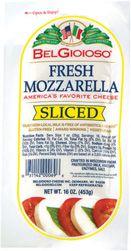
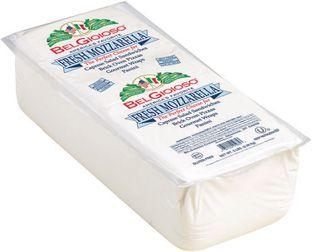

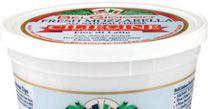





















rBST Free* | Gluten Free | Vegetarian *No significant difference has been found in milk fromcows treated with artificial hormones.
standards. These stores, the company said, deliver unit economics at or better than traditional locations. Chipotlanes, in general, do that, too; they produce higher volume, skew toward digital (namely higher-margin takeout), and generate cash-on-cash returns in the 65–70 percent range within a couple of years.
Chipotle’s financials support the expansion. Total revenue in 2021 rose 26.1 percent to $7.5 billion, year-overyear. Same-store sales climbed 19.3 percent and digital sales upped 24.7 percent (45.6 percent of the business)
In Q4, revenue rose 22 percent, year-over-year, to $2 billion, and comps hiked 15.2 percent. Digital sales, even against 2021’s skyrocket from COVID conditions, ticked up 3.8 percent to 41.6 percent of sales ($811 million, with delivery mixing about 20 percent). Average-unit volumes also reached $2.641 million from $2.223 million two years ago.
A key for Chipotle amid growth will be staffing, where turnover at the hourly level reached 194 percent last year—well ahead of 141 percent the year prior. While a kickback of external realities (Omicron-triggered turnover exclusions among them), it’s something Chipotle plans to address throughout. In May, the chain footed the bill of higher wages, making the call to boost average rates to $15 per hour by the end of June. The upgraded scale resulted in hourly employees earning day one pay of $11–$18. Additionally, Chipotle outlined a path to “Restaurateur,” a six-figure GM position hourly workers can reach within three-and-half years. Chipotle then rolled a $200 employee referral bonus for crew members and a $750 one for apprentices and GMs.

In 2021, alongside the lofty turnover rates, 90 percent of restaurant management roles at Chipotle came from internal promotions. On average, six employees were promoted per restaurant for a total of nearly 19,000. The company’s internal promotion rate was 77 percent for apprentice and GM roles in 2021.
Sonic Drive-In

Sonic parent company Inspire Brands opened more than 1,400 units in 2021, including over 500 U.S. franchiseled stores. The group, founded February 2018 following Arby’s Restaurant Group’s $2.9 billion purchase of Buffalo Wild Wings (the portfolio now includes Baskin-Robbins, Dunkin’, Rusty Taco, Jimmy John’s, and Sonic as well), generated domestic digital sales growth north of 35 percent, year-over-year, to $6 billion-plus—good for more than 20 percent of U.S. system sales. Inspire also surpassed $1 billion in sales via third-party marketplace. Overall, digital moved north of $7 billion for Inspire.
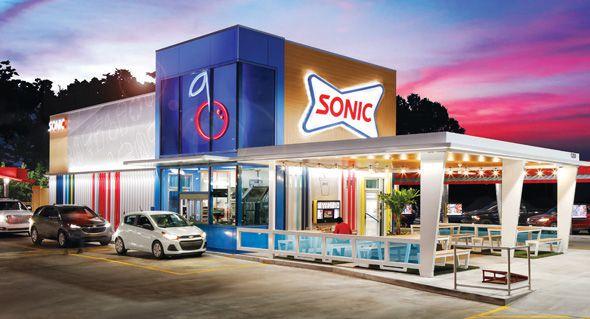
Regarding Sonic, the chain turned in the best twoyear same-store sales performance of the fleet at 25.8 percent (Baskin at 13.6 percent; Jimmy John’s 11.8 percent; Arby’s 11.7 percent; Dunkin’ 10.4 percent; Buffalo Wild Wings 1.2 percent followed)
It’s no great secret what fueled Sonic’s performance— its carhop-style, car-picnic ready setup was ideally matched for a COVID climate. Put differently, the brand’s pull-up design and throwback DNA became the leading “old-is-new” outlet of a pandemic.
But Sonic didn’t sit back on those laurels. Its digital infrastructure, known fittingly as ICE (integrated customer engagement), was built to secure a leadership role in quick-service personalization. And that only picked up in 2021. Sonic’s mobile-order ahead technology works as part of an overall environment in ways other chains
can’t replicate via drive-thru or dine-in service alone. Guests scroll through menu options, place an order, customize it, and then drive up to a pad full of pull-in stalls. They upload the number of their stall, get a personalized greeting on a digital menu screen, and sit back and wait.
The end solution is something drive-thru brands could only hope for as capacity stuffed last year—the ability for guests to be first in line every time. So as queues in the sector crowded across the year, Sonic didn’t miss a beat. The next choice Sonic made was to allow customers to tip carhops via its app. By October, the chain had brought in nearly $12 million in tips, which helped it compete on the labor front.
The capability also followed Sonic’s development of a web-based ordering platform. Doing so opened the funnel for a wave of new customers, CMO Lori Abou Habib said in March: people who might have been quite ready to download Sonic’s app, yet wanted to try out its digital ordering capability. Guests access rewards as well promotions through web ordering, which enables Sonic to incentivize visits for medium to light users.
During COVID, Sonic witnessed an influx of first-time consumers using its app in addition to core users simply accessing it more often. The brand deployed a crossfunctional acquisition strategy between its text program and the app, trying to get one guest to try the other. Sonic also did a TV spot talking about the ability to leverage contactless order and payment. Outside of that, though, Sonic just stayed the course. “A lot of that just seemed to happen organically,” Abou Habib said.
11
SONIC DRIVE-IN (3) 38 AUGUST2022 | QSR | www.qsrmagazine.com QSR 50
SONIC’S MODEL WAS BUILT FOR COVID CONDITIONS. NOW, IT’S EVOLVING FOR WHAT COMES NEXT.
Double-Check ACRELEC


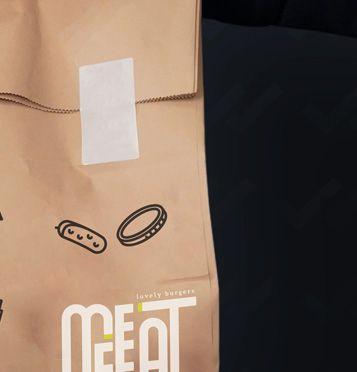







Don't send any more incorrect orders.






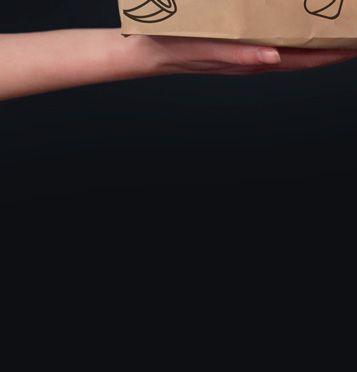




This includes the continued development of a “Delight” prototype that’s initial build featured 18 docks, a drive-thru, and a covered outdoor patio where guests could dine under string lights and enjoy lawn games.
Panera Bread
The digital revolution didn’t sneak up on Panera. Well before 2020, the chain’s off-premises business eclipsed 50 percent of sales. Yet there was room to innovate around a growing wave, especially within stores themselves.
In the winter of 2020, just weeks ahead of COVID, Panera started conceptualizing a fresh layout that would eventually be labeled Panera’s “NextGen” model. It debuted in November 2021 as a 3,500-square-foot venue in Ballwin, Missouri, 7.6 miles from the company’s first restaurant. Built in tandem with ChangeUp, the same agency that worked with Taco Bell, Jimmy John’s, and Panda Express, it features a double drive-thru, with one lane dedicated to mobile orders (called “Rapid Pick-Up”) Panera equipped digital menuboards to ease friction and tapped geo-fencing technology to pinpoint MyPanera loyalty members when they arrive at the cafe. Once identified, the customer is greeted by name.


Inside, guests can wait in line, use a digital kiosk, pick up their takeout meal, or go straight to a table and use Panera’s app to order a contactless dine-in meal. Consumers also have the option of pulling up curbside and waiting for an employee to run out. “Panera’s NextGen cafes signal our company’s vision for the future of fast-casual dining—a frictionless, tech-powered yet warm and personalized dining experience,” CEO Niren Chaudhary said earlier in the year. “It’s fully focused on taking pride in baking, our strong commitment to our food values, and continuing our leadership in technology.”
The store also boasted a refreshed “Mother Bread” logo that nods to Panera’s bakery legacy and its more
than 30-year-old sourdough starter. Inside, wayfinding spotlights Panera’s omnichannel movement. The restaurant includes a pickup area near the door so to-go guests can enter/exit seamlessly without moving farther into the cafe and creating additional congestion. Additionally, an overhanging mirror reflects a multitude of treats, and bakery ovens and tables are in full view.
The DNA of the design will be represented in all Panera restaurants going forward, except for a handful of units that were conceptualized prior to the fast casual landing on its prototype.
The NextGen store in Missouri is about 20 percent smaller than Panera’s most recent standard prototype as well. Previously, locations required a $1.5 million investment to build, but the latest design is closer to $1.3 million. Over the past couple of years, Panera’s pivot to more off-premises and digital orders was fueled by deals like its MyPanera+ Coffee subscription program, which offers unlimited iced and hot coffee and hot tea for $8.99 per month—any size, any flavor, and redeemable every two hours. The company also debuted Flatbread Pizza, a portable food segment that saw record-breaking sales when dining rooms were restricted.
In April, Panera launched a subscription program for all of its self-service beverages and other drinks called the “Unlimited Sip Club.” For $10.99 per month, MyPanera loyalty customers can sign up for the Unlimited Sip Club and have access to 26 drinks, including hot and iced coffee, hot and iced teas, Agave Lemonade, Pepsi products, and new beverage platform, Charged Lemonades. According to Apptopia, the deal drove more new installs than the original coffee subscription launch and surged engagement. The Panera app, as of May, hit new records for daily active users almost every day since the launch of Unlimited Sip Club.
Pizza Hut
Of all Yum!’s brands, Pizza Hut experienced the biggest turnaround. In 2020, it closed a net of 1,063 stores globally as it continued a years-long shift to adjust assets more toward a carryout, delivery friendly fleet. Last year, however, Pizza Hut opened a net of 742 locations, or 24 percent of Yum!’s total net unit expansion. Pizza Hut’s international markets debuted a net of 755 units, while the U.S. declined by a net of 13 stores. Although the company dropped in domestic unit count, it’s still much better than 2020, when U.S. markets closed a net of 745 restaurants.
On the top line, U.S. comps grew 10 percent on a twoyear basis in Q4, and 9 percent for 2021. Internationally, same-store sales declined 3 percent in Q4 and dropped 5 percent in 2021. Pizza Hut ended 2021 with 18,381 stores, including 11,833 internationally and 6,548 in the U.S. Pizza Hut’s comeback has myriad layers. But it began with a look back.
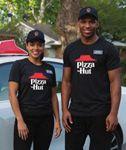 PANERA IS HEADED INTO THE FUTURE WITH A NEXTGEN RESTAURANT THAT’S BUILT FOR AN OMNICHANNEL WORLD.
PANERA IS HEADED INTO THE FUTURE WITH A NEXTGEN RESTAURANT THAT’S BUILT FOR AN OMNICHANNEL WORLD.
13
12
PIZZA HUT’S TURNAROUND BEGAN WITH A TOUCH OF NOSTALGIA.
40 AUGUST 2022 | QSR | www.qsrmagazine.com QSR 50 PANERA BREAD (2), PIZZA HUT
We Make Hiring Easier.
Hiring Technology built for restaurants. Efficient Hire has been helping franchisees with paperless hiring for the last 10 years and continues to be the leader and top choice for restaurants. Efficient Hire makes hiring simple and cost effective so that you can focus on supporting your customers.
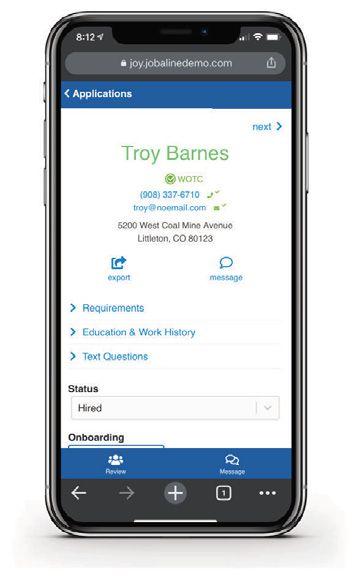
Applicant Tracking & Recruiting
• Improve your candidate experience with a mobile and text-first solution that works!
• Post to 100+ job sites with one click and use in-store QR code flyers to drive the best applicant flow

• Engage via text and automatically schedule interviews for your managers to hire fast


• Gain real-time visibility with recruiting performance reports
Work Opportunity Tax Credits
• Reduce or eliminate tax liability by gaining thousands in tax credits for each new eligible new hire
• All new hires are screened during onboarding, so you maximize potential credit
• Earn a 4:1 average ROI
Onboarding
• Reduce the time and effort spent gathering new hire paperwork
• All W-4, state tax forms, I-9/ E-Verify, arbitration agreements & company policies are easily signed and electronically secured
• Ensure consistency & compliance across locations
• Guarantee you are 100% compliant
ACA Benefits Management
• Schedule eligibility notices with ease

• Use real time eligibility tracking to reduce your Letter 226J risk and fines
• Electronically file with the IRS




Visit www.efficienthire.com 800.859.7479 sales@efficienthire.com
Get FREE Demo
KFC’s former U.S. president Kevin Hochman (he headed over to Brinker International in May to succeed retiring Wyman Roberts as CEO), along with current Pizza Hut U.S. president David Graves, spearheaded the chain’s repositioning. It started by asking, “when we were at our best, why was this brand so special?” And the result, in addition to moving away from a heavy dine-in footprint, was to launch a “Newstalgia” campaign focused on recognizable and differentiated products, as well as messaging and branding relevant and memorable across generations (think Pac-Man augmented reality)
Also, the introduction of pickup windows in “Hut Lane” models—late March—that essentially sprung up in 1,500 locations overnight. The reason this was feasible now compared to pre-COVID, was the fact stores were digitally enabled so customers could simply access the feature through the ease of their preferred devices. Pizza Hut had, in fact, drive-thru windows scattered throughout the system. They didn’t do much business, though, since guests weren’t digitally connected. Contactless curbside—which Pizza Hut raced ahead of the pack on in mid-April 2020—uncovered the opportunity and introduced guests to new channels. Pizza Hut expects close to all of its new non-inline builds to include Hut Lanes.
On the culinary side, hallmark innovations became the staple. Detroit Style Pizza, an early 2021 LTO, sold out in a couple of weeks. In May, the company entered the Metaverse. During ComplexLand in late May (a virtual curated shopping experience), Pizza Hut met pizza lovers with custom designed delivery vehicles and drivers, nine NFTs, and the chance to win free pizza for a year.
Labor challenges have surged of late, however, which is not unique to Pizza Hut but a challenge facing the category as a whole in regard to delivery drivers. The chain’s U.S. same-store sales declined 6 percent in Q1 2022 with flat unit growth. CEO Gibbs said consumer demand was strong, but the brand experienced softness through the delivery channel, where capacity constraints limited ability to meet orders.
In response, Pizza Hut completed integration of deliv-

ery as a service into its point-of-sale—a change that led to accelerated system adoption, Gibbs added, and Pizza Hut’s ability to leverage third-party aggregators to augment its own delivery fleet. The chain noted thirdparty drivers during peak periods would help Pizza Hut address challenges. Also, “it’s part of our strategy for wanting to be ubiquitous, be everywhere that our customers want to do business with us,” CFO Turner said.
One franchisee who moved to aggregator platforms, the company said, was running about 4 points ahead of the system on the top line, mainly driven by incremental customers the operator found through those marketplaces.
Pizza Hut is also piloting its Dragontail platform in more than 100 U.S. stores. The end-to-end AI-based solution automates kitchen flow combined with the process of dispatching drivers.
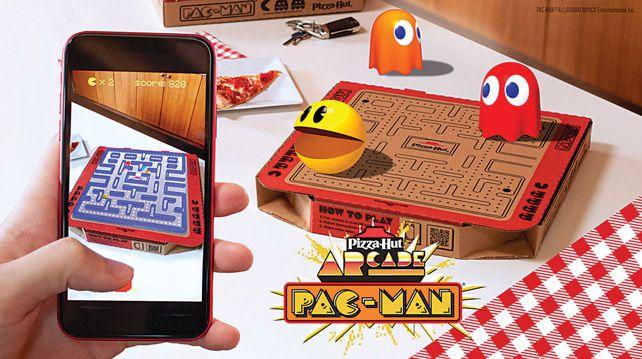
KFC
KFC’s international strength is well-documented— 22,981 of its 26,934 restaurants are outside the U.S. But 2021 marked a domestic turning point. KFC achieved its first net new unit positive run in 17 years, and chief development officer Brian Cahoe expects the chain to do it again this year.

As sizable as KFC is, especially from a brand equity standpoint, it actually possesses a long runway for growth. Back in 2000, there were 5,364 KFCs in the U.S. The figure started to fall from 2010–2011, when KFC’s system retracted by 388 locations. It would drop by at least 100 units for the next six years, going from 4,780 to 4,109. And then, a comeback plan centered on the “Re-Colonelization” of the brand, flipped on. Closures slowed to 58, 35, and nine, before 122 in COVID’s first year. As noted, the number jumped into the green for 2021.
So just getting back to where it was would signal major expansion in the coming years. In domestic markets, KFC’s same-store sales grew 12 percent in Q4 and 13 percent for 2021, both on a two-year basis. Sales were driven by group occasions, digital growth, and the brand’s rising chicken sandwich. The menu innovation mixed 9 percent in Q4, up from 1 percent last year. Meanwhile, comps at international markets lifted 3 percent in
14
KFC’S CRYSTAL BUCKET STORE IN PAINTED POST, NEW YORK, IS ONE OF ITS MOST STUNNING.
42 AUGUST 2022 | QSR | www.qsrmagazine.com QSR 50 PIZZA HUT
PIZZA HUT GUESTS ARE EMBRACING ITS OLD-IS-NEW APPROACH.

the quarter, but dropped 1 percent for the full year.
Innovation keyed progress. KFC U.S.’ digital sales soared 70 percent year-over-year in 2021, fueled by delivery and an e-commerce platform that launched nationwide early last year. In Q4, the brand rolled out Quick Pick-Up, in which customers can skip the drivethru and grab mobile orders out of cubbies inside the restaurant.
Most vividly, though, KFC hit a prior goal in 2021 when it converted 70 percent of its system to the “American Showman” design, recognizable by bright red-and-white stripes ( like a chicken bucket), bucket chandeliers, and graphics that serve as an allusion to the Colonel’s hard-working background. That’s stepping back now, however, in favor of KFCs Next-Gen model, which arrived in Berea, Kentucky, in Q4 2021. It boasts a digital-forward and contactless experience, including the company’s first double drive-thru lane. Models range anywhere from 1,300 square feet to 2,200, with the lower end being an off-premises-centric unit without a dinein element. There’s a lobby for customers, or couriers, to walk in and grab their food.
As of February, about 25 percent of KFC’s pipeline were Next-Gen builds. That’s going to pick up as the chain cycles through previous commitments. In time, all new builds and formats, in the suburbs or cities, will be Next-Gen assets.
A lead part of KFC’s go-forward strategy will also take shape across urban inline expansion. KFC’s Next-Gen design and features are flooding this arena, where the chain has aggressive plans for New York and St. Louis, and other city centers. Cahoe said this is one U.S. area where KFC is underpenetrated versus its national footprint. The company opened its first Next-Gen urban inline in 2021, and more are coming down the pipe
Popeyes
The story for Popeyes, roughly two years removed from its category-busting chicken sandwich launch, is growth. Since the product’s August 2019 introduction, Popeyes has pushed banner results across a three-year stretch. Average-unit volumes rose some $400,000 to $1.8 million and menu launches, like nuggets, mac and cheese, and a collaboration with Megan Thee Stallion, continue to produce new news for a chain that’s unit count is starting to reflect its buzz.


In 2021, Popeyes opened 208 stores in the U.S. and Canada, which brought its total above 3,000 restaurants. It exited fiscal 2021 with 2,754 U.S locations and 3,705 globally as last year marked the highest figure of openings (net of 254, or unit growth of 7.4 percent) since Burger King, Tim Hortons, and Firehouse Subs parent RBI acquired Popeyes in March 2017 for $1.8 billion.
In April, Popeyes said it planned to eclipse the 200 bar again this year, but by an even greater distance. And
while this occurs, Popeyes will bring modernized store designs to market. “Several” of its 2022 openings will be in New York City, including a fresh flagship in Times Square. That restaurant, at 1530 Broadway, featured Popeyes’ updated design that pays homage to its Cajun roots and Louisiana brand heritage, yet layers tech into
the experience. It includes self-order kiosks, a two-story food transporter for upstairs dining, digital order-ready boards, and a merchandising store inside.
The design mirrors the one Popeyes unveiled in March when it re-opened the company’s New Orleans landmark on Canal Street. The 200-year-old building represented the domestic introduction of the “NOLA Eclectic” image Popeyes is opening in the Big Apple, which first launched in Shanghai.
In addition, Popeyes’ more traditional, freestanding footprint will lean heavily on double drive-thrus this coming calendar. More than 50 percent of stores in its 2022 pipeline currently feature the build—a move designed to serve increased traffic, improve speed of service, and, ultimately, “further enhance the guest experience.”

Popeyes is also working to reconfigure and launch back-of-the-house solutions for new kitchen designs. Popeyes’ updated model developed kitchens and systems from the ground up to be more efficient and capable, and also a better place to work. Other continued evolutions on deck include mobile order and pay, curbside pickup, digital order pickup shelves, self-order kiosks, and Popeyes Rewards available on the Popeyes App. This year, the program will feature exclusive benefits centered on value and frictionless ordering, the company said.
But pulling Popeyes’ story out to a higher level, the chain, in February, told investors it had “signed more development agreements around the world than ever before. That includes India, the U.K., Saudi Arabia, Romania, and France, as well as further expansion in Mexico, the U.S., and Canada. In 2022, Popeyes continued its momentum with an agreement in South Korea,
15
POPEYES (3); KITCHEN: JEREMY LIEBMAN 44 AUGUST 2022 | QSR | www.qsrmagazine.com QSR 50
POPEYES IS BUILDING ON ITS FAMED CHICKEN SANDWICH WITH MAJOR GROWTH PLANS.
NO DIFFERENCE. THAT’S OUR DIFFERENCE.
With custom programming, one-touch operation and precision performance, Vitamix® machines empower employees to achieve perfectly consistent results every time – even the first time.

It’s just one reason we’re the industry’s most trusted blending partner.
See what else sets us apart at VITAMIX.COM/OURDIFFERENCE




The Quiet One®
which RBI CEO Cil called one of the largest quick-service chicken markets in the world.
Popeyes also expects to expand further in China, Spain, Brazil, Philippines, Mexico, Vietnam, Switzerland, and Sri Lanka. The China note, without much debate, could be the biggest as Popeyes has only “a couple of hundred restaurants” in Asia today, brand president Sami Siddiqui said earlier in the year. KFC appreciates 26 percent of its total system sales from China alone.
16
Dairy Queen
The cult-favorite ice cream chain kicked off the spring with the rollout of its new Signature Stackburgers menu—the chain’s most significant product rollout in the past two decades. The lineup comes in five varieties, including FlameThrower, Loaded A.1., Bacon Two Cheese Deluxe, Two Cheese Deluxe, and Original Cheeseburger.
Dairy Queen finished 2021 with 4,339 restaurants nationwide, all but two of them being franchised-operated units. It was a net decline of 22 locations compared to 2020.

17
Arby’s
Arby’s found opportunity to launch multiple pieces of menu innovation throughout 2021. Known for its curly French fries, the chain decided to add crinkle fries as a permanent item in March of that year. The brand followed by launching a new kid’s meal with all-white meat chicken nuggets and rolling out buffalo wings for a limited time with Classic Buffalo Sauce and Hot Honey Sauce.
The roast beef chain stepped up innovation even further in 2022 by releasing the Wagyu Steakhouse Burger, the first of its kind in the company’s 58-year-history. The 6.4-ounce burger—cooked using sous vide style— was 50 percent larger than McDonald’s Quarter Pounder, Arby’s claimed, and used a blend of 52 percent American Wagyu and 48 percent ground beef.
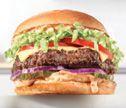
Arby’s U.S. same-store sales increased 5.2 percent in 2021 compared to 2020, and lifted 11.7 percent versus 2019. The brand opened a net of 40 restaurants last year, after debuting a net of 10 stores in 2020.
Panda Express, the largest Asian dining concept in the U.S., brought back plant-based Beyond The Original Orange Chicken for a limited time in November 2021. After a successful launch in New York City and Southern California the previous summer, the fast casual expanded the experiment to 70 locations across California, New York, Georgia, Illinois, Texas, Florida, Washington, Pennsylvania, Maryland, and Virginia.

Following the introduction of the meatless orange chicken, Panda Express doubled down on its partnership with Beyond Meat by launching Mapo Tofu with Beyond Beef and String Beans with Beyond Beef. The dishes cater to flexitarians, who eat both plant-based proteins and traditional meat.
Little Caesars
Little Caesars spent much of its time bolstering its development pipeline in 2021 after closing a net of 125 restaurants from 2018–2020. The pizza chain announced several benchmarks throughout the year, including 50 more venues in New England, 35 in St. Louis, at least 15 in Denver, 25 in Charlotte, up to 10 in New Orleans, more than 50 in the Pacific Northwest, at least a dozen in New York, and 30 in Tampa Bay.
The strategy is backed by industry veterans with years of experience. Craig Sherwood, who joined in September 2020 as vice president of U.S. development, previously worked for Yum! Brands, Fazoli’s, and Sonic Drive-In, and Jeremy Vitaro, who was announced as the new chief development officer in spring 2021, previously worked as vice president of domestic development for Dunkin’ Brands.
PANDA EXPRESS CONTINUES TO PUT MENU INNOVATION FRONT-AND-CENTER IN ITS EXPANSION.
ARBY’S EVEN GOT INTO THE BURGER GAME RECENTLY WITH ITS WAGYU STEAKHOUSE LAUNCH.
19
18
DAIRY QUEEN DAVID PAUL SCHMIT, ARBY’S, PANDA EXPRESS 46 AUGUST 2022 | QSR | www.qsrmagazine.com QSR 50
Panda Express




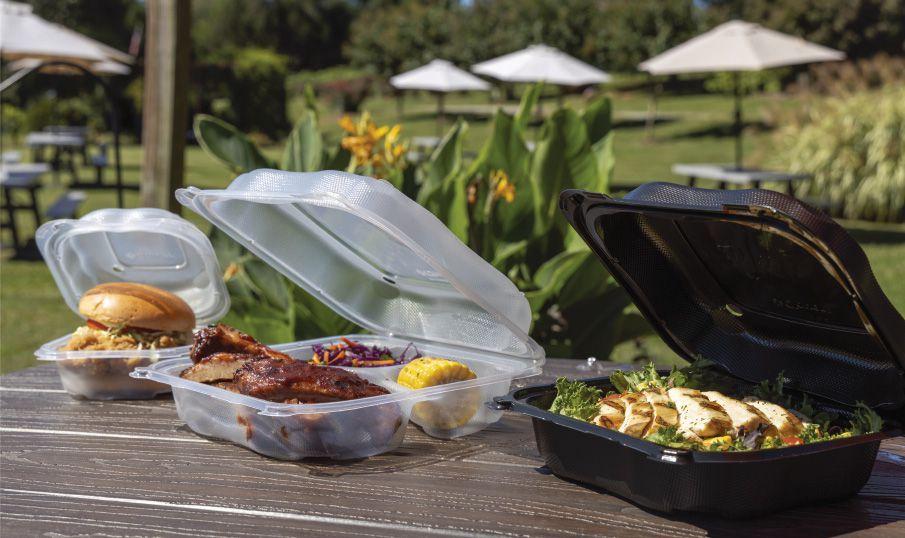

Durable & Reliable Maintain meal freshness and integrity with Clover™ hinged containers Recyclable Microwavable Lid Vented Leakresistant Stackable Made inUSA Clover™ delivers convenience and efficiency from your restaurant to the customer’s front door. With a vented lid and durable design, Clover™ helps preserve meal presentation and provides ease in portability. Available in various sizes to meet your business needs. www.genpak.com Scan the QR Code to view Clover™ in action! *Check with your local municipality * Genpak ® ] [
Sherwood said the pipeline is “stronger than we’ve had in a number of years,” and will soon skew toward new franchisees in the next two years. A high level of expansion is expected in 2022 and even more robust development is projected for 2023.
Like most restaurants, Little Caesars has been marred by inflation. At the start of this year, the chain’s signature $5 Hot-N-Ready pizza was bumped to $5.55, the brand’s first price increase in almost 25 years. The company described it as a “new and improved” pizza with 33 percent more pepperoni.
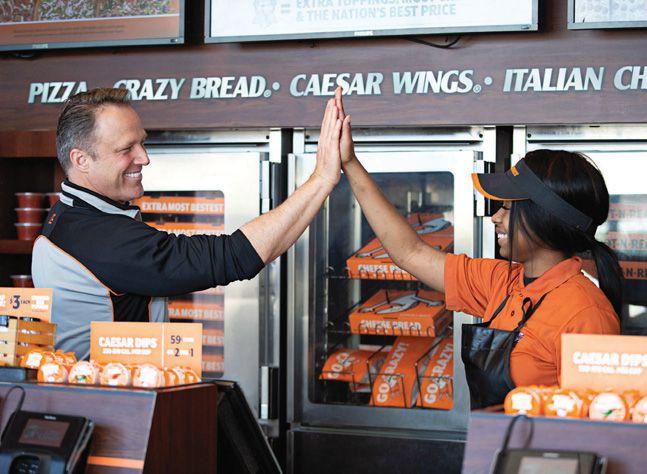
Jack in the Box
Jack in the Box made a major splash in the M&A market in 2021 when it announced an agreement to acquire the 600-unit Del Taco. The $585 million deal was completed in March. Jack hasn’t operated another brand since 2017, when it sold QDOBA to Apollo Global Management Group for $305 million. The company said there aren’t any plans to create a multi-brand platform like Yum! or RBI, but it will remain opportunistic when it comes to potential acquisitions. CEO Darin Harris said together, both brands will benefit from a stronger financial model, gain greater scale to invest in digital and technology, and better unit growth opportunities.

The chain’s organic growth is experiencing just as much momentum. Since launching a franchise-led expansion strategy in mid-2021, the burger brand has sealed 50 agreements consisting of more than 200 restaurants—the most commitments in Jack’s 71-year history.
The company experienced wage inflation of 10.9 percent in its second quarter, but Jack has an answer for the inflationary pressure. The chain started testing Miso Robotics’ fry-cooking robot Flippy 2, which can
increase throughput by 30 percent, and Sippy, a POSintegrated robot that automatically dispenses beverages and seals cups.
Papa Johns
CEO Rob Lynch and Papa Johns have pieced together a multi-year run that’s now materializing into something long-term. And the best way to illustrate that is to examine where the brand was a few years ago. In 2019, Papa Johns opened 79 North America locations and closed 128. The following calendar, it debuted 64 and shuttered 63. In 2021, Papa Johns opened 85 against 35 closures. The growth path, in turn, has progressed from negative 49 to positive one to net unit expansion of 50 over a three-year stretch. Looking ahead, it’s single-digit openings to a guide of 300 in just 24 months.
Papa Johns was also the lone large-scale public pizza brand to post positive same-store sales to start 2022. Its 1.9 percent gain lapped 26.2 percent from the prior year. Continued top-line growth has resulted in a flurry of franchise activity, Lynch said. Operators are signing on for more stores and new, major groups are racing to get in. The brand outperformed the pizza industry for 10 consecutive quarters.
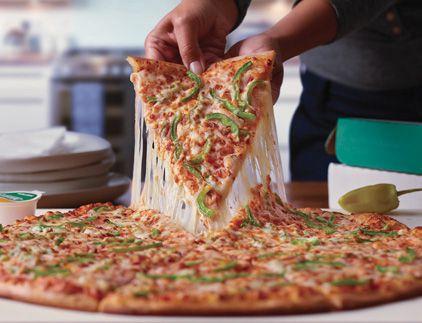
It’s why, in May, the company raised guidance for 2022 net expansion to 280–320 locations from 260–300.
Additionally, Papa Johns provided a fresh multi-year target of 6–8 percent annual net unit growth worldwide for fiscal 2023–2025. That equates to 1,400–1,800 net new Papa Johns by year-end 2025, “with vast development whitespace still remaining,” Lynch said.
In Q1 2022, Papa Johns struck a deal with FountainVest Partners to open more than 1,350 locations in China by 2040. It also announced the strategic refinancing of its majority interest in a 90-restaurant joint venture, recording all related assets and liabilities as held for sale as of quarter’s close, to existing franchisee Sun Holdings. The transactions, Papa Johns said, “provide significant operational scale to help accelerate Sun’s current 100-unit development agreement.” That original deal, revealed in late
20
21
FRESH OFF BUYING DEL TACO, JACK IN THE BOX IS TURNING ITS SIGHTS TO ORGANIC GROWTH.
CONTINUED ON PAGE 52 LITTLE CAESARS, JACK IN THE BOX, PAPA JOHNS 48 AUGUST 2022 | QSR | www.qsrmagazine.com QSR 50
LITTLE CAESARS EXPECTS TO RAMP UP DEVELOPMENT IN THE COMING YEAR.
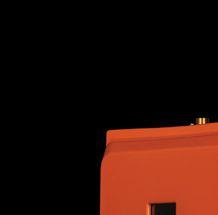

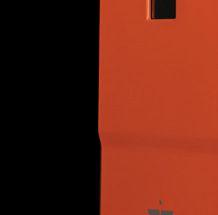




(And so compact we didn’t need a full page ad). water heaters for the restaurant industry. Small Order, Super-Sized Savings
Intellihot.com Only 26.2” tall
The only tankless water heating system designed and built for commercial work
QSR 50 /
* INCLUDES FIGURES ESTIMATED BY QSR 1 McDONALD’S $ 45,960 $3,420 12,775 663 13,438 -244 2 STARBUCKS * $ 24,300 $1,200 6,497 8,953 15,450 113 3 CHICK-FIL-A* $16,700 $6,100 2,650 82 2,732 155 4 TACO BELL $12,600 $1,823 6,540 462 7,002 203 5 WENDY’S $11,111 $1,895 5,535 403 5,938 57 6 DUNKIN’ $10,416 $1,127 9,244 0 9,244 161 7 BURGER KING $10,033 $1,470 7,054 51 7,105 24 8 SUBWAY * $ 9,350 $438 21,147 0 21,147 -1,043 9 DOMINO’S $ 8,641 $1,317 6,185 375 6,560 205 10 CHIPOTLE $ 7,547 $2,641 0 2,966 2,966 198 11 SONIC DRIVE-IN $ 5,835 $1,643 3,232 320 3,552 26 12 PANERA BREAD * $ 5,650 $2,700 1,130 950 2,080 -25 13 PIZZA HUT $ 5,500 $1,022 6,526 22 6,548 -13 14 KFC $ 5,100 $1,408 3,906 47 3,953 10 15 POPEYES $ 4,775 $1,867 2,716 41 2,754 146 LOUISIANA KITCHEN 16 DAIRY QUEEN $ 4,494 $1,036 4,337 2 4,339 -22 17 ARBY’S $ 4,462 $1,309 2,293 1,116 3,409 40 18 PANDA $ 4,452 $2,173 147 2,187 2,334 150 EXPRESS 19 LITTLE $ 4,185 $1,000 3,601 580 4,181 -28 CAESARS * 20 JACK IN $ 4,077 $1,843 2,055 163 2,218 -23 THE BOX 21 PAPA JOHNS $ 3,486 $1,147 2,564 600 3,164 30 22 WHATABURGER $ 3,089 $3,640 131 742 873 29 23 CULVER’S $ 2,489 $3,099 831 6 837 55 24 RAISING CANE’S $ 2,377 $4,893 23 544 567 58 25 JIMMY JOHN’S $ 2,301 $866 2,616 41 2,657 48 26 WINGSTOP * $ 2,278 $1,592 1,498 27 ZAXBY’S $ 2,233 $2,484 761 28 JERSEY MIKE’S $ 2,203 $1,145 2,087 29 HARDEE’S * $ 2,100 $1,117 1,536 30 FIVE GUYS $ 2,093 $3,172 911 31 CARL’S JR.* $1,560 $1,400 1,011 32 BOJANGLES $1,485 $1,924 496 33 IN-N-OUT $1,175 $3,200 0 BURGER * 34 FIREHOUSE $1,044 $909 1,101 SUBS 35 KRISPY KREME * $ 996 $4,000 51 36 EL POLLO LOCO $ 973 $2,000 292 37 TROPICAL $ 948 $1,009 1,038 SMOOTHIE CAFÉ 38 DEL TACO $ 931 $1,551 306 39 CHECKERS/ $ 931 $1,145 568 RALLY’S 40 MARCO’S PIZZA $ 899 $934 957 41 McALISTER’S DELI $ 869 $1,866 472 42 QDOBA* $ 835 $1,006 406 43 PAPA MURPHY’S $ 809 $643 1,213 44 SHAKE SHACK * $ 777 $3,679 25 45 CHURCH’S $ 776 $870 731 CHICKEN 46 FREDDY’S FROZEN $ 759 $1,842 391 CUSTARD & STEAKBURGERS 47 TIM HORTONS $ 687 $1,200 637 48 BASKIN-ROBBINS $ 686 $296 2,317 49 MOE’S $ 661 $1,073 658 50 WHITE CASTLE $ 615 $1,749 0 ABOUT THE QSR 50 / The QSR 50 is an annual ranking of limited-service restaurant companies by U.S. system-wide sales. QSR magazine collected information directly from restaurant companies from March to May 2022, QSR ( ), Franchise
COMPANY 2021 U.S. SYSTEMWIDE SALES (MILLIONS) 2021 U.S. SYSTEMWIDE SALES (MILLIONS) 2021 AVERAGE SALES PER UNIT (THOUSANDS) 2021 AVERAGE SALES PER UNIT (THOUSANDS) 2021 FRANCHISE/ LICENSE UNITS 2021 FRANCHISE/ LICENSE UNITS 2021 COMPANY UNITS 2021 TOTAL UNITS TOTAL CHANGE IN UNITS FROM 2020 COMPANY RANK RANK
),transactionaldata,andstatisticsfromothersourceswereamalgamated,reviewed,andanalyzedtoyielddomesticsales,unitcount,andaverage-unitvolume.When
36 1,534 175 147 908 3 13 2,100 246 198 1,734 -32 479 1,390 8 47 1,058 -21 277 773 15 370 370 5" 39 1,140 9 307 358 6 189 481 1 2 1,039 125 294 600 4 266 834 -13 45 1,002 48 33 505 24 333 739 -2 27 1,240 -53 218 243 38 161 892 -13 29 420 32 0 637 4 0 2,317 102 1 659 -22 349 349 -6 DisclosureDocuments(
FoodserviceResultsspecializesinconsumerresearch,dataanalysis,andinsightstothefoodserviceindustry. * INCLUDES FIGURES ESTIMATED BY QSR RANK QSR 50 RANK 1 1 McDONALD’S $ 45,960 $3,420 12,775 663 13,438 -244 2 5 WENDY’S $11,111 $1,895 5,535 403 5,938 57 3 7 BURGER KING $10,033 $1,470 7,054 51 7,105 24 4 11 SONIC DRIVE-IN $5,835 $1,643 3,232 320 3,552 26 5 20 JACK IN THE BOX $ 4,077 $1,843 2,055 163 2,218 -23 6 22 WHATABURGER $ 2,698 $3,197 114 730 844 14 7 23 CULVER’S $ 2,489 $3,099 831 6 837 55 8 29 HARDEE’S* $ 2,100 $1,117 1,536 198 1,734 -32 9 30 FIVE GUYS $ 2,093 $3,172 911 479 1,390 8 10 31 CARL’S JR.* $1,560 $1,400 1,011 47 1,058 -21 11 33 IN-N-OUT BURGER* $1,175 $3,200 0 370 370 5 12 39 CHECKERS/RALLY’S $931 $1,145 568 266 834 -13 13 45 SHAKE SHACK* $ 775 $3,679 25 218 243 38 14 46 FREDDY’S FROZEN CUSTARD & $ 759 $1,842 391 29 420 32 STEAKBURGER 15 50 WHITE CASTLE $615 $1,749 0 349 349 -6 1 2 STARBUCKS* $ 24,300 $1,200 6,497 8,953 15,450 113 2 6 DUNKIN’ $10,416 $1,127 9,244 0 9,244 161 3 16 DAIRY QUEEN $ 4,494 $1,036 4,337 2 4,339 -22 4 35 KRISPY KREME* $ 996 $4,000 51 307 358 6 5 37 TROPICAL SMOOTHIE CAFÉ $948 $1,009 1,038 2 1,039 125 6 47 TIM HORTONS $687 $1,200 637 0 637 4 7 48 BASKIN-ROBBINS $686 $296 2,317 0 2,317 102 1 3 CHICK-FIL-A* $16,700 $6,100 2,650 82 2,732 155 2 14 KFC $5,100 $1,408 3,906 47 3,953 10 3 15 POPEYES LOUISIANA KITCHEN $ 4,775 $1,867 2,716 41 2,754 146 4 24 RAISING CANE’S $ 2,377 $4,893 23 544 567 58 5 26 WINGSTOP* $ 2,278 $1,592 1,498 36 1,534 175 6 27 ZAXBY’S $ 2,233 $2,484 761 147 908 3 7 32 BOJANGLES $1,485 $1,924 496 277 773 15 8 36 EL POLLO LOCO $973 $2,000 292 189 481 1 9 44 CHURCH’S CHICKEN $776 $870 731 161 892 -13 1 4 TACO BELL $12,600 $1,823 6,540 462 7,002 203 2 10 CHIPOTLE $ 7,547 $2,641 0 2,966 2,966 198 3 18 PANDA EXPRESS $ 4,452 $2,173 147 2,187 2,334 150 4 38 DEL TACO $931 $1,551 306 294 600 4 5 42 QDOBA* $ 835 $1,006 406 333 739 -2 6 49 MOE’S $661 $1,073 658 1 659 -22 1 8 SUBWAY* $9,350 $438 21,147 0 21,147 -1,043 2 12 PANERA BREAD* $5,650 $2,700 1,130 950 2,080 -25 3 17 ARBY’S $ 4,462 $1,309 2,293 1,116 3,409 40 4 25 JIMMY JOHN’S $ 2,301 $866 2,616 41 2,657 48 5 28 JERSEY MIKE’S $ 2,203 $1,145 2,087 13 2,100 246 6 34 FIREHOUSE SUBS $1,044 $909 1,101 39 1,140 9 7 41 McALISTER’S DELI $869 $1,866 472 33 505 24 1 9 DOMINO’S $8,641 $1,317 6,185 375 6,560 205 2 13 PIZZA HUT $5,500 $1,022 6,526 22 6,548 -13 3 19 LITTLE CAESARS* $ 4,185 $1,000 3,601 580 4,181 -28 4 21 PAPA JOHNS $3,486 $1,147 2,564 600 3,164 30 5 40 MARCO’S PIZZA $899 $934 957 45 1,002 48 6 43 PAPA MURPHY’S $ 809 $643 1,213 27 1,240 -53 COMPANY 2021 COMPANY UNITS 2021 TOTAL UNITS TOTAL CHANGE IN UNITS FROM 2020 BURGER SEGEMENT SNACK SEGEMENT CHICKEN SEGEMENT GLOBAL SEGEMENT SANDWICH SEGEMENT PIZZA SEGEMENT 2021 U.S. SYSTEMWIDE SALES (MILLIONS) 2021 AVERAGE SALES PER UNIT (THOUSANDS) 2021 FRANCHISE/ LICENSE UNITS 2021 COMPANY UNITS 2021 TOTAL UNITS TOTAL CHANGE IN UNITS FROM 2020
September, represented the largest domestic development agreement in Papa Johns’ history, and with a group that doesn’t wildly toss projections about.
Sun Holdings, founded by Guillermo Perales in 1997, operates more than 1,000 locations in 12 states, including Taco Bueno, Burger King, Arby’s, McAlister’s, IHOP, Popeyes, T-Mobile, GNC, and a number of airport restaurant locations.
The idea Papa Johns has growth potential is something Lynch touted since arriving from Arby’s in August 2019. As 2020 loomed, Papa Johns had about half as many restaurants as Domino’s and Pizza Hut domestically, and roughly a third internationally.
As of December 2021, the chain operated in 50 counties and had 3,164 U.S. units. Domino’s boasted 6,560 and Pizza Hut 6,548.
Much of Papa Johns’ surge ties to menu innovation. Lynch put the plan ahead of value when he took over as CEO and introduced six new products in 2020 alone. Lately, Epic Stuffed Crust (a pepperoni-filled version, too) helped drive new transactions and repeat visits. But notably, it’s also shielded Papa Johns from some of the inflationary challenges pressing competitors. Lynch’s decision to lean into premium positioning made taking price a shorter leap than value-driven brands, he said. Customers were already paying more for a product rather than a discount. And the other kicker was third-party delivery, which Papa Johns made the call to activate about three years ago. It spent close to nine months building out integrated systems to connect its POS system to aggregators’ ordering systems “so that we could leverage their drivers and service capabilities,” Lynch said. While that road hasn’t always been smooth, it gave Papa Johns a headstart in what’s fast become a convoluted labor dynamic for delivery drivers.
The chain’s “PapaCall” initiative, where it brought AI into its call center, aided execution and freed up labor hours in-store as well.
Whataburger
In its 71st year, Whataburger expanded by 29 locations and kept building for the future. The brand, which employs more than 51,000 workers, hired Peggy Rubenzer as SVP and chief people officer in April. Rubenzer previously held the same title at True Food Kitchen and has also clocked time at Shake Shack, P.F. Chang’s, and Southwest Airlines.
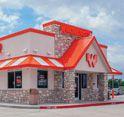
The employee proposition proved a recurring theme throughout the calendar. In March, Whataburger announced a plan to promote all of its GMs and push their salaries to at least $100,000. The position changed to “operating partner,” and came with a bonus of up to 150 percent of their target incentive. CEO Ed Nelson, who was promoted to the position in August 2020, described operating partners as the “heart and soul” of Whata-
burger. He also referred to them as “business leaders who run multimillion-dollar restaurants, take care of their teams, and serve as the face of Whataburger in their communities.”
The San Antonio-based chain gave staff more than $90 million in bonuses during COVID (as of March) and extreme weather events. In 2020, workers also received “Extra Mile” bonuses, emergency pay, and a doubling of their 401 (k) matching.
A few weeks after the GM reveal, Whataburger unveiled a free virtual leadership conference featuring NBA legend David Robinson. Called “Pivot You,” it was part of the chain’s larger year-long campaign to hire more than 50,000 employees as it grew across 14 markets, including new stops in Kansas City, Nashville, and Colorado Springs.

Broadly, Whataburger claimed it was entering “the largest growth phase in its 70-plus year history,” which has been building since May 2019, when it sold a majority interest to Chicago-based BDT Capital Partners (the Dobson family, which founded the chain in 1950, maintained minority ownership)
23 Culver’s
Since its founding in 1984, there has been one thing missing from Culver’s 850-unit fleet: a food truck. That changed in May as the legacy brand took to the road for a 17-city tour featuring the first mobile Culver’s. Alongside the multi-stop event, Culver’s launched a “Welcome to Delicious” campaign to showcase its Wisconsin roots and commitment to family values. The debut ad, “From Wisconsin With Love,” featured Dairyland staples and hospitality with scenes of farm fields, guests coming together over made-to-order items, and employees greeting customers. Co-founder Craig Culver narrated the commercial and briefly scooped fresh frozen custard in archival footage from 1984.
The aim for the brand, Culver explained, was “to

22
CULVER’S RECENTLY INTRODUCED ITS FIRST FOOD TRUCK AS PART OF AN OUTREACH CAMPAIGN.
WHATABURGER (2); WHATAWEDDING: MIRANDA GRUBBS,
52 AUGUST2022 | QSR | www.qsrmagazine.com QSR 50
WHATABURGER SAYS IT’S ON THE CUSP OF ITS LARGEST GROWTH PHASE IN OVER 70 YEARS.
CULVER’S









CHICKEN
We believe that if you wouldn’t feed it to your guests, we shouldn’t give it to our animals. That’s why we give them a healthy diet of wheat, soybean, corn, barley, fresh water, vitamins, minerals and probiotics. All so you can menu great tasting proteins that show your commitment to simple, high-quality ingredients. Meet CHICKEN Raised on Better Feed NO Antibiotics Ever, Never Ever NO Animal By-Products 100% Vegetarian Feed Visit PERDUEFOODSERVICE.COM ® for More YES
POTATO ROSTI
take a bit of Wisconsin to the rest of the space that we do business in.” But also, to energize customers and employees alike. And the campaign came at a surging time in Culver’s history. In 2020, the brand’s same-store sales climbed about 6 percent over 2019, as drive-thrus helped Culver’s weather COVID drops. The following year, comps rose roughly 19 percent.
In each of those years, Culver’s opened 50 locations. The chain’s systemwide U.S. sales were $1.73 billion at the end of 2019. That number lifted to $1.986 billion in 2020 and $2.489 billion this past year.
Going forward, Culver’s has plenty of reason to be optimistic. In addition to its strong performance across the past couple of calendars, it added tech upgrades (namely, mobile ordering) and continues to open double drive-thru lanes, as well as retrofit old ones to add a lane, in an effort to free up capacity. Pre-virus, drive-thru mixed about 55 percent of sales for Culver’s. It rocketed to 90 percent during the depths of 2020 and is now settling “around 60 percent,” Culver said.
And as Culver’s builds off back-to-back record runs, the chain will lean into its hospitality and made-from-scratch DNA that’s always defined it. “We want both,” Culver said of instore and drive-thru growth. “We want everything. We want it all.”
Raising Cane’s
To kick off 2021, Raising Cane’s announced its 600th opening. The store hardly represented an end-point, though—it was the start of the biggest growth year yet for the chicken finger chain. Raising Cane’s grew by a net of 58 stores last year. This current calendar, it plans to tack on 100 stores across 10 new markets. Along the way, Raising Cane’s said it would hire more than 15,000 people. Team building has been a crucial part of Raising Cane’s methodical expansion strategy throughout its recent surge.
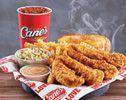
Much of the success ties to a Restaurant Partner Program that launched around the start of the pandemic, which helps store managers become operators of company-owned restaurants. Partners receive expertise in marketing, training, facilities, recruiting, and operations, health and financial planning support, and more than $100,000 in annual compensation, including salary, bonuses, and performance-based incentives. Raising Cane’s claims operators in the program have the chance to become millionaires in as quickly as 12 years.
Raising Cane’s has made headlines on this front since the outset of COVID. The company refused to furlough or lay off any of its 23,000 workers. A couple of
months after March 2020, Raising Cane’s doubled down on its “No Crew Left Behind” mentality by distributing $2 million in bonuses to account for hours some employees gave up so everyone could remain employed. Neither AJ Kumaran nor founder Todd Graves (they serve as coCEOs) took a salary at the time.
Then in August, the fast casual bolstered retention efforts by expanding its educational benefits, including
access to college-level courses, reimbursed class costs to complete a high school diploma, and up to $5,250 per year in tuition reimbursement.
During later labor shortages, Raising Cane’s corporate staff—50 percent of them—entered restaurants across the country. In the fall, leaders were performing day-to-day tasks and helping lift Raising Cane’s from 40,000 to 53,000 employees within 48 days.
The brand’s March 2022 campaign, one of the biggest creatives in brand history, centered on crew appreciation.
Raising Cane’s nearly $5 million AUV last year was second only to Chick-fil-A among the QSR 50 brands. And the brand is coming on quickly. It boasts a pipeline of more than 300 restaurants (most of which are freestanding drive-thru locations). And north of 80 percent are company-owned, which Raising Cane’s expects to remain the primary growth vehicle. 25
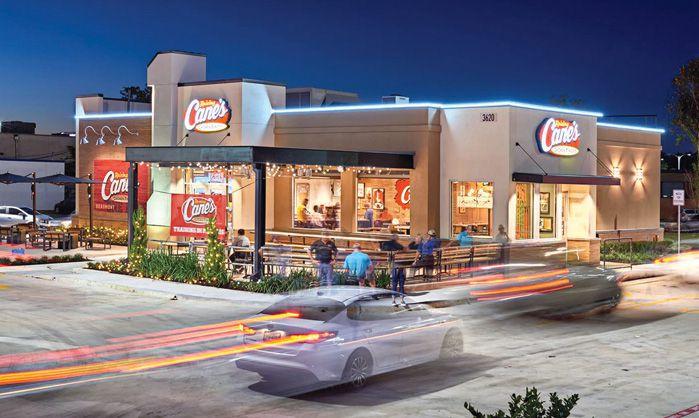
Jimmy John’s
Inspire’s sandwich fast casual saw same-store sales jump 21.3 percent (11.8 percent on a two-year view) as it rode a wave of digital growth. The chain expanded by 48 stores a year after contracting by 82. Inspire’s integration of Jimmy John’s, which it acquired in late 2019 in an equity-swap transaction, is becoming increasingly visible of late from a front-facing standpoint. In February, Inspire cut the ribbon on its first Jimmy John’s-Dunkin’
24
54 AUGUST 2022 | QSR | www.qsrmagazine.com QSR 50 RAISING CANE’S (2)
RAISING CANE’S NEARLY $5M AUVs IN 2021 TRAILED ONLY CHICK-FIL-A.
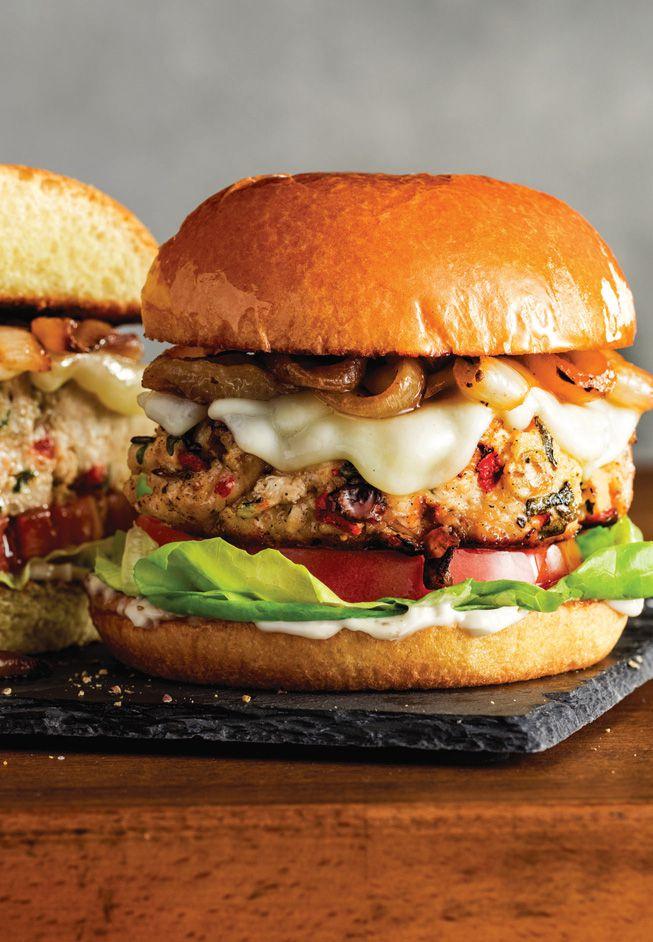













“NO” When we say “NO ANTIBIOTICS EVER,” we mean NEVER EVER. Unlike some of the other guys, we don’t use them in any life stage. Not in the egg. Not in the hatchery. And certainly not in our exclusive All-Veggie Feed crafted with NO Animal By-Products. It all adds up to great tasting PERDUE® HARVESTLAND® and PERDUE® NO Antibiotics Ever Chicken and Turkey with the premium menu claims that can command higher price points. Menu Mouthwatering TURKEY with: NO Antibiotics Ever, Never Ever NO Animal By-Products NOTHING But Veggie Feed Visit PERDUEFOODSERVICE.COM ® for More
LOADED TURKEY BURGER
co-brand. It also debuted the “Alliance Kitchen” in Atlanta, the first ghost kitchen owned and operated by a multi-brand company.
Jimmy John’s then opened a drive-thru-only prototype in Bartow, Florida. It included dual lanes and windows, with one side dedicated to mobile orders (guests also have the option to pick up at carryout lockers).


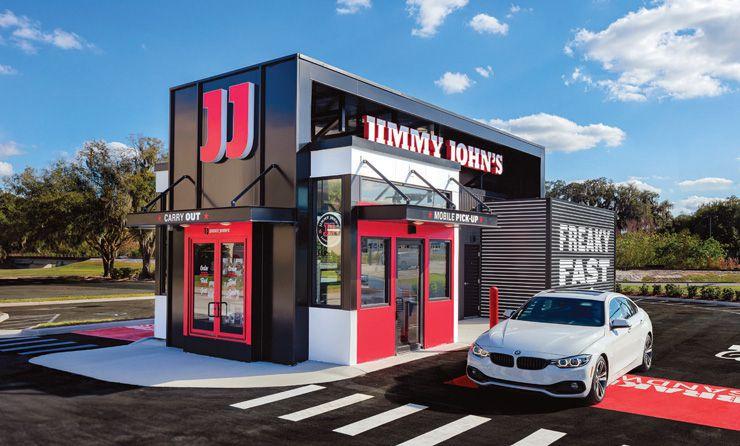
The asset updates arrived after Jimmy John’s rolled a new visual identity last year with agency ChangeUp. The brand began the calendar by launching a national Super Bowl ad, “Meet the King,” for the first time in brand history. It focused on Jimmy John’s differentiators in the sandwich category: speed and freshness, but with a comical vibe. The comprehensive visual identity launch included a contemporized logo, new in-store signage, merchandise, and digital footprint.
ChangeUp started by identifying the heart of the company’s identity. It looked at Jimmy John’s initials, its medallion, and iconic super seal. How could it simplify and codify the existing 40-plus logo variations used since 1983?
The solution was a cohesive collection with customcrafted initials, wordmark, and medallion. The new packaging was an amplified version of Jimmy John’s black, white, and red brand colors. Messaging and patterning was bold and playful. The illustrations quirky, as ChangeUp unified the brand’s hand-draw linework’s imperfectness across the system of icons. The Flying Sandwich suddenly looked meatier. The Super Seal “sealier.”
With a new brand image at the ready, Jimmy John’s introduced its first franchise incentive program in November intended to accelerate 2022 growth. Through the program, all or most of the initial franchise fee was waived for qualifying deals, in addition to royalty discounts for the first 36 months.
In May, Jimmy John’s also entered the Metaverse by letting users navigate a virtual store where they could
build a custom sandwich and submit it for a chance to become the first official “Metasandwich,” which would join Jimmy John’s real-life menu.
Wingstop
During COVID, Wingstop has experienced its best years as a public company. In 2021, the fast casual’s U.S. samestore sales increased 8 percent year-over-year and 29.4 percent on a two-year basis. AUV rose to $1.6 million, digital beyond 60 percent, and the brand opened a record-breaking 193 net new stores worldwide, including 171 domestically. The chain raised its 2022 target to more than 220 net new restaurants and pushed its long-term addressable market to 4,000 restaurants nationwide, up from 3,000.
While sales rose, the chain faced a volatile bone-in chicken wing market. In Q3, prices rose to an unprecedented $3.22 per pound, an 84 percent increase yearover-year. But since then, matters have cooled, with chicken wing prices lowering to $1.64 per pound by early May.
Going forward, the fast casual will pull multiple levers to create more predictable food costs for operators and take more control of its supply chain. Thus far, Wingstop has implemented price mitigation strategies with its largest poultry suppliers and made efforts to use more parts of the bird, including the use of thighs with virtual brand Thighstop, and the use of breasts with an experimental chicken sandwich that comes in 11 flavors. The next step is either coinvesting in, acquiring, or building a poultry production facility.

Wingstop also experienced a major change in leadership. Former CEO Charlie Morrison resigned in March to become leader of Salad and Go, a drive-thru chain in Arizona and Texas. He was replaced by Michael Skipworth, who previously served as president and COO, and executive vice president and CFO before that. The industry veteran played a key role in the chains IPO in 2015.
Zaxby’s
Zaxby’s underwent a historic leadership change last year. Zach McLeroy, who founded the chain with childhood friend Tony Towley in 1990, stepped down as CEO and transitioned to chairman after leading the brand for more than three decades. As a result, Bernard Acoca, the
26
27
JIMMY JOHN’S / MARK A STEELE (3), WINGSTOP 56 AUGUST 2022 | QSR | www.qsrmagazine.com QSR 50
COUNT JIMMY JOHN’S AMONG THE CHAINS OPENING BOLD, NEW PROTOTYPES, INCLUDING STORES WITHOUT DINING ROOMS.
SQUEEZE MORE SAVINGS
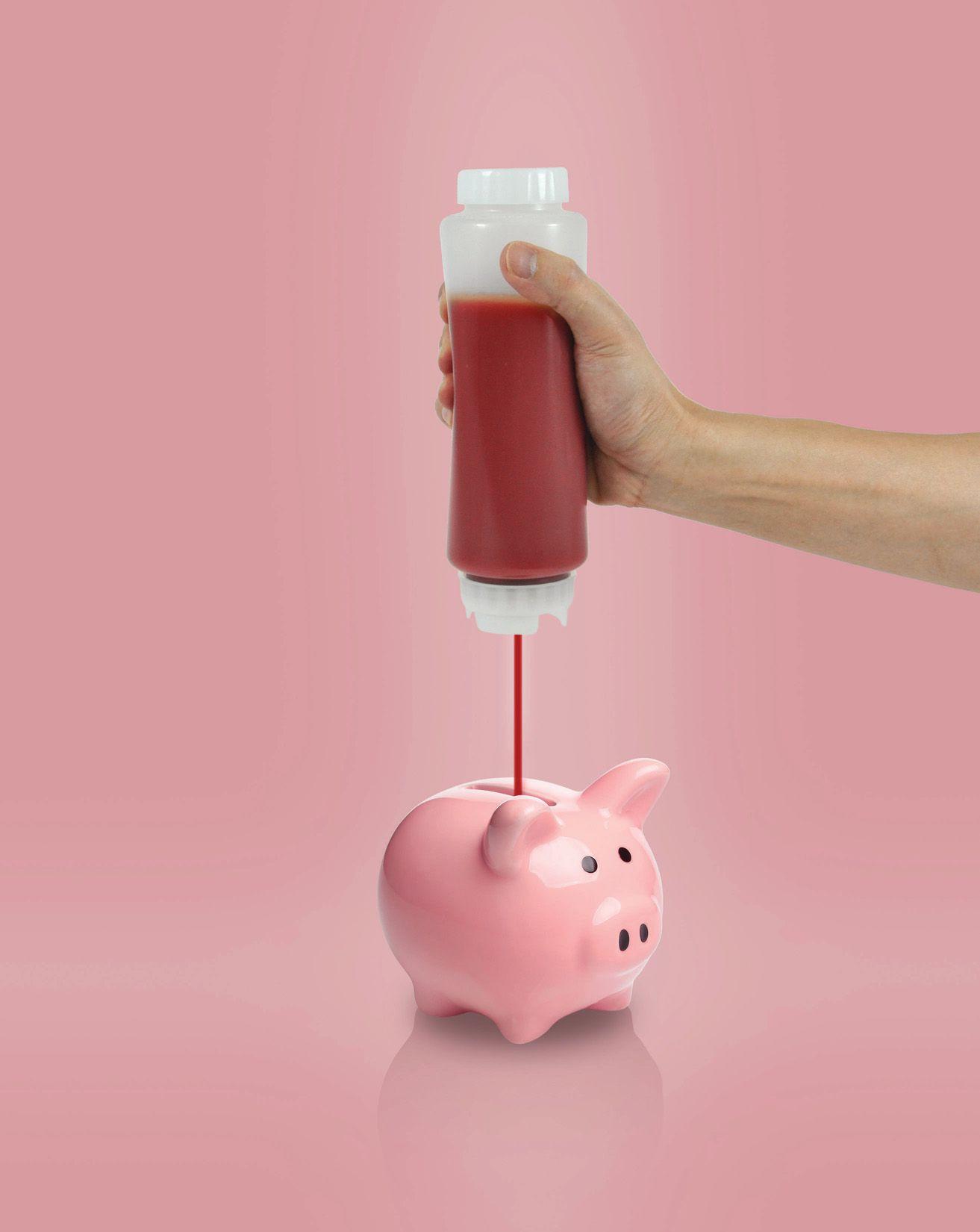
& consistently delight your customers, with ( )

Sauce Gun Bottle
DISCOVER MORE!

DISPENSING, REINVENTED!
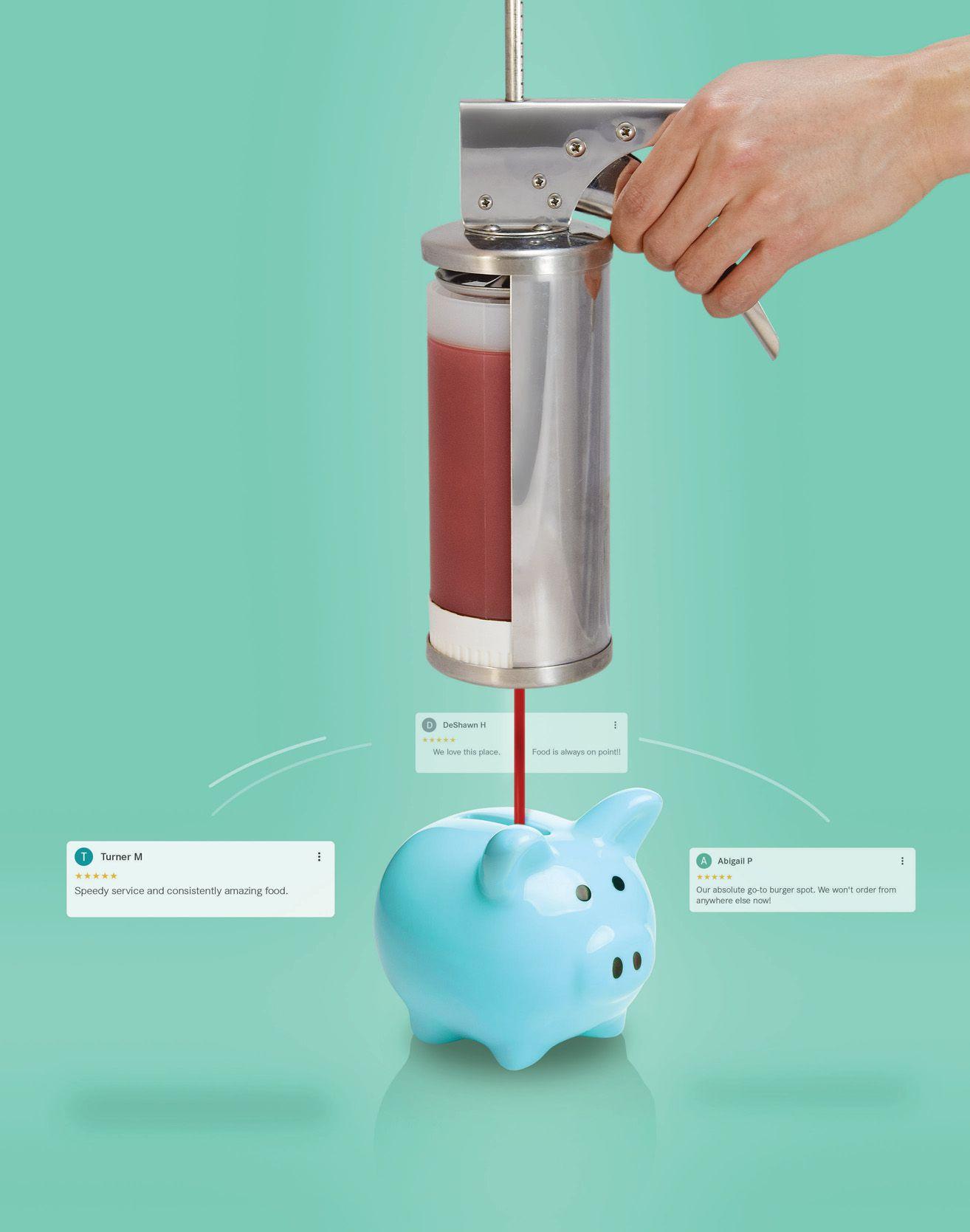
a FRANKE company www.fifoinnovations.com
former leader of El Pollo Loco, became the second CEO in the company’s history. He came into Zaxby’s with more than 20 years of experience as marketer and restaurant executive. He helped El Pollo grow digital sales, streamline operations, and launch a contemporary prototype.
But the chain wasn’t done building its C-suite. In April, Zaxby’s announced the hiring of COO Sharlene Smith, who previously served as vice president of operations for Papa Johns’ North America sector. A month later, the fast casual promoted Michelle Morgan to its first chief people officer.
Zaxby’s concluded 2021 with 908 U.S. stores, a net gain of three. AUV rose to almost $2.5 million, up from $2.2 million in 2020.
Jersey Mike’s
Jersey Mike’s crossed the 2,000-unit threshold in August and went on to open a net of nearly 250 restaurants in 2021. CEO Pete Cancro believes an annual pace of 300 stores is within reach, which would put the sandwich chain on pace to break 3,000 in the next three years. In
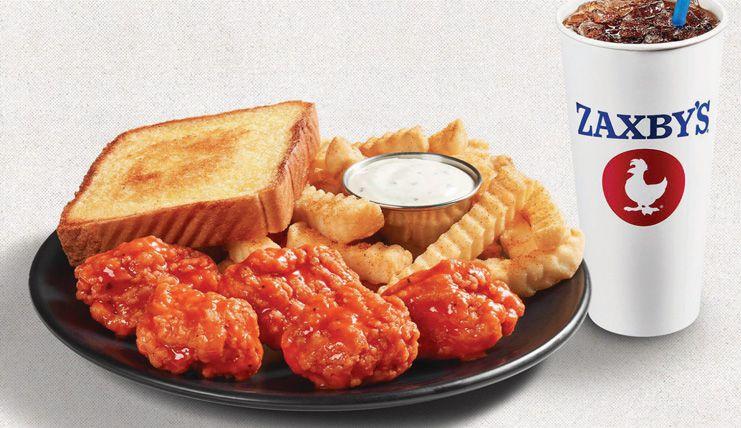
September 2021, Cancro said roughly 1,200 stores were in development.
In the meantime, Jersey Mike’s is leaning into the future of off-premises. In May, the fast casual announced a partnership with Flytrex, a company facilitating food delivery via drone. Orders are placed using the Flytrex app, which updates customers along the route, until the drone lowers safely into their backyard.
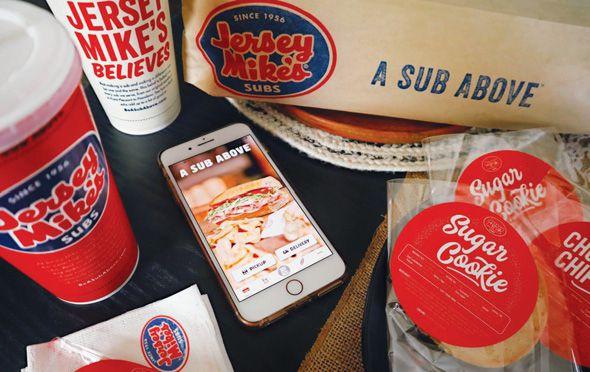
Hardee’s
In May, Hardee’s parent CKE Restaurants announced a $500 million project to transform restaurants over the next four to six years, including more than 500 units across 20 markets by the end of 2022. The changes will focus on renovations, technology advancements, and streamlined operations. When the announcement was made, 95 percent of all restaurants had already committed to the transition.
Customers and employees should expect new signage, brand statement elements, freshly installed interior and exterior digital menuboards, to upgraded lighting, bathrooms, and subway tiling. The reimaging
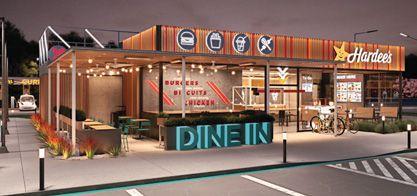
launched in Columbia, South Carolina, two years ago at a restaurant that was being outperformed by the system. After changes were put in place, the store consistently beat system averages.
Five Guys
Five Guys had 1,390 restaurants at the end of 2021, a net gain of eight restaurants. Systemwide sales rose from $1.7 billion to nearly $2.1 billion, and AUV increased from $2.6 million to $3.1 million.
Carl’s Jr.
Like sister brand Hardee’s, Carl’s Jr. is in the early stages of a broad refresh centered on omnichannel integration. In addition to the exterior revamps, CKE debuted in March “My Rewards,” a program in which customers receive 10 stars for every dollar spent. Guests can unlock rewards at the 150, 300, and 500-star thresholds. The company spent the past two or so years rebuilding its technology infrastructure overall—something that
28
29
30
31
ZAXBY’S HAS NEW LEADERSHIP AND GOALS TO SHAKE UP THE CHICKEN CATEGORY.
58 AUGUST 2022 | QSR | www.qsrmagazine.com QSR 50
JERSEY MIKE’S IS FAST-TRACKING ITS WAY TO 3,000-PLUS LOCATIONS.
ZAXBY’S, JERSEY MIKE’S, HARDEE’S
Quick-Serve Restaurants are Already Decarbonizing Menus
Next up: decarbonizing parking lots while driving down the bottom line
BY 2035 California will stop selling new internal combustion passenger vehicles to help curb climate change— a sure sign electric vehicles are going mainstream.
Quick-serve restaurants have looked for ways to reduce carbon, including launching menus featuring plant-based meals. Now, a California Taco Bell is about to offer patrons electric vehicle (ev) charging stations powered by ChargeNet Stations. It’s a move that clearly makes sense for the environment, but, surprisingly, it also helps reduce the restauranters’ energy costs.
The first ChargeNet Stations’ units that incorporate solar energy storage and EV fast charging, along with a smart optimization platform called ChargeOpt, are about to be unveiled at a San Francisco Taco Bell with nearly 80 more already slated to open later this year. ChargeNet Stations offer EV drivers a near 100-mile charge in 15 minutes or less for about $10.
The software innovation converts a restaurant’s parking lot into a profit center by creating and storing reusable energy. It’s a ‘win-win’ for consumers, restaurant owners, and the planet. Consumers are attracted by convenient locations and affordable fast charging. Restaurant owners generate new business and save 20-40 percent on their electric bill by using energy generated by the ChargeNet Stations.
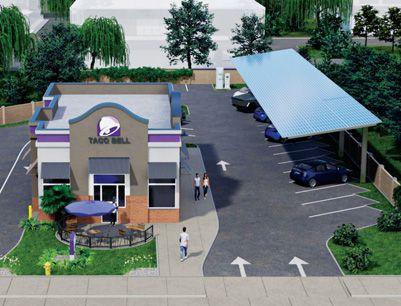
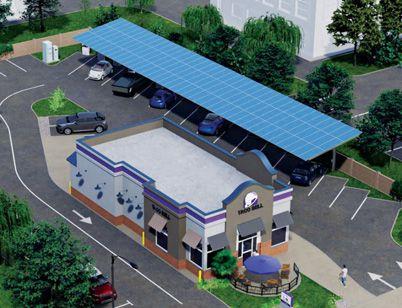
“This helps solve a huge demand problem we know is coming,” says ChargeNet Stations CEO Tosh Dutt. “Right now, EV charging is a ‘planned’ chore. It can take longer than filling up at a gas
station, a good location can be hard to find, and not everyone has a spacious garage to use as a charging station. What we’re doing is creating a seamless opportunity for a quick charge at a convenient place for a good price— and it’s good for the planet.”
Installation requires only one additional meter to support the charges but doesn’t require utility service upgrades. With the special service model and government incentives, Diversified Restaurant Group, the first to debut the ChargeNet Stations in California, will pay nothing upfront while pocketing a portion of the revenue generated from the chargers.
Each parking lot is equipped with six fast-charging stations, which sit under a solar array rooftop. Customers pull into the space, plug in, and order their meal.
Dwell times, which can be a pain point for EV owners and concern for operators, are smartly managed with rapid recharging capabilities and carefully targeted incentives. In the event of a power failure, restaurants can use the stored power to continue operations. No maintenance is required. If a charger or solar panel malfunctions or needs to be replaced, a service provider is dispatched the same day.
The software also consolidates data from a brand’s native app and point of sale to build an anonymized consumer profile for each EV driver. This means based on past orders operators can target promotions and obtain metrics about which menu items EV drivers prefer, further adding benefits for restaurant operators.
To learn more, visit chargenetstations.com.
CHARGENET STATIONS SPONSORED BY CHARGENET STATIONS
www.qsrmagazine.com | QSR | AUGUST 2022 59
“ What we’re doing is creating a seamless opportunity for a quick charge at a convenient place for a good price—and it’s good for the planet.”
accelerated in 2021. Effectively, chief brand officer Chad Crawford said, CKE integrated and brought to life point of sale, with Olo and Punchh enabling the consumer side of it. “I think the most important thing is to be able to have a more direct communication and relationship with the guests, to have them access and appeal and interact with and build the relationship that they’ve already started, but deeper with both the Carl’s Jr. and Hardee’s brands,” Crawford said.
More recently, CKE teamed with Universal Pictures for an activation around the release of Jurassic World Dominion. This included a new “Primal Menu” and the transformation of two Carl’s Jr. and Hardee’s locations into “dinosaur bite magnets.”
Bojangles
It’s been nearly four years since Bojangles was sold for $593.7 million to Durational Capital Management and The Jordan Company. Before, it spent roughly three years as a publicly traded company and was working to reroute sales at the tail-end. At the time of the deal, same-store sales declined 0.2 percent. Bojangles’ turnaround began with a portfolio optimization to close underperforming units and refranchise others. The growth arrow has flipped since. In 2019, the brand retracted by 10 locations. The next year, it expanded by 12. And in 2021, Bojangles added a net of 15 stores. But more vitally, the framework continues to be laid for larger targets. Today, despite its more than 770-unit footprint, the brand primarily remains a Southeast, regional concept with strongholds in the Carolinas, Virginia, and Georgia. Yet leadership wants to change that scope— with a goal to open 100 restaurants per year and target contiguous development in areas like Dallas, Houston, Orlando, Pennsylvania, New Jersey, and New York. Also, to broaden reach overseas. Chief growth officer Jose
Costa said in July 80 percent of his time would revolve around domestic growth. But as the brand headed into the second half of 2022, the other 20 percent would increase on the international front. “We will be crossing the 1,000 mark in the next three years approximately,” he said. “We want to be a national brand. That’s what we’re building toward, and the team we put in place, everyone we’ve hired—our dreams are big.”
Bojangles is taking $1.9 million AUVs through one of quick-service’s fastest-growing segments in chicken (chicken entrees at U.S. restaurants increased 4 percent in the year ending April 2021, according to The NPD Group). And doing so with a chain that’s continued to stress operations, speed of service, product quality, and other back-end support pillars to fuel smart development. Costa said the first two years under new leadership were spent working on foundational fixes, while also modernizing the brand. Year 3 was where pipeline building took hold, especially after the installation of the company’s first franchise sales team. The new group covered regions. In the past, everyone was responsible for the entire country.
The first big franchising deal of 2021 came when Bojangles signed a development deal with longtime franchisee Jeff Rigsby to open 45 stores in the next seven years. A couple of months later, Bojangles announced a “40 and 40” deal with Chaac Foods to open 40 new stores and acquire 40 corporate locations. In June, Bojangles signed franchise agreements with Sajib Singha and Asish Baidya of SAT Restaurant Group and Khalid Siddiqui of LASH Foods to open three stores each in the Dallas and Houston markets, respectively, as well as 15 company-run units. Less than seven months later, the brand said it had signed a total of five multi-unit agreements and planned to build 30 corporate-owned stores, to bring about 50 new restaurants to the greater Austin, DFW, Houston, and San Antonio markets in the coming years. In all, Bojangles said there was potential to hit 100-plus locations in Texas over the next seven to 10 years.
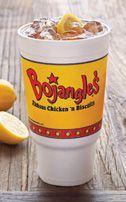
Across 2021, Bojangles signed development agreements to open over 100 stores in key markets. In Q1 2022, the brand inked deals for 46 new venues, including Virginia Beach; Northern New Jersey; Northeast Ohio; Baltimore, Maryland; and Washington, D.C.
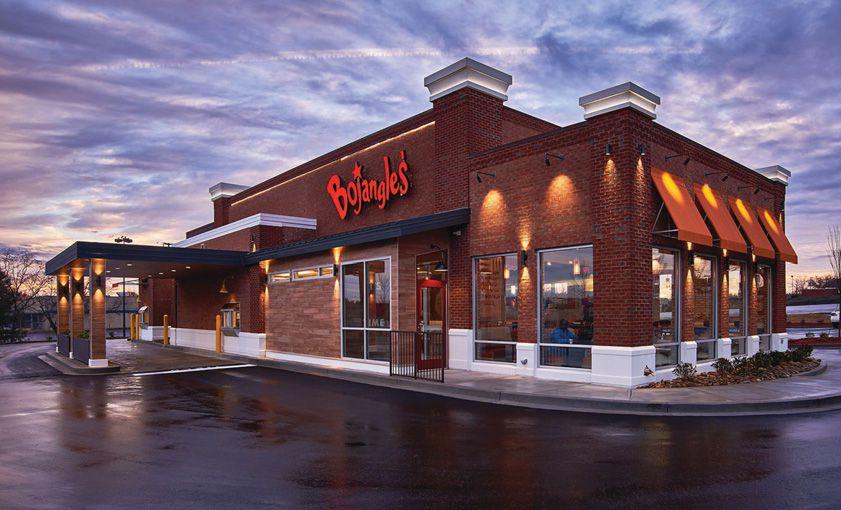
It’s been a busy stretch. Costa said he expects future development to be split 50/50 between new and existing franchisees.

CONTINUED ON PAGE 64
32
CKE IS SPENDING $500 MILLION TO REVITALIZE CARL’S JR. AND HARDEE’S, ESPECIALLY AT THE DRIVE-THRU.
CARL’S JR., BOJANGLES (2) 60 AUGUST 2022 | QSR | www.qsrmagazine.com QSR 50
AFTER A MULTI-YEAR TRANSFORMATIONAL JOURNEY, BOJANGLES APPEARS POISED FOR BIG-TIME EXPANSION.



S can to learnmor e Top 50 Reasons Accurate Box Company Should Be Your Packaging Supplier
Why 2021 Was a Mixed Blessing for QSR 50 Brands
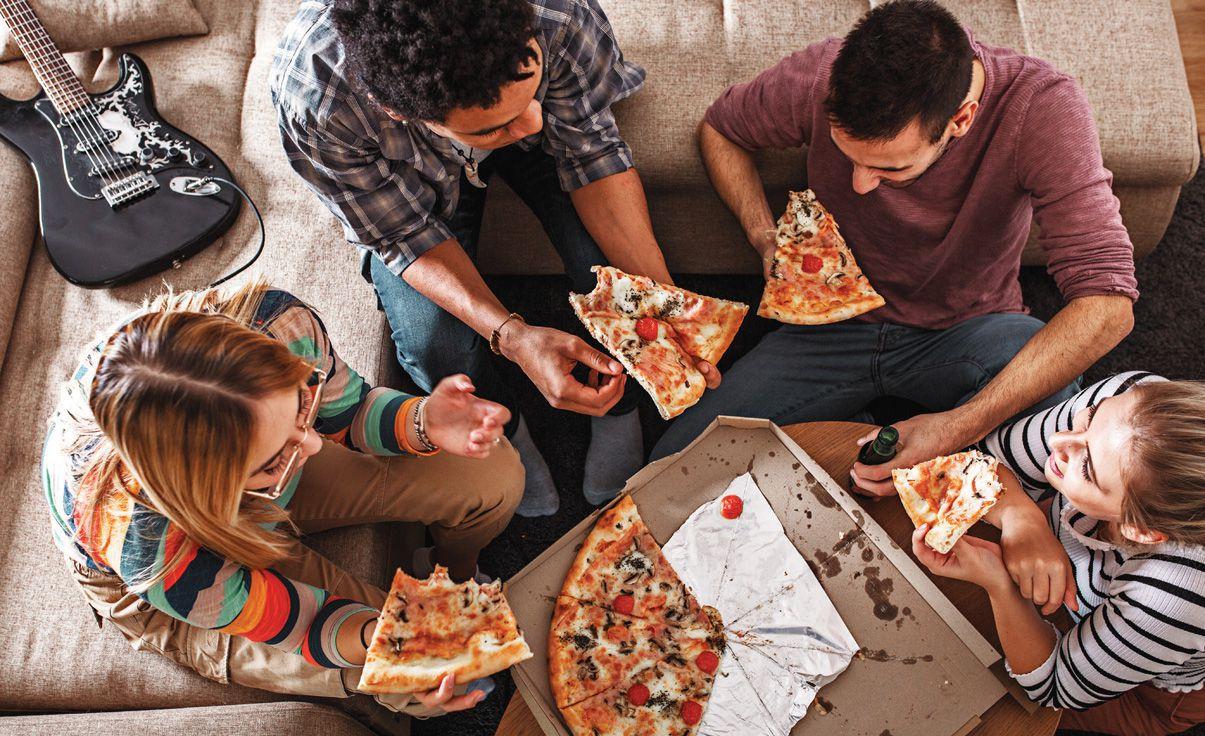
Let’s step away from the sales and into the consumer response. What did this past year tell us?
Many quick-service restaurant brands benefited from being well-positioned to support off-premises dining during COVID waves. Already serving a high percentage of sales through drive-thrus, they were set up to do more of the same. Or were they? Looking at satisfaction ratings for the QSR 50 brands, it appears their guests did not always feel the same. Guest satisfaction declined a quarter of a star from January to December 2021. While the entire restaurant industry also experienced a drop, it was less severe. So, what caused the downward shift, what impact did it have on sales, and what does this mean for the future?
The Why Behind the Movement
It seems QSR 50 chains were perhaps not as prepared as may have been concluded, at least from the perspective of consumers response. Review velocity increased dramatically from March through August of 2021. This likely indicates
/ BY ADAM LEFF
there was a similar increase in demand. Pent-up demand drove impressive sales comps, not only over 2020, but in some cases over 2019, as drive-thru and carryout became the go-to for COVID-conscious diners. However, the decline in satisfaction—especially the greater fall for the top quick-service chains in America—indicates fast food was generally not prepared to serve diners with the same level of guest experience as they were known for in the past ( labor shortages could be a culprit). Diners more frequently cited the quality of food declined, as did staff demeanor.
We can dig deeper into the feedback that makes up overall guest satisfaction to see why guests were less satisfied over time. Using Merchant Centric’s proprietary Artificial Intelligence, we count the number of positive and negative mentions within review feedback on key themes such as Food, Staff Demeanor, Staff Dedication, Timeliness, Service Accuracy, Price/Value, Loyalty & Referral and 100-plus additional themes. We then use Theme Performance Scores (TPS), the ratio of positive mentions for a theme relative to the
ADOBE STOCK / BALANCEFORMCREATIVE 62 AUGUST 2022 | QSR | www.qsrmagazine.com QSR 50
THEME PERFORMANCE SCORES * ( TPS )
percentage of negative mentions for the same theme. A TPS score of 1.0 indicates that guests mention that theme at the same rate positively and negatively. The higher the score, the better, as it indicates a higher ratio of positive mentions to negative mentions. The table below shows the TPS of key themes for the QSR 50 in 2021.
Praise for Food and Staff Demeanor have the highest mention rates in review feedback and, as seen in the table, also have the highest TPS scores. This indicates they are key themes guests focus on when determining their rating. The table shows that both declined over time, with Food declining 32 percent by end of year and Demeanor declining 26 percent. This indicates guest satisfaction with Food quality and staff Demeanor deteriorated significantly over 2021. Timeliness, another key theme for quick-service brands, had a similar decline as Food, although less frequently mentioned. Staff Dedication boasted the largest decline, occurring largely in the second half of the year, and appears to indicate restaurants are still struggling to hire, train, and retain staff with the same efficiency as pre-COVID. Ironically, Order Accuracy—another highly important theme for the sector—was not as negatively recognized over time. The decline in guest experience among the QSR 50 concepts resulted in declines in perception of Price/Value, ultimately challenging the all-important decision as to whether guests will remain loyal, return or refer others. We see respective declines for Price/Value and Loyalty/Referral at 23 and 22 percent, respectively.
So, what does this mean for the remainder of 2022 and beyond? Guests will show loyalty to brands that delight them with a wellrounded and high-quality experience, no longer simply because they are open and convenient. Quick-serves looking to understand why their comp sales in 2022 are down should explore what guests are saying online and via internal feedback forms. Ensuring your restaurant meets all the tenants of your brand promise will be key to winning in 2022, as the landscape is ripe with opportunity to capture loyal guests from competitors. Guests are starved for quality taste options served by gracious staff, which generally presents an opportunity for emerging chains. Just look at Chick-fil-A—which sits atop our guest satisfaction table ( left) —and see brands that deliver on what they are known for will succeed. q
a segment or cuisine. Please note that certain brands included herein are clients of Merchant Centric.
*THEME PERFORMANCE SCORES ( ) is the ratio of positive mentions for a theme relative to the percentage of negative mentions for the same theme in all reviews collected for the brand. A TPS score of 1.0 would indicate that guests mention that theme at the same rate positively and negatively. The higher the score, the better, as it indicates a higher ratio of positive mentions to negative mentions. SPECIAL NOTE: all data sets, are inherently limited in scope and nature. Data presented herein may not be comprehensive and may exclude certain brands or brand locations. Data is provided without guarantee as to its accuracy, completeness, or currency, and Merchant Centric expressly disclaims any and all liability resulting from reliance on information or opinions included herein. Brands selected are for illustrative purposes only and data should not be relied on as reflective of or attributable to all brands within
Adam Leff is the co-founder and Chief Strategy Officer for Merchant Centric, a leading reputation management solution that caters to the restaurant, veterinary, and automotive industries.
GUEST SATISFACTION RANK COMPANY 1 CHICK-FIL-A 5.65 2.37 1.40 2 CULVER’S 6.47 3.41 2.09 3 RAISING CANE’S 5.71 2.22 1.94 4 IN-N-OUT BURGER 5.88 6.75 2.60 5 PAPA MURPHY’S 7.70 2.53 1.54 6 FREDDY’S FROZEN CUSTARD 5.36 2.95 2.20 7 FIVE GUYS 5.16 1.87 1.48 8 STARBUCKS NA NA NA 9 KRISPY KREME 6.50 3.00 0.75 10 FIREHOUSE SUBS 5.50 1.57 1.37 11 McALISTER’S DELI 5.08 1.73 1.51 12 JERSEY MIKE’S 5.23 1.72 1.37 13 SHAKE SHACK 3.00 1.78 1.54 14 DAIRY QUEEN 3.68 1.55 0.92 15 MARCO’S PIZZA 4.79 4.21 1.46 16 ARBY’S 3.77 1.70 1.06 17 WHATABURGER 2.46 1.25 0.73 18 WHITE CASTLE 2.75 1.60 0.89 19 MOE’S 2.99 1.37 0.95 20 SUBWAY 3.29 1.31 0.81 21 ZAXBY’S 2.80 0.91 0.86 22 QDOBA 2.98 1.39 1.09 23 TROPICAL SMOOTHIE CAFÉ 2.68 1.11 0.90 24 PIZZA HUT 2.26 1.09 0.87 25 DEL TACO 2.66 1.06 0.87 26 CARL’S JR 2.29 1.20 0.75 27 PANERA BREAD 3.09 1.23 0.90 28 SONIC DRIVE-IN 2.28 0.92 0.77 29 BASKIN-ROBBINS NA NA NA 30 HARDEE’S 2.60 1.37 0.74 31 DUNKIN’ 1.91 1.18 0.63 32 BOJANGLES 2.83 1.04 0.76 33 TIM HORTONS 1.80 1.24 0.69 34 LITTLE CAESARS 2.50 0.69 0.70 35 CHECKERS/RALLY’S 2.62 0.83 0.70 36 EL POLLO LOCO 2.20 0.90 0.79 37 JACK IN THE BOX 2.02 0.82 0.71 38 WENDY’S 2.10 0.80 0.68 39 TACO BELL 2.25 1.08 0.74 40 PANDA EXPRESS 2.09 0.97 0.73 41 CHURCH’S CHICKEN 2.39 0.88 0.65 42 JIMMY JOHN’S 3.64 0.90 0.77 43 WINGSTOP 2.05 1.02 0.91 44 McDONALD’S 1.27 0.84 0.61 45 DOMINO’S 1.77 0.52 0.66 46 PAPA JOHNS 1.99 0.62 0.63 47 BURGER KING 1.43 0.84 0.56 48 POPEYES LOUISIANA KITCHEN 2.26 0.69 0.58 49 KFC 1.67 0.75 0.55 50 CHIPOTLE 1.51 0.73 0.57 FOOD DEDICATION LOYALTY & REFERRAL LEADERS: 3.89+ STARS (OUT OF FIVE STARS) STRADDLERS: 3.61-3.88 STARS CHASERS: 3.60 AND BELOW d 3 320 2 32% D 30 2 22 26% edcat o 36 39 00 9% Ti i 101 08 069 32% O d 06 066 061 4% i e 139 12 10 23% f 11 096 089 22% KEY THEME S Foo 3.77 2.55 -32 emeanor 3.05 2.74 2.25 -26 Dedication 1.36 1.39 -49 Timeliness 0.84 -32 rder Accuracy 0.64 -4 Price/Value 1.24 1.07 -23 Loyalty/Referral 1.14 -22 JAN UARY 2 0 21 TP S JU NE 2 0 21 TP S DEC EMBER 20 21 TP S C HAN G E BY END O F 2021 www.qsrmagazine.com | QSR | AUGUST 2022 63 QSR 50
In-N-Out Burger

The 1948-founded classic has remained steady across the COVID era, which is no great surprise given its drive-thru base ( History.com credits Harry Snyder’s 100-square foot store as the first iteration of the modern setup, with an intercom and pickup window). In-NOut added 11 stores from 2019–2022 before tacking on five this past year. The brand remains content to scale regionally and feed one of the sector’s true cult followings. The brand made headlines in fall 2021 for refusing to check the vaccine status of dine-in guests. In-N-Out sent ABC7 News a statement in October saying, in part, they “refuse to become the vaccination police for any government.” A San Francisco location was ordered to briefly shut down by the Department for Public Health. It reopened the next day for takeout only.
Firehouse Subs
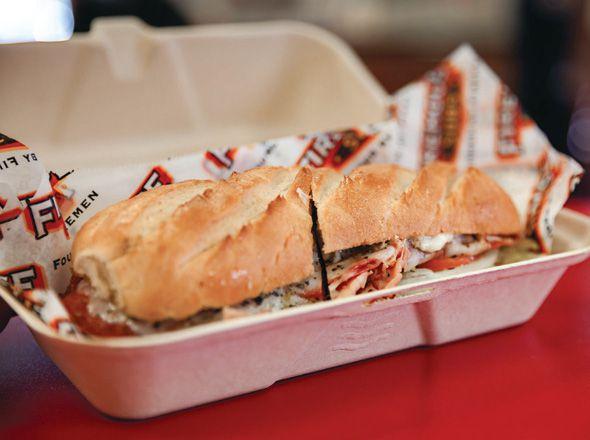

Without much debate, 2021 will go down as a pivotal point in Firehouse’s history. Founded in 1994 by brothers and former firefighters Chris and Robin Sorensen, the chain was a privately held company since store one in Jacksonville, Florida, to the 1,200th. That changed in November when Burger King parent RBI scooped up Firehouse for $1 billion in an all-cash transaction. On the surface, the deal was a seismic one since it gave the Popeyes and Tim Hortons owner a growing concept in America’s $30 billion quick-service sandwich category. Firehouse stepped in having tripled its unit count since 2010 and secured $1.1 billion in systemwide sales this
past year, which signaled a quadruple of performance over that stretch. For perspective, Firehouse posted $870 million in 2020. The big kicker—more than 27 percent of 2021’s sales came through digital channels.
If that’s not enough, however, RBI’s motivation crystalized in February when Firehouse reported its first sales report as a public brand. Domestic same-store sales were up 15.2 percent, year-over-year, in Q4, and 23.4 percent on a two-year stack. For all of 2021, U.S. comps soared 21 percent (20.6 percent across two years). Also, Firehouse’s AUVs of $900,000 were a record.
With RBI’s infrastructure and support in tow, Firehouse’s future now turns to unit growth. Company CEO Cil ( long-time executive Don Fox is still helming Firehouse’s operations) said in Q4 RBI was eager to shift Firehouse’s expansion into “high gear in the coming years,” similar to what it’s done with Popeyes. This is especially true overseas. When the deal was struck, Firehouse operated in just three countries and territories. Burger King was in more than 120, Tim Hortons north of 10, and Popeyes over 30. “To really start to bust it out and increase development, it takes a well-resourced partner with not just a matter of capital resources, but expertise, talent, and scale,” Fox said.
Furthermore, Firehouse added a new member to its C-suite for the first time in 11 years in February. Mike Hancock, an RBI vet who spent nearly nine years with the company, including most recently as chief operating officer at Tim Hortons, joined as Firehouse’s COO. The move will help accelerate the brand’s North America development.

Krispy Kreme
Like Firehouse, Krispy Kreme headed to the public sector in 2021. The doughnut chain’s second stint on the stock market came on the heels of a five-year brand
33
34
35
QSR 50
ADOBE STOCK WIRESTOCK, FIREHOUSE SUBS (3) 64 AUGUST 2022 | QSR | www.qsrmagazine.com
FIREHOUSE SUBS IS NOW PART OF THE RESTAURANT BRANDS INTERNATIONAL FAMILY.
























































































































































































































































































































































































































































































































































Visit howardcompany.com or call 800.782.6222 today! OUR TEAM IS WITH YOU ALL THE WAY! THE HOWARD COMPANY WE ARE MORE THAN JUST HARDWARE Our experts blueprint solutions for a high-functioning drive-thru lane and custom, flexible menu boards! Our designers create, manage, and update content to meet your strategic goals! Our account managers guide your orders through the entire process! Our technical support is always here to help! Our installers get your system up & running before you open! We provide digital menu boards, canopies, clearance bars, communication tools and more! SCAN ME
transformation. And it’s a story of accessibility and a “hub-and-spoke” model that’s connecting all of it. For the year, net revenue grew 23.4 percent to $1.38 billion, while organic revenue lifted 12.5 percent to $1.24 billion. In Q4, adjusted EBITDA increased 14.4 percent to $47.7 million, fueled by a 290-basis-point improvement in U.S. and Canada margins.
But again, logistics are what’s fueling optimism. The hub-and-spike concept allows production facilities (hubs) to deliver fresh doughnuts daily to numerous points of access (spokes), including retail shops, convenience stores, food carts, and more. Previously, Krispy Kreme leveraged a wholesale business that distributed older, discounted products. Since doughnuts are now fresher, the chain has more room to price, meaning higher profit, executives said. U.S. cities that have fully implemented the change from the legacy wholesale business are seeing 300–400 basis points of benefit to margins. And it’s only growing. Krispy Kreme finished 2021 with 10,427 points of access around the world, a 25 percent increase, year-over-year. The company expects to reach 50,000 in the coming calendars through at least 10 percent annual growth. That includes another 10,000 in the U.S. and 30,000 between international markets and the market development segment (stores in Japan and the franchise business)
The growth will come primarily through delivered fresh daily doors (i.e. grocery, convenience stores) that cost only $2,000–$10,000 per outlet and enable the company to drive economies of scale from its 411 production hubs globally.
Currently, Krispy Kreme operates in more than 30 countries, and going forward, it plans to debut in at least three new countries each year. In 2022, hubs will open in Switzerland and Chile, and more entries will be announced in the coming months.
In addition, 17 percent of retail sales in 2021 came from e-commerce, an increase from less than 10 percent before COVID. The long-term goal is to achieve more than a 25 percent mix. Krispy Kreme earned $134 million in e-commerce revenue in 2021, growth of 15 percent compared to 2020.
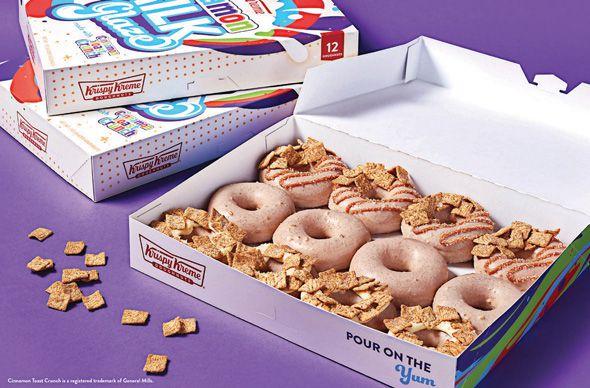
El Pollo Loco
Under new CEO Larry Roberts, El Pollo Loco is moving forward with aggressive franchise growth in new markets. But the executive noted in March the pace of development isn’t quite where he’d like it to be. In response to the underperformance, the fast casual added a senior vice president of franchising and director of franchise sales who is solely focused on recruiting new operators. The brand also formulated a fresh franchising website featuring print and video marketing

El Pollo is widening its efforts to include larger, multiconcept franchisees, in addition to mid-scale operators. Also, senior management will be involved earlier in the recruiting process, like attendance at various conventions.
In terms of menu innovation, the fast casual known for chicken meals turned to Shredded Beef Birria, an LTO that drove new company, franchise, and system sales records three weeks in a row during March and April. Additionally, the Shredded Beef Birria Burrito was promoted on National Burrito Day, resulting in a record sales day. The menu innovation worked so well that El Pollo is Roberts, who previously served as CFO, took over the CEO position from Acoca, who is now the leader of Zaxby’s.
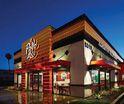
36
KRISPY KREME IS PUBLIC AGAIN, AND TAKING AIM AT EXPANDING POINTS OF ACCESS ACROSS THE GLOBE.
KRISPY KREME, EL POLLO LOCO (2) 66 AUGUST 2022 | QSR | www.qsrmagazine.com QSR 50
EL POLLO LOCO STRUCK IT BIG WITH A BEEF BIRRIA LTO.
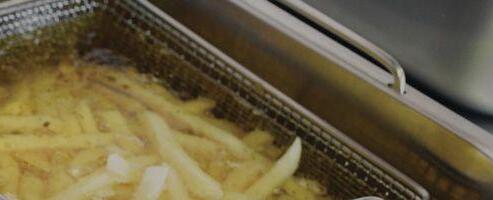



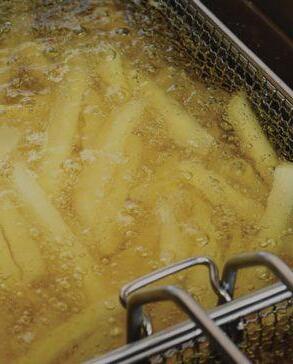

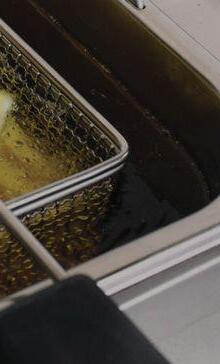











Tropical Smoothie Cafe
The better-for-you fast casual opened its 1,000th location systemwide in 2021—just one of many milestones it accomplished that year. Tropical Smoothie Cafe signed 332 franchise agreements last year, the most in brand history. It also saw same-store sales rise 22 percent compared to 2020 and 29.4 percent against 2019, pushing its

Digital sales mixed 76 percent, fueled by customizable online and mobile ordering. Also, Tropical Smoothie’s Cajun Shrimp Wrap and Cajun Shrimp Salad became the most popular LTO in company history and the Mango Berry Cosmo Smoothie became the best-sell-
The accomplishments continued through the first part of 2022. The first quarter was one of Tropical Smoothie’s best-performing periods in company history. The chain signed 56 franchise agreements, including the brand’s first airport location. More than 70 percent
Tropical Smoothie finished 2021 with roughly 1,040 units and an AUV of $948,000. The long-term goal is to reach 1,500 outlets by 2024, with a $1.2 million AUV and
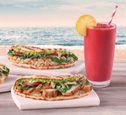
Early in 2022, Bloomberg reported Tropical Smoothie was considering going public. The media outlet said the
Del Taco
Del Taco is boosting growth through its new Fresh Flex prototype, which features two drive-thrus—one of them for online orders—and a pickup locker at the front entrance. The drive-thru leverages digital menuboards, which improve accuracy and help customers in new
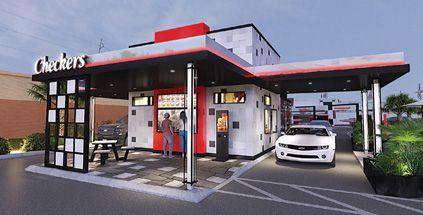
The name of the model has a specific purpose. The “Fresh” portion is displayed through light green col-
oring and animations of the sun against contrasting gray and white walls. The “Flex” showcases the prototype’s ability to fit on multiple pieces of real estate, from a 1,150-square-foot drive-thru-only design to a 2,300-square-foot building with a full dining room. Previously a Del Taco restaurant needed about 25,000 square feet of land, but the Fresh Flex can be placed in space as
The model was unveiled in January 2021, and provided a lift to franchise growth. The fast casual signed nine deals last year for 68 restaurants in 10 states. All of


In March, Jack in the Box completed its $585 million acquisition of the taco chain. The move created a multi-brand platform with more than 2,800 restaurants in 25 states.
Checkers/Rally’s
Checkers is making history in 2022. The classic fastfood chain partnered with Presto to become the first restaurant to nationally roll out automated voice-ordering technology, doing so at roughly 250 company-run stores by the end of the year. The innovation, which recognizes accents and colloquialisms, has 98 percent order accuracy and higher—well beyond the original
At the same time, Checkers is continuing to roll out its Fit Kitchen, a new format removing a mile and a half of unnecessary walking per hour collectively, replacing flattops with clamshell grills to boost quality and consistency, and leveraging holding equipment that keeps products hotter for longer, uses fry stations and grill positions with better capacity, and removes final cooking processes from most fried products. The new format was installed at 80 company-run restaurants in 2021.
Last year, the chain sealed 90 new franchise commitments, including 39 for existing franchisees and 51 for new operators. The plan is to open more than 60 restaurants in 2022. Expansion will be geared toward
37
38
39
TROPICAL SMOOTHIE CAFE’S SAME-STORE SALES CLIMBED MORE THAN 20 PERCENT LAST YEAR.
TROPICAL SMOOTHIE CAFE (2), DEL TACO, CHECKERS/RALLY’S (2) 68 AUGUST 2022 | QSR | www.qsrmagazine.com QSR 50
DEL TACO HAS A NEW OWNER, AND STORE MODEL, TO OFFER GROWTH-MINDED OPERATORS.
N2Mobile™

PORTABLE COLD BREW & NITRO COFFEE DISPENSER
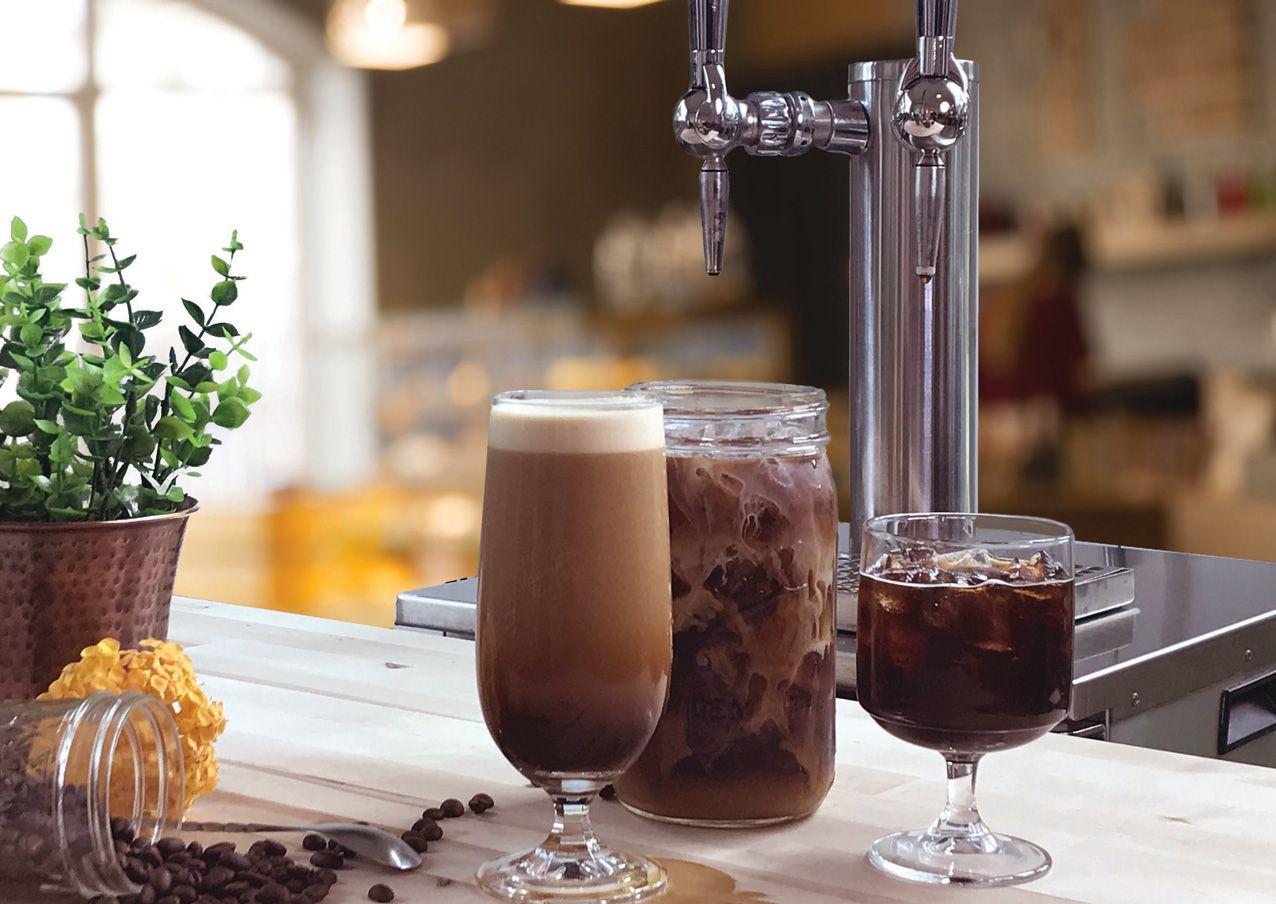
THEATER OF THE POUR
Craft nitro infusion creates a beautiful cascade and velvety texture, every pour


SIMPLE TO MAINTAIN
Simple daily and weekly cleanings are done in minutes
COMPACT MOBILITY
Cordless unit on casters brings café quality anywhere you need it in a small footprint
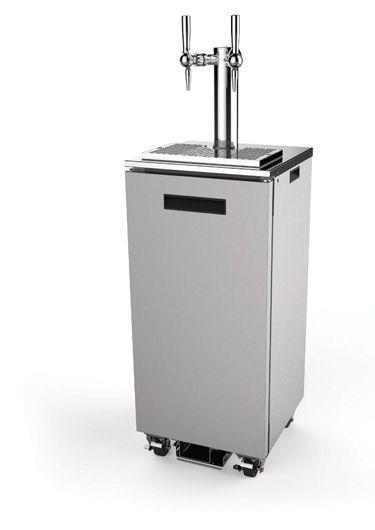
EASY INSTALLATION
Leverages ice packs and on board nitrogen, no utility connections required
Refreshing the Experience 800.367.4233 | multiplexbeverage.com ALL NEW Now Serving Everywhere!
California, Texas, Arizona, Massachusetts, Connecticut, and North and South Carolina.
Checkers ended 2021 with 834 restaurants, a net loss of 13 stores. Of that total, approximately 570 units are
Marco’s Pizza
Marco’s Pizza is the sixth-largest pizza chain in the country in terms of footprint, but the fast-food chain is looking to change that in the coming years. More than 200 restaurants are in development, and the goal is to eclipse 1,500 by 2023 and 2,000 by 2026. In March, the company revealed a 46-unit agreement to grow in the Phoenix area over the next six years. Those units will be opened by area representative and franchisee Rob-
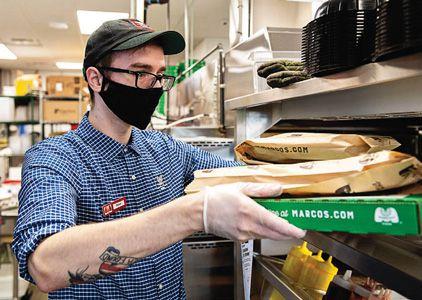

To further simplify the expansion process for franchisees, the pizza chain announced in April that it implemented enhancements to its financing, growth incentives, real estate, design, and construction sup-
The brand earned $899 million in systemwide sales in 2021, but this year, the chain is projected to surpass $1 billion and open more than 150 restaurants alongside
From a consumer perspective, Marco’s is working of launching the technology systemwide by the end of 2022. The speech-enabled application uses conversational artificial intelligence ( ), which yielded 100 percent order accuracy in initial beta testing as well as increased employee and customer satisfaction.
41 McAlister’s
McAlister’s, which saw $869 million in systemwide sales in 2021, believes it’s capable of reaching $1 billion by 2024. If the fast casual accomplishes this feat, it would become the first restaurant under the Focus Brands umbrella, which includes Auntie Anne’s, Carvel, Cinnabon, Jamba, Moe’s Southwest Grill, and Schlotzsky’s to do so. The brand crossed 500 domestic units last year. The pivotal 500th store was opened by McAlister’s largest franchisee, David Blackburn of Southern Rock Restaurants. In October, the fast casual said it had a pipeline of more than 300 stores. The Saxton Group, a franchisee overseeing roughly 80 locations in the Midwest, signed a 32-unit deal. Sun Holdings, another major
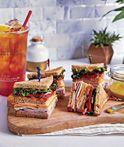
To make ordering easier for guests, McAlister’s launched tableside ordering in early 2021. The technology, active in more than 300 restaurants by October, allows guests to skip the line and order at their seat via the app.
42 QDOBA
The Mexican fast casual is firmly in growth mode— a reality supported by its June announcement Jim Sullivan was joining as chief development officer. Sullivan previously held the role at CKE and clocked more than two decades in real estate, franchise development, and site acquisition management. By February, QDOBA announced a multi-unit deal to bring 30 locations to Florida’s North Dade, Broward, and Palm Beach Counties over the next decade. It marked the largest franchise agreement in brand history. QDOBA has its sights on 2,000 stores and inked 60 franchise commitments in 2021. Sullivan said QDOBA plans to open more

40
McALISTER’S IS NOW OFFICIALLY A MEMBER OF THE 500-UNIT CLUB.
MARCO’S PIZZA (2), McALISTER’S, QDOBA 70 AUGUST 2022 | QSR | www.qsrmagazine.com QSR 50
QDOBA RECENTLY STRUCK ITS LARGEST FRANCHISE DEAL IN BRAND HISTORY.

Wings so delicious our advertising agency keeps ordering “samples.” waynefarms.com/wings 800-392-0844
than 60 in 2022 before ramping up to 100–120 stores per year. There’s plenty of franchise whitespace ahead (of QDOBA’s roughly 750 stores, about 40 percent are corporate owned)
Papa Murphy’s
Over the summer, Papa Murphy’s lifted the lid on its first new store design since 2014. It back-ended what’s been a four-year modernization project. In March of that year, Papa Murphy’s fully rolled its online ordering partnership with Olo. Six months later, the chain launched a new mobile app that “seamlessly integrated” into the brand’s POS and proved to be “a great facilitator of driving convenience.” Next, Papa Murphy’s worked to strengthen the relationship with franchisees. In April 2019, foodservice conglomerate MTY Food Group purchased the brand for $190 million. The first year under MTY was rocky (COVID), but the rebranding mission never wavered. It took on a physical form in late June with Papa Murphy’s first logo update in more than a decade alongside the store update. The new primary logo is Papa Murphy’s red, with alternate black and white options.

Most vividly, the model itself leans into the company’s take-and-bake identity and serves as an extension of home kitchens. Called “Kitchen Delite,” it gives off a lighter and fresh feel, features an open kitchen, a faux white brick wall, bright coloring, and a layout that simplifies online ordering pickup and third-party delivery. Also, the menuboard uses dynamic digital photography to better highlight Papa Murphy’s products. With the new design, Papa Murphy’s wants to show guests
that it’s locally owned and operated, so there are elements in the store that specifically showcase the local community, executives said. Victoria Tullett, senior vice president of development and general counsel, said she was hopeful at least 500 stores would be completed before 2023, with a larger goal to reach 1,000.
Shake Shack

The burger fast casual dealt with its share of COVID hurdles in 2021, including an Omicron-triggered stretch that, plus weather, drove 87 full days of Shake Shack closures and a high single-digit reduction in operating hours. However, the brand’s trajectory keeps pointing up. Its overall fiscal 2021 systemwide sales of $1.1 billion marked the highest figure in company history. One of the reasons Shake Shack was able to recapture sales so quickly and counter yet another wave was the fact it’s progressed well past the “pivot” era of its digital transformation.
As of Q4’s close, the company had added 3.5 million new app and web purchases since March 2020. In the period, it grew its first-time web and app customer base by nearly 10 percent quarter-over-year and by more than 80 percent for the full year 2021. And Shake Shack continues to lean into more personalized and digital marketing, as well as key limited-time offers.
Come December, Shake Shack retained nearly 80 percent of the digital business it generated in January, even as in-store sales nearly doubled. Digital mix was 42 percent of sales in Q4 and nearly 60 percent when considering kiosks and the brand’s native digital channels combined.

This digital backbone is paving plenty of runway. Shake Shack opened 36 domestic company-owned units in 2021 at an AUV of $3.9 million. The long-term aim remains 450 domestic stores. Globally, Shake Shack had 386 locations as of May.
But the headliner might just be the stores themselves. The class of 2022 features a large commitment
44
PAPA MURPHY’S UNVEILED ITS FIRST LOGO UPDATE IN MORE THAN A DECADE.
43
SHAKE SHACK’S SUSTAINABILITY EFFORTS ARE EVOLVING ALONGSIDE ITS GROWTH GOALS.
PAPA MURPHY’S / KELLY CAMERON, SHAKE SHACK (2) FOOD IMAGE: EMILY HAWKES 72 AUGUST 2022 | QSR | www.qsrmagazine.com QSR 50



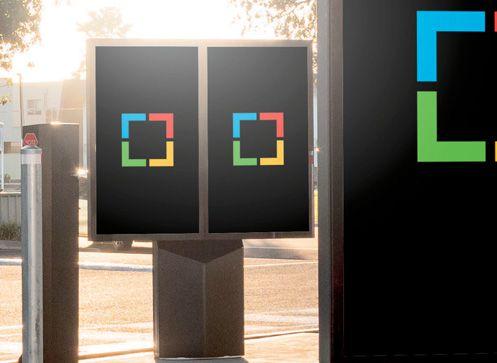

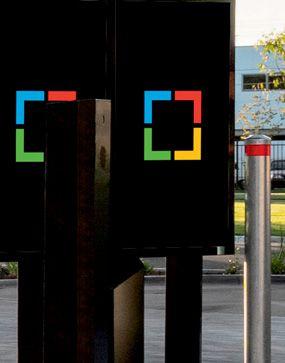






For more information: CoatesGroup.com info@coatesgroup.com Leading the Industry Immersive Customer Experiences Powered by Digital Hardware & Switchboard™ CMS
to new formats like drive-thru, with 25 percent of the fleet boasting a “Shake Track” walk-up or drive-up window. In December 2021, Shake Shack opened its first two drive-thrus—in Maple Grove, Minnesota, and Lee’s Summit, Missouri. That number is expected to reach double-digits before 2023 arrives. “Unlocking this potential can have a tremendous impact on our long-term addressable market, and we’re focused on deepening our investments, resources, and learning about this critical new addition to the Shack family of experiences,” CEO Randy Garutti said in February.
Church’s Chicken
Church’s was one of the industry’s M&A targets in 2021. FFL Partners agreed to sell the chicken chain to Quiznos parent High Bluff Capital Partners last August for an undisclosed amount. It came in with some momentum, too. At the end of June, the brand reported comps were increasing 15 percent systemwide, year-over-year, and average check was up more than 30 percent. The chain was also ahead of where it was in 2019 when it surpassed a 10-year company record for systemwide sales. The company said it expected to open nearly 100 restaurants worldwide in 2021, up from 79 new openings last year.
Church’s sales growth accelerated due to the launch of long-planned advancements in digital marketing, order head, and delivery. Order ahead and takeout orders increased 540 percent in 2020, along with a 77 percent lift in third-party delivery. A new website, channel strategy, and mobile welcomer ( location finder) were rolled out to help guests go from first impression to desired action within three clicks.
More recently, Church’s tapped industry vet Frank Costello as VP of U.S. franchise development. The former TBC Corp exec plans to develop an aggressive strategy of new restaurant development, recruitment, and selection of new U.S. franchisees, the company said. Additionally, he will oversee the implementation of Church’s “Blaze” image and reimage initiative. 46
Freddy’s Frozen Custard & Steakburgers
Freddy’s posted another stellar run in 2021, notching a 17.8 percent increase in systemwide sales, year-overyear. It also opened 32 new restaurants, including debut units in New Jersey and Wisconsin. Meanwhile, Freddy’s signed 17 multi-unit deals with new and existing franchisees to add 102 locations to a stuffing pipeline. This should carry the chain into fresh markets such as the Dakotas alongside further development into New


Jersey, Texas, Indiana, and Chicago, over the next several years.
Freddy’s 2021 started with a March deal that saw the nearly 20-year-old brand acquired by private equity firm Thompson Street Capital Partners. CEO Chris Dull called 2021, “one of the most transformative and noteworthy years in our company’s history.” Franchisees reported AUV growth of 13.7 percent and began 2022 with plans to open 15 or so stores across the first 75 days of the calendar. Looking forward, it figures 40 total venues for 2022, with hopes to double its footprint within the next four years, bringing the total unit count to 800 by 2026. In Q1 2022, Freddy’s signed six new multi-unit agreements (for 64 stores) and opened 11 locations.
Earlier in April, Freddy’s also announced the opening of its first airport location in the Will Rogers World Airport in Oklahoma City.
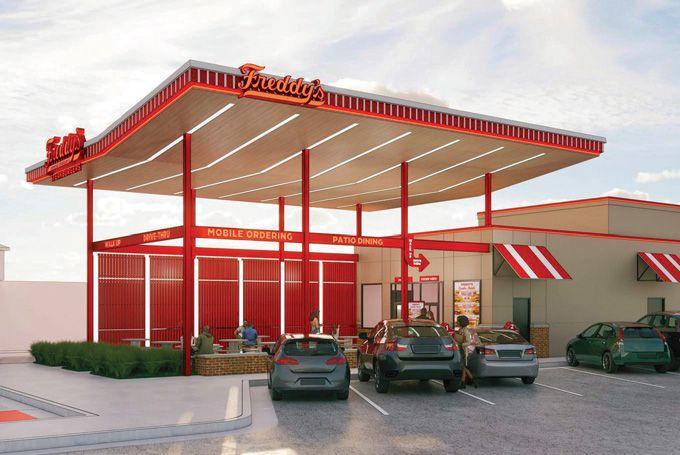
47 Tim Hortons
Out of Restaurant Brands International’s portfolio (Burger King, Tim Hortons, Firehouse Subs, and Popeyes), Tim Hortons continues to showcase the heftiest digital business, with the web/app channels mixing more than 36 percent in the first quarter, and more than
The chain’s back-to-basics strategy has paid dividends and strengthened its positioning and market share in the flagship categories of breakfast foods and coffee, CEO Cil said. Tim Hortons’ freshly cracked eggs platform helped drive breakfast food market share to its highest level in more than five years. In Q1, all product segments and dayparts contributed to positive sales performance and increased throughout the quarter, with lunch, foods, and baked goods standing out on the product side and morning and lunch excelling for the daypart side.
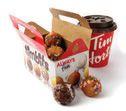
45
FREDDY’S YEAR BEGAN WITH AN EQUITY DEAL, AND FOLLOWED WITH PLENTY OF GROWTH.
FREDDY’S FROZEN CUSTARD & STEAKBURGERS (2),
74 AUGUST 2022 | QSR | www.qsrmagazine.com QSR 50
TIM HORTONS’ DIGITAL GAINS ARE PAVING THE WAY FOR U.S. EXPANSION.
TIMBITS: ADOBE STOCK SOCKAGPHOTO, TIM HORTON’S EXTERIOR: ADOBE STOCK REDFOXCA

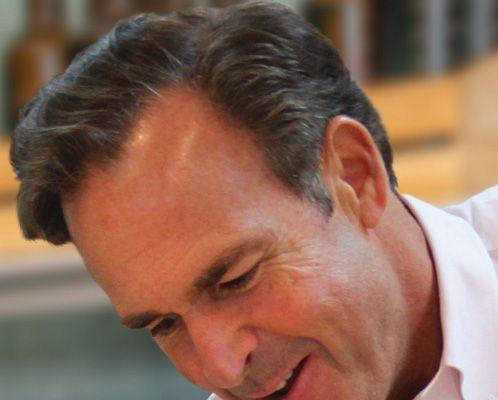

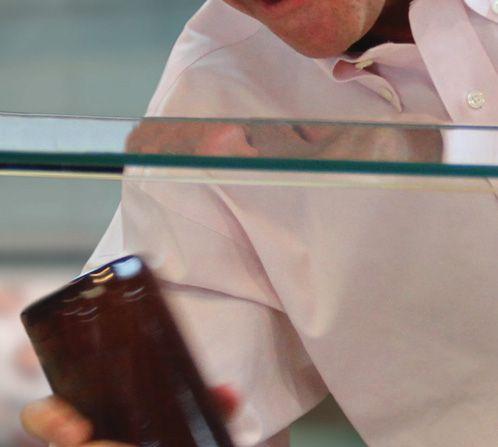







Domestically & Internationally! Join the Movement A Sub Above, LLC, 2251 Landmark Place, Manasquan, NJ 08736 Jerseymikes.com/franchise franchise@jerseymikes.com You can become a JERSEY MIKE’S OWNER! WE ARE JUST STARTING TO GROW... Founder / CEO Peter Cancro
From legacy chains to rising upstarts, here’s a look at 50 brands ready to break through in the coming years. All information in this chart, except for where * is indicated, was submitted directly to QSR magazine. The list is ranked by total systemwide sales from the pool of submissions.
9
* INCLUDES FIGURES ESTIMATED BY QSR 1 SMOOTHIE KING SNACK $ 602 $609 1,302 56 1,360 55 2 HABIT BURGER BURGER $ 600 $2,030 31 276 307 29 3 AUNTIE ANNE’S SNACK $ 576 $637 1,126 12 1,138 -14 4 CAPTAIN D’S SEAFOOD $ 567 $1,094 294 242 531 2 5 STEAK ‘N’ SHAKE BURGER $ 539 $1,764 337 199 536 -20 6 PORTILLO’S* SNACK $ 526 $7,900 0 69 69 5 7 JAMBA SNACK $ 505 $754 747 3 750 -17 8 SCHLOTZSKY’S SANDWICH $ 332 $1,090 300 24 324 -9 9 KRYSTAL BURGER $ 323 $1,126 105 182 287 3 10 FAZOLI’S GLOBAL $ 298 $1,454 156 57 213 3 11 PIZZA RANCH PIZZA $ 279 $1,312 207 6 213 2 12 SCOOTER’S COFFEE SNACK $ 263 $801 379 21 400 92 13 PENN STATION SANDWICH $ 258 $820 311 1 312 2 14 CHICKEN SALAD CHICKEN $ 255 $1,293 150 55 205 29 CHICK 15 MOUNTAIN MIKE’S PIZZA $ 254 $1,083 246 0 246 18 16 SMASHBURGER BURGER $ 253 $3,331 128 117 245 9 17 CINNABON SNACK $ 224 $637 938 1 939 2 18 WETZEL’S SNACK $ 219 $702 300 34 351 7 19 DONATOS PIZZA $ 211 $1,249 117 52 169 1 20 NEWK’S SANDWICH $ 208 $2,056 87 18 105 5 21 BONCHON CHICKEN $173 $1,594 111 4 115 8 22 WABA GRILL GLOBAL $170 $900 184 5 189 0 23 THE HUMAN BEAN SNACK $109 $916 116 13 129 16 24 CAPRIOTTI’S SANDWICH $108 $933 155 13 169 55 25 GREAT HARVEST SANDWICH $108 $634 169 1 170 -3 BREAD COMPANY 26 TERIYAKI MADNESS GLOBAL $ 90 27 ROY ROGERS BURGER $ 82 28 PIZZA GUYS PIZZA $ 79 29 MOOYAH BURGER $ 71 30 SALSARITA’S GLOBAL $ 68 31 DOG HAUS SNACK $ 67 32 GOLD STAR BURGER $ 61 33 HAWAIIAN BROS GLOBAL $ 55 34 HONEYGROW GLOBAL $ 55 35 ROBEKS SNACK $ 50 36 PJ’S COFFEE OF SNACK $ 46 NEW ORLEANS 37 KOLACHE FACTORY SNACK $ 46 38 JUICE IT UP! SNACK $ 43 39 HAPPY JOE’S PIZZA $ 38 40 RUSTY TACO GLOBAL $ 35 41 WING ZONE CHICKEN $ 34 42 SWIG SNACK $ 29 43 PICKLEMAN’S SANDWICH $ 29 44 KILLER BURGER BURGER $17 45 WING SNOB CHICKEN $15 46 SOBOL GLOBAL $13 47 BAD ASS COFFEE SNACK $12 OF HAWAII 48 ASIAN BOX GLOBAL $11 49 SAUCE ON THE SIDE GLOBAL $
50 MICI ITALIAN GLOBAL $
TheContenders/ COMPANY COMPANY SEGMENT SEGMENT 2021 U.S. SYSTEMWIDE SALES (MILLIONS) 2021 U.S. SYSTEMWIDE SALES (MILLIONS) 2021 AVERAGE SALES PER UNIT (THOUSANDS) 2021 FRANCHISE/ LICENSE UNITS 2021 COMPANY UNITS 2021 TOTAL UNITS TOTAL CHANGE IN UNITS FROM 2020 RANK RANK
7
Baskin-Robbins
vice division. Meanwhile Smith previously worked as COO of Taziki’s, overseeing inrestaurant technology, training, supply chain and purchasing and store support
The chain finished 2021 with 659 restaurants, down 22 units from the year before. It earned $1.07 million in AUV and
In the spring, the classic ice cream chain announced a refreshed brand image, including an update to the logo, packaging, and employee uniforms. The movement came with a new tagline that encourages customers to “Seize the Yay.” To celebrate the rebrand, Baskin-Robbins launched branded merchandise for the first time in its 77-year-old history and developed three new ice cream flavors, including Non-Dairy Mint Chocochunk, Ube Coconut Swirl, and Totally Unwrapped (peanut butter and chocolate packed with fudge-


Baskin’s same-store sales grew 9.9 percent year-over-year and lifted 13.6 percent on a two-year basis. The chain opened a net of 102 stores in 2021, pushing it to more
Moe’s Southwest Grill
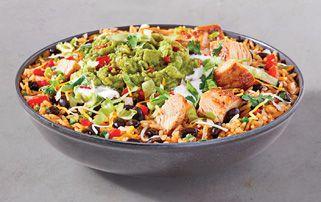

Moe’s spent the first half of 2022 improving its leadership team. In March, Tory Bartlett was named chief brand officer after leading Schlotzsky’s to a record growth year in 2021. A month later, the fast casual revealed the hiring of Annica Conrad as vice president of marketing and




Conrad joined Moe’s from FAT Brands, where she served as CMO of the quick-ser-
White Castle
The legacy chain honored its 100th birthday in May last year with the opening of its largest location—4,567 square feet—in Orlando. It was the first time White Castle has been in Florida since 1968. In 12 months since that debut, the restaurant
became the top-performer among the brand’s more than 350 restaurants and sold

In 2022, White Castle had even more reasons to celebrate. In late April, the company announced The Original Slider and Cheese Slider surpassed $28 billion in sales. That includes 22 billion sliders sold in restaurants and another 6 billion sold
Additionally, the brand rolled out its first menu innovation in years with the 1921 Slider, which includes a 100 percent beef patty topped with cheddar cheese, grilled caramelized onions, a slice of Roma tomato, lettuce, and pickles. The product is inspired by White Castle’s first slider when it opened more than 100 years ago.
More recently, White Castle began to lean back into its late-night prowess with a merchandise and packaging lineup. q
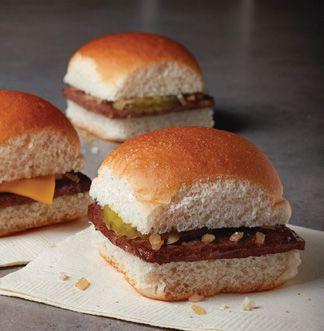
$1,161 100 1 101 17 $1,813 25 17 42 -7 $1,102 68 7 75 5 $866 88 1 89 5 $1,219 47 9 56 6 $1,653 49 2 51 13 $958 60 7 67 -5 $4,400 0 26 26 17 $2,300 0 25 25 1 $1,093 85 1 86 3 $454 130 11 141 17 $774 30 29 59 2 $575 78 1 79 0 $985 36 9 45 1 $988 37 0 37 6 $1,001 34 0 34 4 $989 0 38 38 8 $1,271 24 0 24 1 $1,400 4 12 16 3 $1,051 18 0 18 6 $216 55 3 58 8 $720 20 0 20 0 $1,500 0 8 8 -2 $1,053 6 3 9 1 $1,204 0 7 7 2 2021 AVERAGE SALES PER UNIT (THOUSANDS) 2021 FRANCHISE/ LICENSE UNITS 2021 COMPANY UNITS 2021 TOTAL UNITS TOTAL CHANGE IN UNITS FROM 2020 48
49
50
Danny Klein is Food News Media’s editorial director. Contact him at danny@QSRmagazine.com Ben Coley is Food News Media’s content editor. He can be reached at ben@QSRmagazine.com
www.qsrmagazine.com | QSR | AUGUST 2022 77 QSR 50
BASKIN-ROBBINS, MOE’S SOUTHWEST GRILL, WHITE CASTLE

78 AUGUST 2022 | QSR | www.qsrmagazine.com GROWTH
OF GROWTH
SUPPLY CHAIN ISSUES. LABOR WOES. INFLATION.
The quick-service world continues facing some undeniable headwinds, but the impressive results and ambitious growth plans of industry power players suggest quick serves are poised to become an even bigger part of daily life.
 BY DANIEL P. SMITH
BY DANIEL P. SMITH
Don’t look now, but the big are getting bigger. ¶ Of the top 10 chains in the QSR 50 report, only two— McDonald’s and Subway—saw their unit count drop from 2020 to 2021, while the other eight added 1,116 units, or roughly the size of the entire 47-state Firehouse Subs enterprise. ¶ Given what the nation endured over recent years, such results seem counterintuitive, even odd. After all, a global health pandemic shuttered dining rooms, worker shortages sent restaurants scrambling for help and altering hours of operation, rising food and equipment costs drained profitability, and consumer habits shifted quickly and dramatically. It would be reasonable to expect some contraction, or at least a cautious approach to development and the future.
IS A GOLDEN ERA FAST FOOD UPON US? ADOBE STOCK BIZVECTOR www.qsrmagazine.com | QSR | AUGUST 2022 79
Well, it didn’t seem to matter much to quick-serve’s powerbrokers as COVID-19 accelerated existing trends and industry giants further entrenched themselves into American lives. Among the entire QSR 50, Jersey Mike’s, Domino’s, and Taco Bell all added at least 200 restaurants. Nine more tacked on at least 100 locations.
In the five years before the pandemic, David Portalatin, the NPD Group’s foodservice industry adviser, says off-premises occasions were up, on-premises dining was falling, and quick serves and fast casuals were consistently gobbling up share from their full-service peers. The pandemic accelerated that pace as consumers flocked to quick serves—with their drivethrus, mobile apps, and bundle deals—for safe, convenient, value-driven offerings.
“Quick serves were at the intersection of what the consumer needed at a disruptive time, offering the right mix of quality and value, so it shouldn’t surprise that we saw a significant increase in the flow of money into the segment,” Portalatin says.
Already present, powerful forces on the American landscape, quick-service restaurants became even more present and more powerful, unlocking an energizing new era in the industry that has many predicting, anticipating, and planning for an appetizing future.
HAVE WE BEEN HERE BEFORE?
The present day’s good vibes harken back to what many consider the golden age of fast food: the 1980s, when Baby Boomers, fueled by a massive expansion in disposable income and two-income households, began outsourcing meal preparation en masse to accommodate their busier lives. As a result, restaurant traffic surged year after year and quick-service chains expanded their footprint across the American landscape with new restaurants. McDonald’s, in fact, added 5,415 new restaurants throughout the decade—or one new restaurant every 16 hours.
So, might we be in another golden age? It certainly seems the sector is headed there.
After opening 55 new U.S locations in 2021, KFC sat on the positive side of unit growth for the first time since MySpace was the world’s largest social networking site. KFC chief development officer Brian Cahoe told QSR earlier this year that the chain, which is also riding eight consecutive years of positive same-store sales, would repeat the positive store count feat in 2022 as well.
Three years ago, KFC rival Popeyes grabbed national headlines and emerged a social media favorite when it debuted its chicken sandwich to loud fanfare and long lines. And the momentum hasn’t slowed. AUVs at Popeyes have grown from $1.4 million in 2019 to $1.8 million at the close of 2021, while the chain opened 208 locations in the U.S. and Canada in 2021.
“And we’re on track to open another 200-plus this year,” Popeyes president Sami Siddiqui says.
Chipotle, long a fast-casual darling, saw its total revenue jump 26 percent in 2021 to $7.5 billion while comparable restaurant sales increased 19 percent and the chain opened some 200 new restaurants to hit the doorstep of 3,000 domestic locations.
Last year, Wingstop recorded its 18th consecutive calendar of same-store sales growth and a record $2.3 billion in systemwide sales. The chicken wing-peddling brand also saw its unit count surge 12.5 percent to 1,731 worldwide locations.
Just two years ago, Potbelly was on the verge of bankruptcy and talk of closing upward of 100 restaurants swirled around the Chicago-based company.
Those days have passed and the sandwich-slinging, milk shake-making brand is on the rebound, showing just how lively the quick-service category is these days for players with a focused plan.
In 2022’s opening quarter, Potbelly recorded its fourth consecutive period of same-store sales gains and reported positive traffic across all three months of the quarter. The chain’s socalled CBD (central business district) shops led the way with sales up 64 percent over the first quarter of 2021. Meanwhile, Potbelly’s AUVs, long hovering around $1 million, are now pacing at $1.1 million and leadership considers $1.3 million a reasonable AUV target in the coming years.
“Whether it’s the suburbs, our drive-thrus, or other locations, we’re not seeing any lack of momentum,” Potbelly CEO Bob Wright says.
QUICK SERVES CONTINUE THEIR WINNING WAYS
Momentum. The quick-service industry holds it right now and it continues inspiring some bold, ambitious plans—and thoughts that contemporary times might indeed rival the 1980s as the golden era of fast food.
Papa Johns has touted plans to add as many as 1,800 units over the next three years.
Raising Cane’s entered 2022 with fewer than 600 units. The Louisiana-based chain expects to close the year with more than 700, including restaurants across 10 new markets.
Wingstop president and CEO Michael Skipworth believes his Texas-based concept can become a top 10 global restaurant brand with 100 percent digital transactions, AUVs over $2 million, and more than 7,000 worldwide restaurants.
“With the momentum that we’re experiencing at Wingstop, I would agree that we’re in a golden era of fast food that isn’t slowing,” Skipworth says, adding his brand is “primed for long-term success” thanks to a proven model sitting alongside a strong digital and delivery strategy.
Chipotle previously estimated it could operate about 6,000 North American restaurants. Now, the chain is projecting 7,000 units.
“We are building a real estate pipeline that will allow us to accelerate new unit growth to be in the range of 8-10 percent per year, with greater than 80 percent of new restaurants having a Chipotlane,” says Scott Boatwright, chief restaurant officer at Chipotle.
Even Houston-based Shipley Do-Nuts, a well-respected-butnot-yet-national-name, foresees doubling its unit count to 700 over the next five years.
“Quick serves are winning with quality, value, convenience, and store-level execution,” NPD CONTINUED ON PAGE 100
80 AUGUST2022 | QSR | www.qsrmagazine.com GROWTH
TOMORROW’S KITCHEN







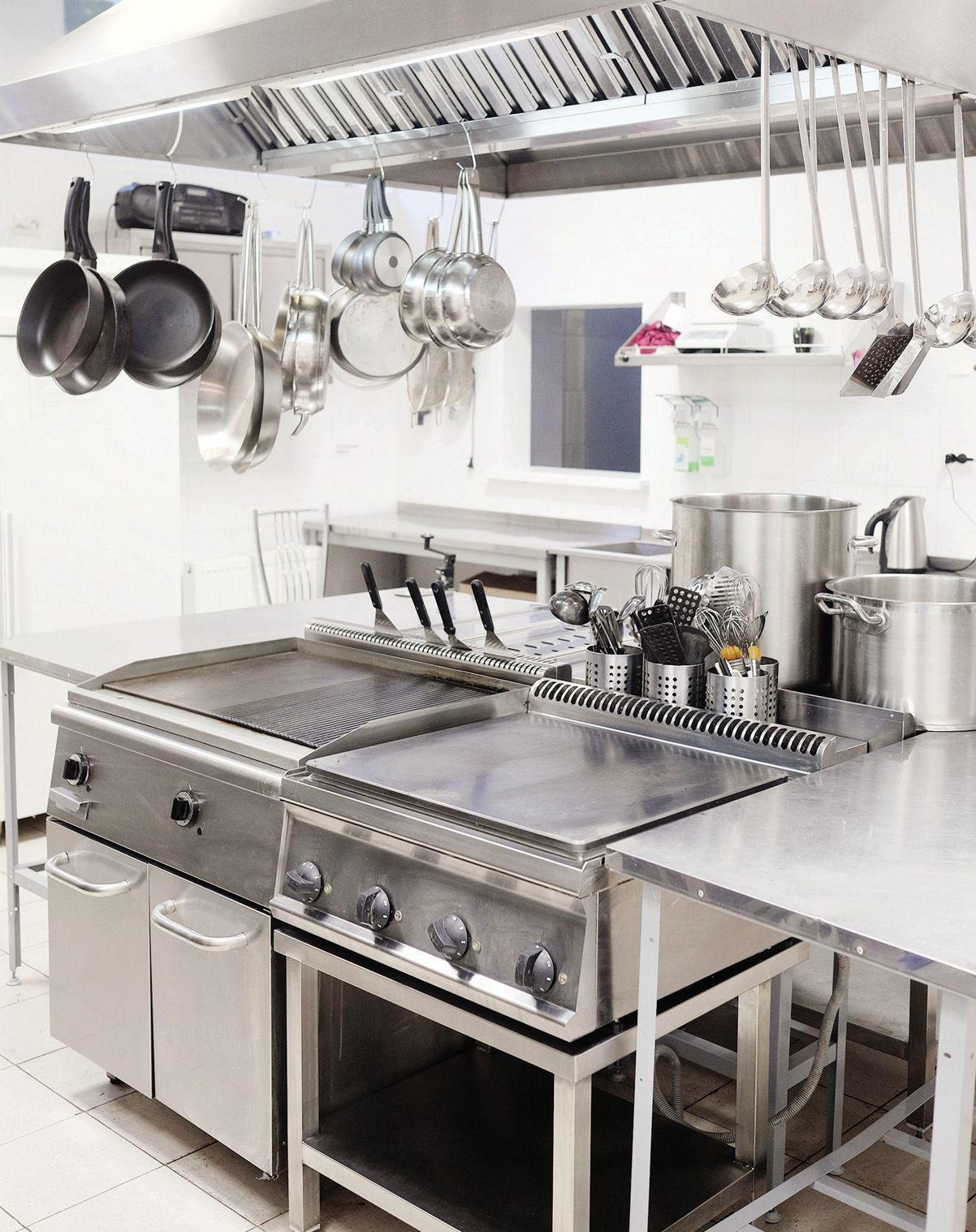
Futuristic tech is already here to increase back-ofhouse efficiency.










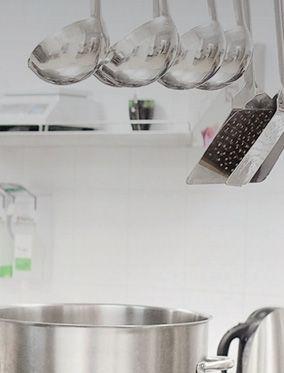
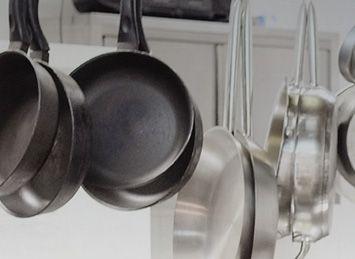

 BY KARA PHELPS
BY KARA PHELPS
SPONSORED SECTION | AUGUST 2022 81 ADOBE STOCK ® COVID Impact P82 Labor Changes P86 Tech and Design P90 Key Players P94 AUGUST 2022
VENDOR RESOURCES
/ TRENDS / NEW PRODUCTS
The Post-COVID Kitchen
How have operators adapted back-of-house?
The last two years have challenged operators to do more with less. From maintaining consistent food quality in the face of supply chain issues and staffing shortages to getting creative about reaching customers wary of dining rooms, operators have been forced to reinvent processes time and time again.
And for those who were able to navigate the chaos, there’s no going back. New technologies, kitchen setups, training, and revenue streams are making a big impact on the quick-service restaurant industry— can institute them successfully.
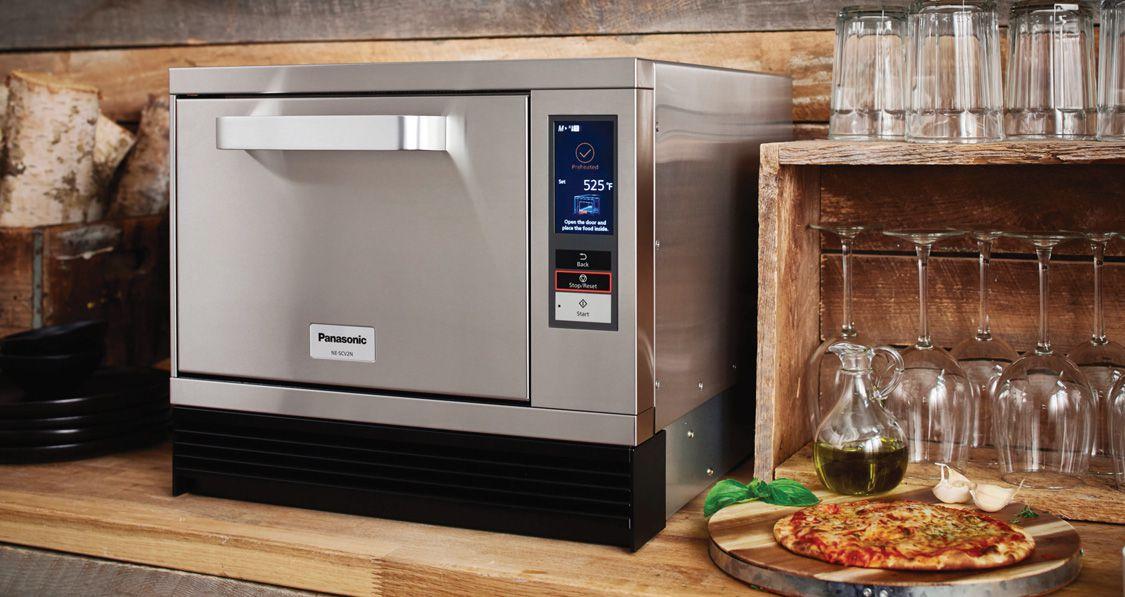
“Nothing is protected or guaranteed in this business,” says Chef Dustin Selvaggio, director of culinary innova-
tion at Waring Commercial. “I think this hit a lot of my brothers and sisters in the restaurant industry the hardest. For some, it was a truth they didn’t want to continue on with. For others, it was the driving force behind pivoting their busi-est outcome to me is that owners and chefs are realizing that quality of life for we bring in is paramount to success.”
Brands have transformed themselvesanticipate what their guests will want in uncertain times. During the worst of thetiated themselves by keeping their doors open when so many could not—and by Consumers are still ordering out in record numbers. According to Datassential,
82 AUGUST 2022 | SPONSORED SECTION SmartChain Kitchen Equipment
Panasonic PANASONIC
“Owners and chefs are realizing that quality of life for workers matters, and using all of the food we bring in is paramount to success.”

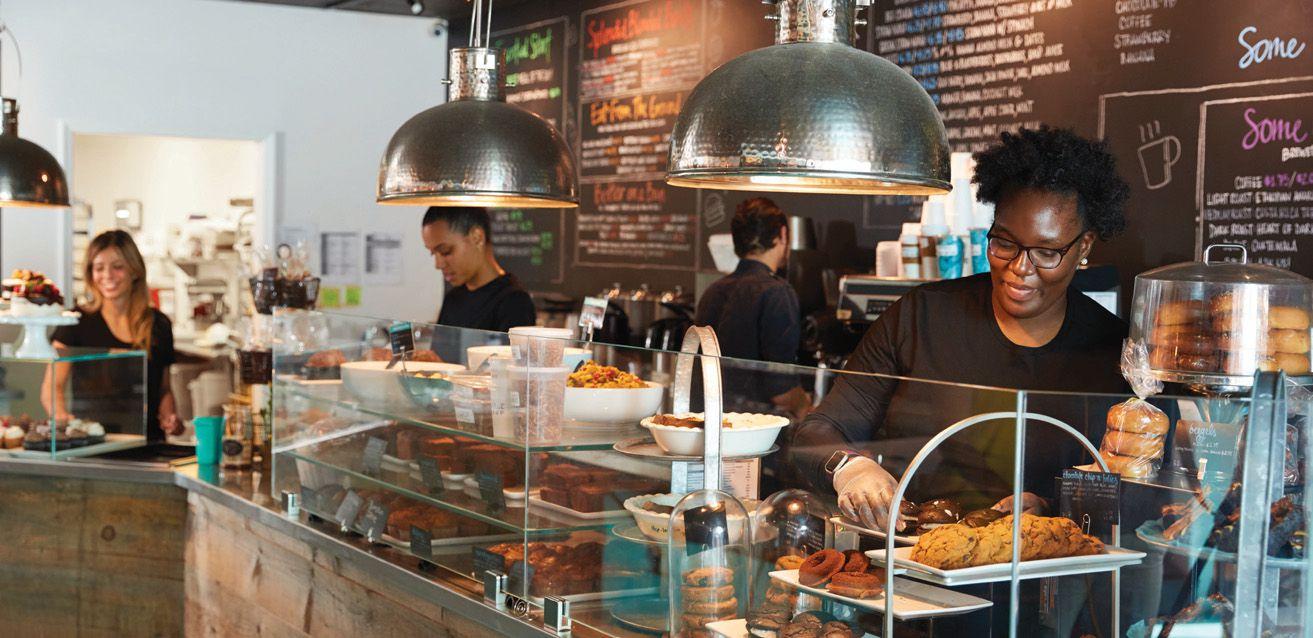









SmartChain Kitchen Equipment
nearly 40 percent of all consumers say they get food delivery at least weekly. It’s clear that consumers have grown accustomed to out-of-house dining. In fact, 38 percent of operators believe their business wouldn’t be viable
ments to their kitchen setups to accommodate this long-term trend. “To allow more pickup and delivery areas, back-of-house kitchens
Rigney of Panasonic. “Newer technologies have allowed operators to do more with less space, and new tech is enabling one piece of equip-
Ghost kitchens were a fringe idea not too long ago, but with the sus-
the biggest lessons operators have taken away from the pandemic might be that
Brienza, senior vice president of Frontline International . “If fewer people are dining out, but the demand for away-fromhome food remains, then why not prepare food for takeout or delivery from a smaller, lower-cost space that has a dramatically
With a smaller footprint, more autoens could become a new standard for resing shortages and retention struggles have created situations where investlong-term return on investment than hirtime and allows them to rotate stations
“It’s all about time savings in this labor market—the more operators can automate and take non-value-added tasks out of employees’ hands, like manual oil handling, the simpler and faster the process gets to serve great-tasting food consis-
Restaurant Technologies.
“Because of the continuing labor shortoperators can implement fully or partially automated systems in their restaurants, the more they can standardize their operations, which in turn will create a consis-


met, whether the food was delivered in the dining room or across product strategy at Henny Penny. aware than ever before of labor shortages, supply chain challenges, dated infrastructure, and poor kitchen design. Sometimes, this knowledge makes them more forit comes to the consistency of food
“Kitchens across all segments of the industry face the same issues, and discussed far away from the Culinary Solutions and partner of Taylor Company short window of acceptance of whether a new sense of what is acceptable or not
them to be prepared with the same care as when they dine in-person. With chroni-
norm in terms of the ways restaurants interact with guests. Brands were tasked ing new channels and relying more heavily on third-party services while keeping
keep up with takeout, dining room, and delivery orders—and make sure that cus-
It’s a reminder that automated smart technology has the potential to transequipment can improve everything from to resource management, procurement, mum impact, technology and people need of technology is useless unless it is surtional assets of technology and human latest technology because we can. It can-
84 AUGUST 2022 | SPONSORED SECTION
SC
HENNY PENNY
Henny Penny
“The more operators can implement fully or partially automated systems in their restaurants, the more they can standardize their operations.”
92%*
Global First Time Fix Rate
*Compared to CFESA industry average first time fix rate of 60%

Penny."

Say Goodbye to Equipment Downtime


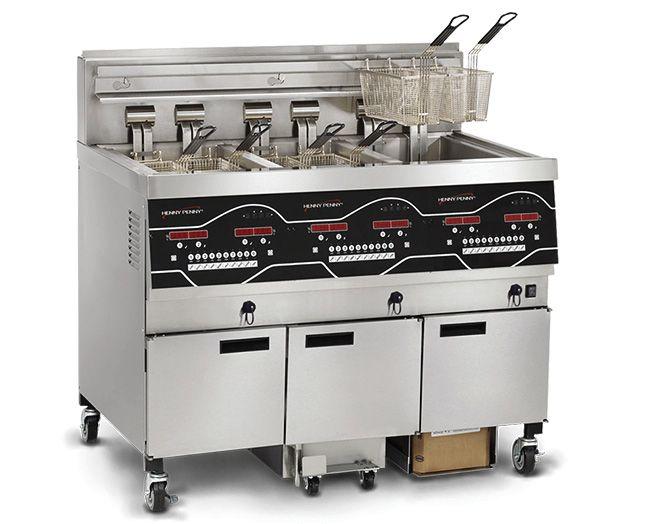
SCAN TO CONNECT WITH US


"They understand that keeping downtime to a minimum is ver y important to us... and we really appreciate that side of Henny
- Johnny Vasquez, McDonald’s Owner/Operator of 21 Stores
Hail to the Chef
Here’s how automation can be a tool for staff retention.
It would be an understatement to say the restaurant industry is experiencing a labor shortage these days. One million hospitality workers quit their jobs in November 2021—7 percent of the total workforce and more than any previous month on record. As every brand competes to attract the same shrinking pool of restaurant workers, recruiting and retaining employees has become significantly more challenging.
“With low unemployment and the increase of gig jobs, it is harder and harder
Panasonic. In a recent survey of former pizza delivery drivers, for -
ing platforms like Uber were able to lure
more control over mileage due to rising gas prices.
-
with new training programs, empower-
director of sales and marketing at Univex. “Finding employees is still
Association’s 2022 State of the 51 percent of quick-service restaurant operators expected recruiting and retaining employees would be their top challenge this year—and the tight labor
up anytime soon. For the foreseeable future, the reality is that many operators must rely on an
“Operators are being asked to do more with less labor and still provide a great guest
Botrista Technology, Inc -
ees may not have proper training for all they’re now being asked to do, and eventually, the consistency of the guest experience and food quality will almost cer-

mental health support. Of course, the employees operators manage to retain must do the work of several people— which can undermine morale and, as a result, endanger retention.
tors that employees are the backbone of
turnover, and less overall skill among employees, even the loyal frequently get rotated from function to function or loca-
ness development manager at Hatco
86 AUGUST 2022 | SPONSORED SECTION SmartChain Kitchen Equipment
-
Panasonic PANASONIC
“Operators are being asked to do more with less labor and still provide a great guest experience.”
USED COOKING OIL (UCO)
























IS A MONEY-MAKER.
YOU ARE EARNING REBATES, RIGHT?


Savvy restaurateurs know that selling UCO is profi table. Now, rising fuel prices have increased demand for biodiesel — dramatically. If you have a UCO collections program that doesn’t give you rebates, take the leap with Frontline International. We deliver a better bottom line for your foodservice operation— while you help relieve a global energy crisis.
Biodiesel is hopping. Our superior fi ltration and automated cooking oil collection equipment ensure you get a greater share of the profi ts.
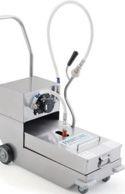
REBATE









frontlineii.com / 877-776-1100 /


SmartChain Kitchen Equipment
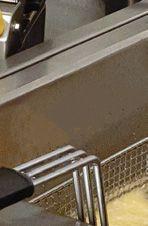


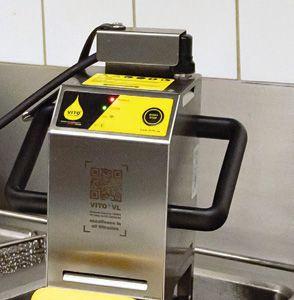
real—and costly—damage to many oper-

88 AUGUST 2022 | SPONSORED SECTION
Taylor Company
Waring Commercial
Restaurant Technologies.
Frontline International
VITO
SC
Henny Penny
VITO FRYFILTER, INC
“Any repetitive task that can be automated is going to
VITO FT 440 oil tester VITO FT oil tester






















































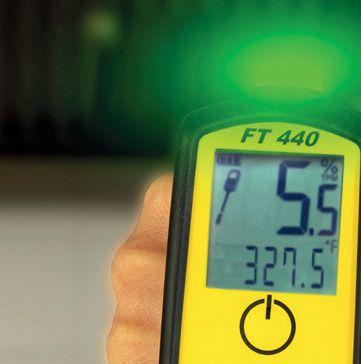


















The Right Tech, the Right Space
What will tomorrow’s kitchen look like?
The future is closer than it ever has been. Due to ongoing supply chain issues and labor shortages, quickservice restaurants are being pressed to innovate faster than ever, introducing new technologies and more automation to make sure the guest experience can still meet and exceed brand expectations.
front and the back of the house. Customerfacing technologies like ordering kiosks aim to deliver seamless, personalized interactions with guests wherever they choose to dine. In the kitchen, automated equipment is designed to streamline food
In fact, a wide variety of recent kitchen innovations mean the nature of back-ofhouse work is evolving rapidly. As hightech equipment becomes capable of taking on more of the repetitive duties, humans can spend more time on complex tasks. “Automation can help product consistency focus on customer interactions, preparing and checking to-go orders, or other activities that require a human touch,” says Sean
Hsu, co-founder and CEO of Botrista Technology, Inc
At the same time, costs of real estate and kitchen construction are skyrocketing. New restaurant locations are also and operators must rethink store layouts. the kitchen is to accept from the design perspective that its footprint must have the same weight or consideration as the front of the house,” says Chef John Reed, owner of Customized Culinary Solutions and partner of Taylor Company
More customers than ever are choosing
need as many tables or seats. Kitchen laymodular as operators must make do with kitchen designs assume the presence of more automation.
world over the last couple of years. “In general, labor-saving equipment has been the MVP during the pandemic,” says Evan Prisel, director of sales and marketing at Univex future will be a smart kitchen that will innovate and increase production while minimizing space.”
smaller, kitchens are shrinking, and tech-prints work smarter,” says Chad Morrison, senior sales executive at Restaurant Technologies. “Advancements in technology are changing the way restaurant kitchens interact with the people who use

90 AUGUST 2022 | SPONSORED SECTION SmartChain Kitchen Equipment
Taylor Company TAYLOR COMPANY
“The restaurant kitchen of the future will be a smart kitchen that will innovate and increase production while minimizing space.”
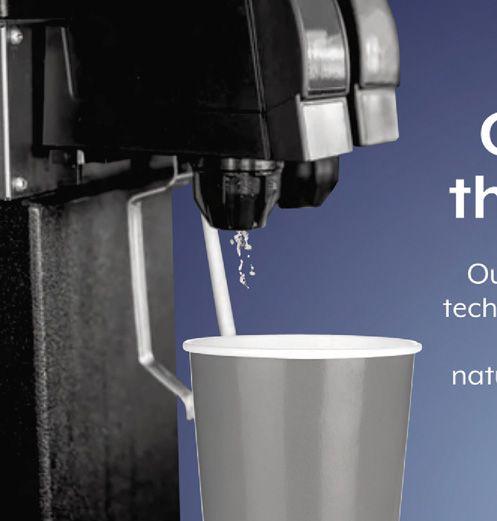



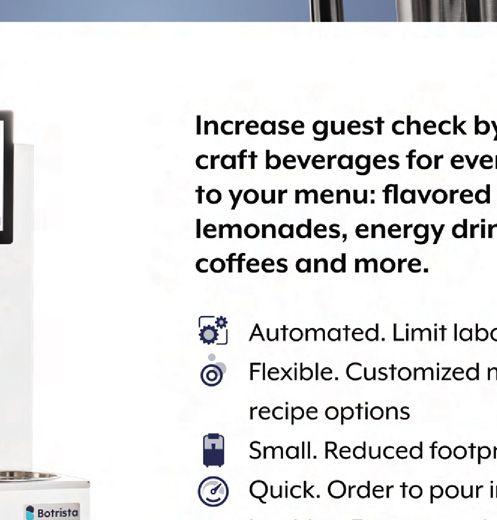



them. Reporting and data are bigger than they have ever been, serving up consumable insights, accountability, and savings value in this.” Technology that communicates between the front and back of the house, integrated systems, and so on can be real time-savers for operators.
“If kitchen operators connect frying oilkey account manager at . data of the device,which makes compliance with regulations way easier. In genstandard procedures.”
bility to optimize their kitchen setups precisely as their unique situations require. particular kind of kitchen—it will be an what your business is trying to accomplish,” says Giovanni Brienza, senior vice president of chain, or everything in between, there is equipment and automation available to you to help you reach your objectives
Of course, the basic functions of a restaurant kitchen will remain the same as long as people keep enjoying away-fromnot change anytime soon, but it will get
of the future will still be the same at its core—fryers, ovens, grills, holding cabiof product strategy at will evolve are the equipment features and the way they are used, who is operating them, and how they are interacted with.”
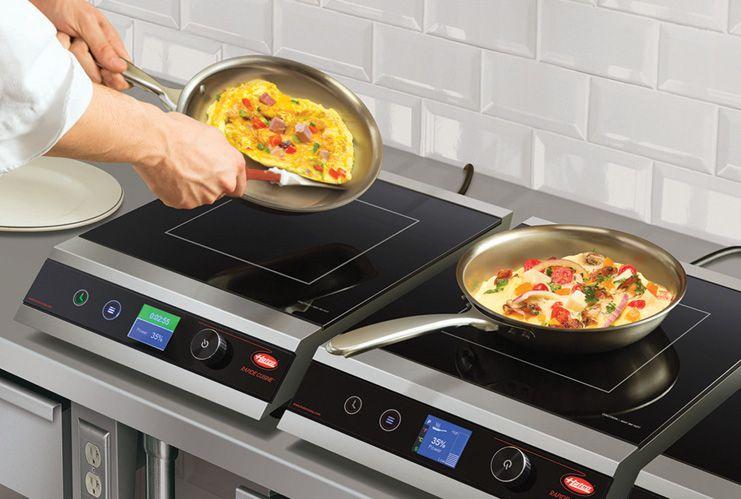
-
ators must negotiate a balancing act between technology and a comfortable working environment for employees. Equipment with intuitive controls will make it easier for technology and humans to work seamlessly together.
a modern kitchen should be simple, direct,
and easily understood—they will need one-touch controls, drag-and-drop interfaces, and even voice-activated commands that mimic what we use in our lives outside the kitchen,” Reed says.
Certain items of equipment are becom-nology that has been around for years— the microwave!—is having a renaissance Rigney of new ways, like combining microwave techciently cook products that improve their growth in prepared products that are big labor savers, like prepared ribs and grains that are easily cooked and re-thermed in a microwave or high-speed oven.”cent on fried menu items, fryers remain
cooking oil perspective, which we place among the most important, widely used-
out compromising quality, and earning as much as possible on the back end by recycling used oil,” Brienza says. “Automation tools that can help with these challenges have to be strategically employed.”
Change is inevitable, and the brands that can adapt are the ones that will thrive. “Once upon a time, people would have been shocked at the idea of drive thrus,” says Edward Nunn, business development manager at . “Having R2D2 assemble your burger and place it in a locker for you to collect grab-and-gostyle will, in time, become just as normal.”
have already introduced robotic arms to help prepare food in some locations.
where redundancy is eliminated, food
innovation at . “All will be achieved with the technology coming down the pipeline and the change in sys-
92 AUGUST 2022 | SPONSORED SECTION
HATCO
SmartChain Kitchen Equipment
SC
Induction

Any way you want it







Take induction cooking to the next level with best-in-class Induction Ranges and Warmers from Hatco®. Built for the durability and performance demands of commercial foodservice kitchens, Hatco induction delivers more power and speed than any other induction technology on the market. And with versatile good/better/best options, you’re assured of a high-performing equipment solution at a price that works for you. Discover the innovation that fuels our products and drives your success.
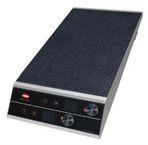
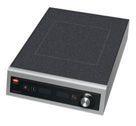







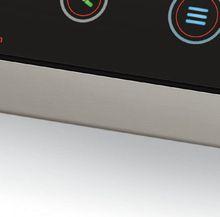



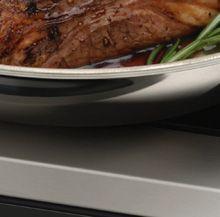

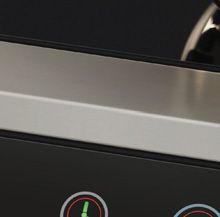


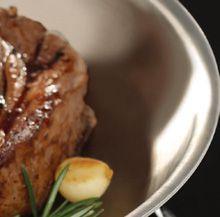
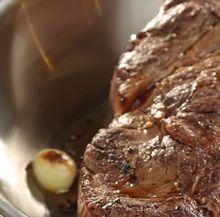
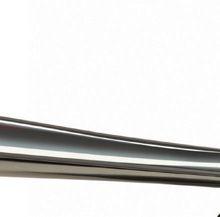



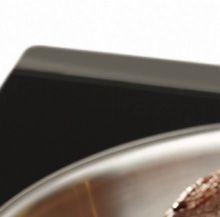
hatcocorp.com | 888.814.0028 © 2022 Hatco Corporation. All rights reserved. Ranges • Warmers • Countertops • Drop-ins
Model IRNG-PC1-36Model IRNG-BXC1-18Model IRNG-PC2F-36
People who serve, products that solve.®
Botrista
318 Brannan St. San Francisco, CA 94107
800-542-6190
botrista.io
Botrista provides beverage solutions to foodservice operators, leveraging easy-to-use equipment (our DrinkBots) alongside pre-packaged ingredients (BIBS ) to deliver a variety of craft beverages, including infused teas, flavored lemonades, energy drinks, iced lattes, and more. Our system uses algorithmic dispensing for accuracy, enabling customizable drinks to be completed in 20 seconds.

Frontline International

187 Ascot Parkway
Cuyahoga Falls, OH 44223
877-776-1100
frontlineii.com
Frontline International designs, engineers, and manufactures leading commercial foodservice equipment to easily manage, handle, store, and dispose of fats, oil, and grease. Data analysis tools drive smarter decisions and make you more profitable. Turnkey oil management is offered under its OilCare® bundled service program. Winner of three Kitchen Innovations Awards.
Hatco
635 South 28th St.
Milwaukee, WI 53215
800-558-0607
www.hatcocorp.com
Since 1950, Hatco has been a leader in creating innovative ideas for the foodservice industry: bold innovations in equipment that improves efficiency, reliability, and profits. Hatco is dedicated to exceptional customer service and quality engineered equipment offering maximum performance.

Henny Penny
219 US 35 W
Eaton, OH 45320
937-456-8400
www.hennypenny.com
Henny Penny designs, develops, and manufactures premium foodservice equipment known for ease of use and low operating costs. We’ve proudly served the world’s most demanding kitchens for more than 60 years. Our products and complete startup, service, training, and technical support are available through our global distribution network.

Panasonic
2 Riverfront Plaza Newark, NJ 07102
na.panasonic.com/us/commercial-appliances


In today’s rapidly evolving commercial food landscape, agility is key. Panasonic’s line of versatile, powerful, compact appliances can adapt to any space and adjust to any menu, enabling you to meet today’s demands—and prepare for tomorrow’s. Discover how the Sonic Solution can transform your business and accelerate your growth.
Restaurant Technologies

2250 Pilot Knob Rd.
Mendota Heights, MN 55120
888-796-4997
rti-inc.com


Restaurant Technologies’ passion is for improving foodservice operations and creating safer, smarter, and sustainable kitchens. For more than 20 years, RT has done this with innovative backof-house solutions for cooking oil and hood and flue management. RT proudly serves more than 35,000 restaurants and other foodservice establishments nationwide.

94 AUGUST 2022 | SPONSORED SECTION
SmartChain Key players
REDUCE RISKS, REDUCE PREMIUMS, SAVE MONEY.
LEARN MORE: WWW.RTI-INC.COM/INSURANCE-SAVINGS
LEARN MORE:
Risk is part of any business, especially prevalent in the foodservice industry. Restaurant Technologies’ solutions have reduced risk for our customers by simplifying the most dangerous jobs in commercial kitchens for nearly 25 years. From automating cooking oil handling to keeping your hood and flue protected from hazardous grease buildup, we’ve got you covered. Meanwhile, your employees stay safe, your worker’s comp and fire risk is reduced, and your insurance carrier stays happy.
Save up to 15% on your insurance premiums with Restaurant Technologies solutions.





Taylor Company
750 N. Blackhawk Blvd. Rockton, IL 61072
800-255-0626
taylor-company.com


With headquarters in small-town Rockton, Illinois, Taylor Company is one of the world’s leading manufacturers of commercial grill, soft-serve, and frozen beverage equipment. It has a well-earned reputation for superior engineering and exceptional customer service via a distributor network spanning 125 countries. Taylor Company is part of The Middleby Corporation.
Univex
3 Old Rockingham Rd. Salem, NH 03079
603-893-6191
univexcorp.com





Univex products are well-known for their rugged engineering that keeps them running for decades, competitive pricing, which makes them a remarkably good value, and solid innovation, including critical safety features that have become the industry standard. Let us supply you with the ideal solution for working more efficiently.
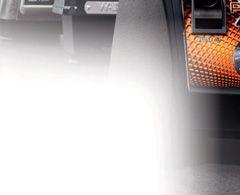


VITO Fryfilter, Inc.
702 W. Algonquin Rd. Arlington Heights, IL 60005
847-859-0398
vitofryfilter.com
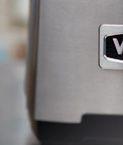
VITO frying oil filters remove particles and carbon from your oil. Frying in clean, filtered oil will result in optimal quality of your fried products. You save up to 50 percent of your oil costs and benefit from less workload around the deep fryer.
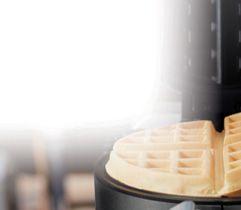


Waring Commercial
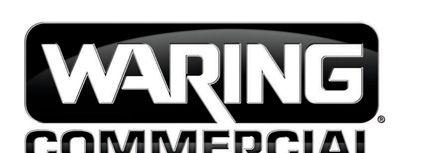
314 Ella T. Grasso Ave. Torrington, CT 06790
800-492-7464
waringcommercialproducts.com









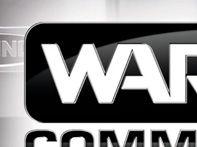



Waring Commercial, a global leader in foodservice equipment, is dedicated to providing innovative, reliable, and value-driven solutions that inspire creativity, increase productivity, and maximize profitability for the culinary community.






www.waringcommercialproducts.com



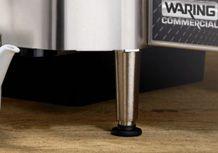

96 AUGUST 2022 | SPONSORED SECTION
Key players
SmartChain
CLIMATE RESPONSIBILITY
Shaking Up Sustainability
BY RACHEL PITTMAN
Amping up sustainability efforts is, in many ways, no longer an extra consideration for brands, but instead a best practice. Sustainable practices are not only beneficial for the environment, but may also attract consumers, particularly in younger generations—this year, The NPD Group reported 16 percent of Gen Z customers prefer sustainably sourced offerings in restaurants, as opposed to only 11 percent of older consumers. It’s no secret future consumers have the environment on their minds, meaning brands need effective ways to implement sustainability efforts into their operations.
But attaining a more sustainable future for the foodservice industry will require more than a one-time, Band-Aid fix. For lasting impact and customer approval, brands can fight greenwashing and ineffective solutions by developing a multifaceted approach that employs a range of strategies. Enter Shake Shack.
“Since day one, we’ve always believed that we should ‘Stand For Something Good’—it’s really our founding philosophy, from sourcing premium ingredients and supporting employee development to deep community investment in the places we serve,” says Jeffrey Amoscato, the burger brand’s senior vice president of supply chain and menu innovation.
The fast casual’s recent “Stand For Something Good” progress report—released in 2022 and covering developments in nearly every area of operations in 2021—details extensive, varied environmental efforts. Ingredients are perhaps the most obvious factor in increasing sustainability; Amoscato says that, over the course of 2021, the brand bought over 50,000 pounds of regeneratively ranched beef, sold more than 150,000 veggie burgers, and piloted the use of NotMilk, a plant-based dairy substitute that acts and tastes like milk, in the brand’s first dairy-free chocolate shakes and custard in select markets. But beyond the category of ingredients, Shake Shack has mined many other sectors of operations for opportunities to go greener, establishing a range of long- and short-term goals.
One of these short-term goals revolves around packaging, an area that has long been the subject of sustainability efforts, but that became an even more significant focus for improvement during the COVID-19 pandemic. During the pandemic-borne influx of to-go orders, single-use packaging elements were more needed


than ever. In 2021, Shake Shack worked to return to pre-pandemic packaging standards.
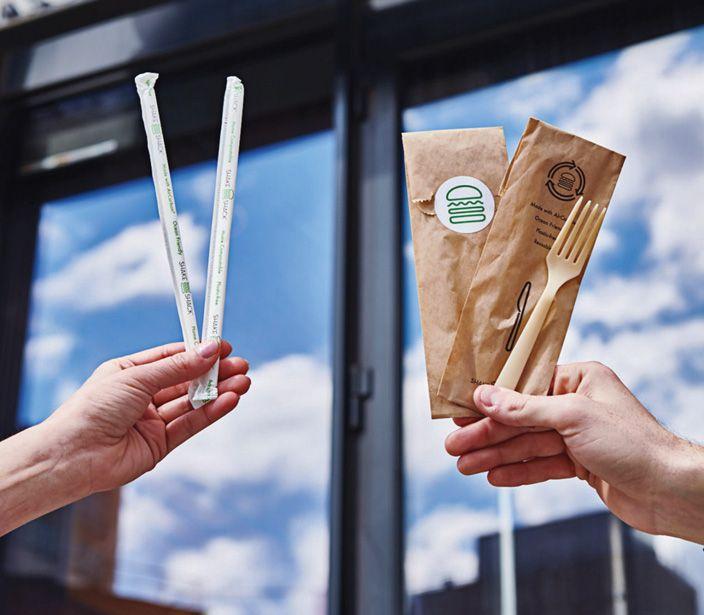
“Packaging is an area where we’re seeing immediate opportunities,” Amoscato says. “In 2021, we … [achieved a] decrease in the packaging being used to fulfill 72 percent of orders, compared to the height of the pandemic in 2020.”
In addition to hitting benchmarks for use of packaging elements, the brand explored swapping existing packaging elements with options made of more efficient materials. Previously, Shake Shack’s to-go bags were made entirely of virgin paper, but last year the brand selected a new supplier that offered bags produced with 100 percent recycled fiber and 95 percent post-consumer content. The brand also launched a pilot of compostable, plastic-free, carbon-negative straws and cutlery in select markets. The new cutlery and straws are made of AirCarbon, a biomaterial made by Restore Foodwares that is a regenerative, compostable replacement for synthetic plastic. The pilot began with six locations in California, New York, and Florida; now, more than half of the brand’s units have implemented the straw and the numbers are growing.
DEPARTMENT
SHAKE SHACK CHEYENNE M COHEN
The burger brand is tackling the topic with a multifaceted strategy.
www.qsrmagazine.com | QSR | AUGUST 2022 97
Over the course of 2021, Shake Shack bought over 50,000 pounds of regeneratively ranched beef.
A focus on reducing overall cutlery use is also key in the brand’s packaging sustainability strategy. Again taking pre-pandemic metrics into consideration, Amoscato reports that, by May 2022, Shake Shack had reduced cutlery by 13 percent from pre-pandemic 2019 usage. “We plan to pilot a completely new packaging redesign later this year to optimize guest experience, and the materials are completely focused with sustainability in mind,” Amoscato says. While additional packaging improvements are on the docket for the immediate future, Shake Shack is expanding its environmental efforts further with a long-term focus on lessening its overall carbon footprint. Last year, the brand tracked and reported its entire carbon emissions across Scope 1 (direct emissions from owned or controlled sources) and Scope 2 (indirect emissions associated with purchased electricity, steam, heat, or cooling ) for the first time. While the chain built its first location with solar panels over 10 years ago in 2012, the data from this 2021 tracking motivated a deeper investment in reducing carbon output. This resulted in the addition of solar panels to five locations in 2021. Depending on the surface area of the roof at each location, 24–70 panels of varying sizes were installed at each, with the panels generating around 18 megawatt hours of electricity annually per unit. According to figures based on the Environmental Protection Agency’s Greenhouse Gas Equivalencies calculator, the brand’s panels generate energy equivalent to CO2 emissions from over 1,400 gallons of gasoline or 29 barrels of oil, saving the same amount of greenhouse emissions

as 4.3 tons of waste being recycled instead of landfilled. In 2022, at least one new Shake Shack will receive solar panels, and additional units (particularly new stores) will be assessed for their compatibility with panels. “In order to implement solar panels effectively, it is best to incorporate the solar panels in the original design,” says Brian Smith, Shake Shack’s senior manager of procurement and sustainability. “We continue to evaluate the suitability of solar panels as we develop new locations.”

As is the case with the brand’s overall plan, Shake Shack’s renewable energy course of action is layered. In 2021, 30 percent of new units realized a 20 percent year-over-year reduction in kitchen exhaust system energy usage after the brand worked with manufacturers to add floor-to-ceiling side panels around kitchen hoods, containing griddle areas and increasing the efficiency of the exhaust hoods. And the brand’s heterogeneous approach to sustainability leaves nothing off the table. As new areas for improvement are revealed, Shake Shack plans to continue to respond, according to Smith, even researching developing approaches such as the applicability of geothermal thermal energy to the restaurant environment. “The food industry contributes a significant amount of global carbon emissions, so as a company … we will keep pushing ourselves to be on the right side of history to build a more sustainable business, even if it takes some time,” Amoscato says. q





CLIMATE RESPONSIBILITY / CONTINUED FROM PAGE 97 PROTECTINDOORAIRCOMFORT Berner AirCurtainsfor OPEN-AIR DINING SAVEenergy& reduceCO2emissions KEEPflyinginsectsout, KEEPvehicleexhaust& cigarettesmokeout Whenthedoorsareopen CONTACTUSTODAY800.245.4455 SCANNOW 98 AUGUST2022 | QSR | www.qsrmagazine.com
Rachel Pittman is a regular contributor to Food News Media and is based in North Carolina.
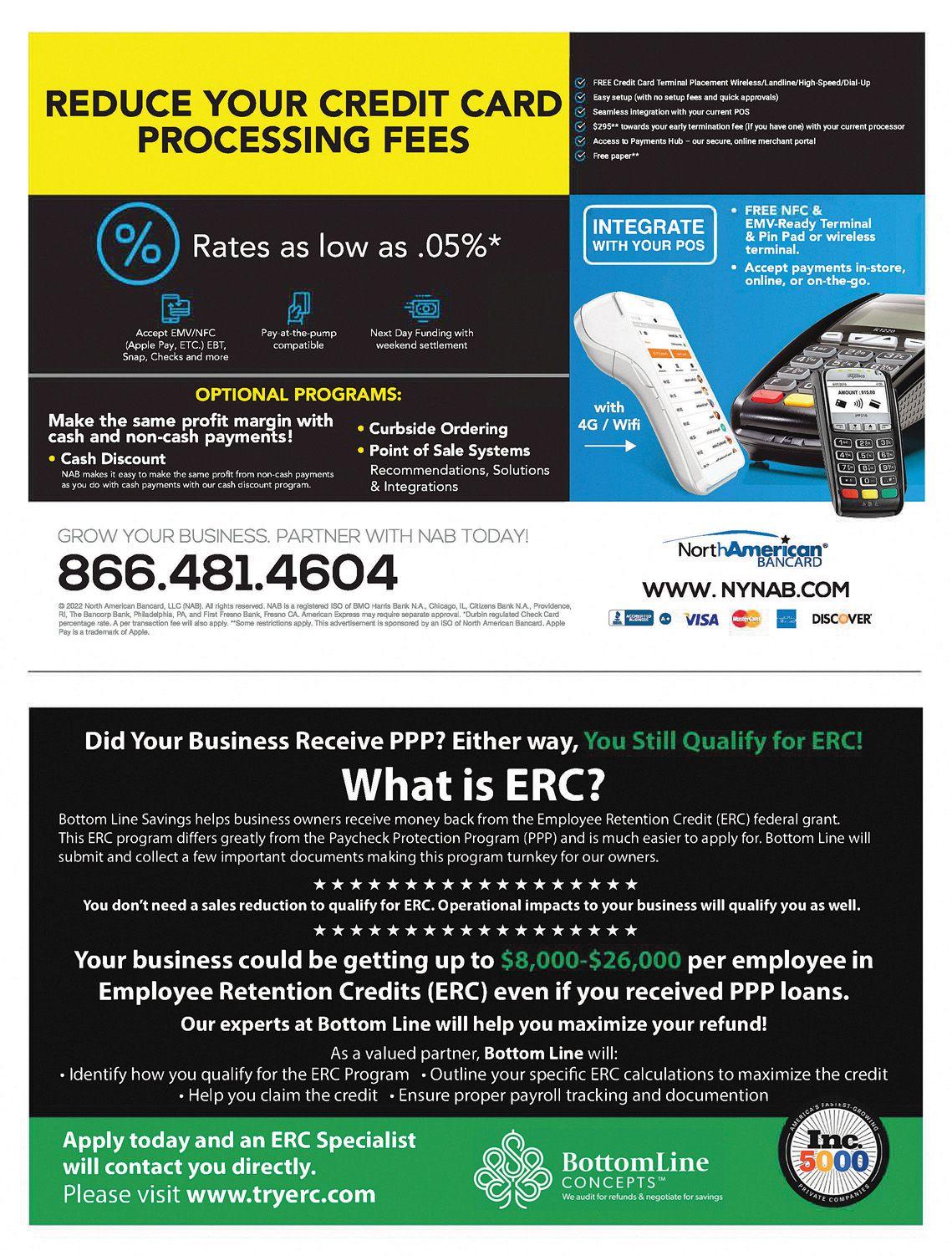
www.qsrmagazine.com | QSR | AUGUST 2022 99
Group’s Portalatin says, adding that savvy quick-service brands are leveraging digital engagement and creating innovative new store designs to ensure convenience and accommodate higher capacity, largely in response to consumers’ swelling appetite for off-premises dining.
Consider Popeyes as one case. Celebrating its 50th anniversary in 2022, Popeyes is unabashedly, unapologetically, and unrelentingly focused on growth and feeding consumers’ intensifying embrace of value, convenience, and tasty food to create a bigger brand footprint.




“Right now, guests can’t have Popeyes wherever they want it, so we have a huge runway with how many more restaurants we can open in the U.S. & Canada,” Siddiqui says.
Over the next five years, Siddiqui wants to further elevate the guest experience and achieve operational excellence, leaning on enthusiastic franchisees, innovative products, and relevant technology to drive performance in the U.S. and abroad. The company is testing new restaurant formats
oriented to digital-only orders, including ghost kitchens, and strengthening thirdparty and digital partnerships to enhance access for customers.




“That’s what will take us to the next level,” Siddiqui says.




Despite the existence of some pesky market challenges, Siddiqui says the quickservice model has shown itself to be “tried and true” and proven its resiliency. By and large, the industry navigated headwinds like the pandemic and supply chain disruptions and adapted to consumer needs in real-time by pivoting much of their business to drive-thrus, delivery, and contactless options. Such swift changes deepened quick serves’ relationships with consumers and helped elevate Popeyes and so many of its quick-service siblings in the eyes of consumers.
“Ultimately, if you listen to the evolving needs of your guests and ensure your team members are taken care of, then your restaurants will be better equipped to navigate and prosper through times of uncertainty,” Siddiqui says.
THE SS-6 MINI PUMP SIMPLICITYS
With it’s small footprint and profile, the SS - 645 Mini ismadefor the Convenience Store/ Limited Space Quick Serve Application.
Optional Stainless Steel Pump available.






ANOTHER GOLDEN AGE? WHY NOT?
To be certain, inflation, supply chain, and labor issues continue pelting the restaurant marketplace, while there is reasonable concern that elevated pricing will stall the quick-service industry’s freakishly fast pace. Still, those headwinds are not enough to silence the overwhelming optimism among many major quick-service players, especially as restaurant-loving millennials enter their peak earning years and domestic migration sparks fresh opportunities for new restaurant locations.

Many leading quick-serves are prepared to pounce on current opportunities, largely by making relevant investments in technology, store design, and the customer experience to ensure they are productivity-minded, responsive, and on-trend operations.


Boatwright says Chipotle will continue to benefit from large investments in its people and technology. In April, the company announced a $50 million venture fund called Cultivate Next, which will make early stage investments into companies that will help Chipotle enhance the experience of its guests and its employees. In addition, Chipotle will continue to test and invest in technology like Chippy, the company’s autonomous kitchen assistant that cooks tortilla chips, and radio-frequency identification (RFID) tools to trace and track ingredients in its restaurants. Such innovations promise to enhance the employee experience at Chipotle and boost productivity at the company’s restaurants.
“Brands that have a clear purpose, commitment to a great guest experience, and the ability to adapt to the evolving needs and behaviors of their guests will continue to win across all categories,” Boatwright says, adding Chipotle leadership’s next goal is to see AUVs travel well beyond $3 million. “Stronger restaurant-level economics combined with significant unit growth should allow us to optimize earnings power for years to come.”
Wingstop, meanwhile, has seen its digital database of customers surpass 28 million users and international development swell, a sign that fast food’s ambitious prospects extend beyond U.S. borders. The first of 100 planned Wingstop restaurants in Canada opened earlier this year while an expanded development agreement in Indonesia will
IS A GOLDEN ERA FAST
FOOD UPON US? / CONTINUED FROM PAGE 80
Shortening-Sh 5711 INTRODUC IG:
WASTE
OIL CRRIE AT LAST: A solution to Counter-Top Fryer Waste Oil Disposal Conundrum.
100 AUGUST2022 | QSR | www.qsrmagazine.com
double Wingstop’s presence in that nation to more than 100 units.
“Our optimistic outlook comes down to growth in our development pipeline, whitespace in existing target trade areas, and the potential for restaurants in new target trade areas,” Skipworth says, adding that Wingstop could add as many as 220 locations this year alone.
To prepare for its enterprising growth plans, Wingstop is exploring options to take more control over its supply chain, investing $40–50 million into its tech stack over the next five years, and prioritizing its product innovation, highlighted by the ongoing test of 11 different chicken sandwiches.
“It is truly an exciting time to be a part of Wingstop,” Skipworth says.
At Potbelly, Wright attributes the company’s positive growth to surging digital business—two out of every five Potbelly orders in 2022’s first quarter were digital—a re-engineered menu that heightened Potbelly’s value proposition, and a modernized tech stack led by a new website, a new mobile app, and a redeveloped loyalty program.
“Those are all reasons we’ve moved from survival to turnaround and are optimistic about what lies ahead,” Wright says.
And just what lies ahead for Potbelly, which today boasts about 450 units across 33 states? How about reaching 2,000 restaurants over the next decade?
A once-unthinkable proposition just two years ago suddenly doesn’t seem so wild given the brand’s comeback amid a greater quick-service surge. Of late, Potbelly has entered Las Vegas and Tampa and Wright sees compelling opportunity for Potbelly to open new markets while simultaneously deepening its penetration into existing ones as well.
Growth, Wright says, begets more growth.
“Growth is the best part of chain restaurants,” says Wright, a 35-year veteran of the restaurant industry. “When you have new franchisees, people moving up and getting promoted, and new stores opening, it creates more opportunities. And there’s nothing like growing and winning in this industry.”
It is, one might say, golden. q
www.qsrmagazine.com | QSR | AUGUST 2022 101 Don’t expect to receive applicants by only Recruiting for them PART-TIME. Gecko focuses on recruiting top hospitality Only with a higher level of focus, can you Connecting people and changing lives, one career at a time® . Let Go, and Let Gecko. Gecko Hospitality® Contact us today. We’ll connect you to your next awesome management candidate. 13379 McGregor Boulevard, Suite #1 Fort Myers, FL 33919 GeckoHospitality.com | 239.690.7006
Daniel P. Smith is a regular contributor to Food News Media and is based in Chicago.
MULTI-UNIT OPERATIONS
ing station. For example, if an online order comes in, it goes directly to the cook. Once the product leaves the oven, it goes to the pizza cutter, who has his own screen. Also, delivery drivers use an app that shows customer contact information, directions, how much they drove, how much they make, and the number of orders they delivered on a daily basis in real time. From inside, managers can see drivers’ locations and how close they are to arriving back at the store. To simplify flow, the computer system automatically chooses delivery orders that are going in the same direction, which means fewer drivers and not as much time on the road. Suppliers, inventory management information, and third-party delivery aggregators are all digitally integrated, and the brand is working on artificial intelligence to take phone orders.
Nelowet says technology especially helps for those who speak English as a second language. He remembers traveling to a restaurant in Coral Springs, Florida, where 40 percent spoke Spanish and 40 percent Ukrainian, yet the staff worked together seamlessly because of the unifying digital processes. “I’ve never seen anything technically set up the way that Sarpino’s is across the board. I’ve never seen such heavy use of technology,” Nelowet says. “So really, for somebody who already owns another brand of some kind, it’s going to make it really easy for them to add this to their portfolio.”
Before fully taking control, they undergo “unbelievably intense” training. Sarpino’s works with franchisees for months at its home office, and then two executives work alongside operators inside restaurants for 30 days. Such training is needed to execute the brand’s elevated scratch menu, Chatkin says. The pizza dough is made daily from 100 percent whole wheat flour, yeast, water, salt, olive oil, and that’s combined with crushed tomatoes and daily shredded mozzarella. Although the menu is more involved, systemwide labor costs are kept at 27 percent. The top 50 percent averages 24 percent. Chatkin attributes this to use of technology and the fact that Sarpino’s can charge more for its premium items, building revenue and gross profit margin. q
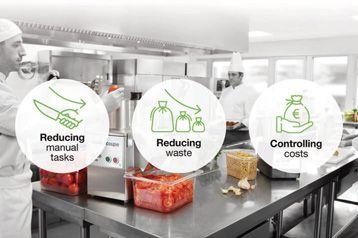
Center for Global Franchise Excellence,” she adds. The idea is to select 10 MBA students from the University of Louisville and Howard University to participate in a five-month fellowship. They will receive educational experience, mentoring, and hands-on training, and at the end of the program, Yum! will provide two students the opportunity to become future franchise owners.
“Included in the fellowship are scholarships, extensive education through the Yum! Center for Global Franchise Excellence’s franchising curriculum, one-of-a-kind mentorship from some of Yum! Brands’ top franchisees in the U.S., in-restaurant training, a sponsored trip to Yum! Brands’ Louisville Restaurant Support Center, and a number of unique curated franchising professional experiences,” Williams says.
Wendy’s put forward an initiative called “Own Your Opportunity,” designed to encourage a more diverse and equitable company. “We want our Wendy’s system to reflect the diversity of our customers. Our franchises want them to be engaged and growing, and through the world of franchising, we can create pathways for others so everyone can be successful,” Pringle says.
She adds the concept behind Own Your opportunity is tied in with its Good Done Right strategy—Wendy’s corporate responsibility platform. “We wanted to create positive change in our business and through our industry, through food, people and footprint. One of our goals is wanting to increase representation of underreported groups in leadership, management as well as our franchise system, across the board,” Pringle says.
To that end, Pringle says Wendy’s took a fresh look at the financials and reduced the initial net worth requirement by 75 percent. The company is also partnering with several financial lenders, including First Women’s Bank, which Pringle described as “… the only women-founded, led, and owned commercial bank, focused on serving the women’s economy.”
Another element is establishing a buildto-suit fund, in which Wendy’s takes care of the finding the location, constructing it, designing it, resulting in the franchisee to pay for a much smaller amount of the initial building process. This has already been put to the test in Canada.

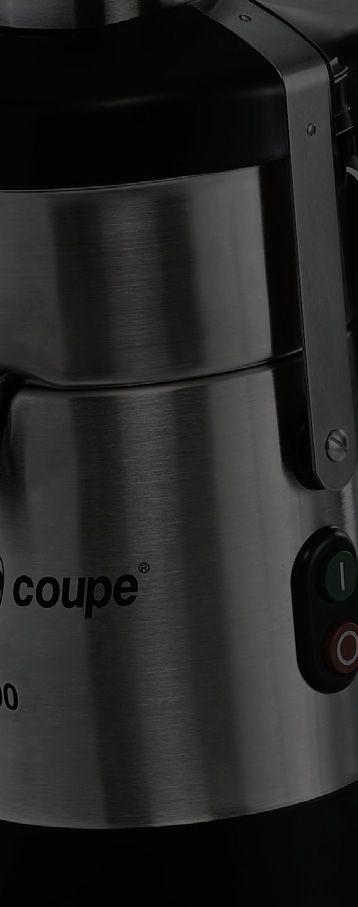
ONES TO WATCH / CONTINUED FROM PAGE 20
Ben
News
content
Ben@QSRmagazine.com
Coley is Food
Media’s
editor. He can be reached at
q Hilary Daninhirsch is a regular contributor to Food News Media and is based in Pittsburgh. FRANCHISE FORWARD / CONTINUED FROM PAGE 24
Let’s revisit existing ways of achieving kitchen output. Your Experts in Time, Labor & Cost Savings. #THEsolution The widest range of Food Preparation Machines Scan Code to Request a Demo Robot Coupe USA, Inc. 1-800-824-1646 : www.robot-coupe.com 102 AUGUST 2022 | QSR | www.qsrmagazine.com
For more information on these companies, visit www.QSRmagazine.com/connect/
AD INDEX



Accurate Box ........................................61 973-345-2000 | accuratebox.com

Acrelec ................................................39 acrelec.co/double_check

Anchor Packaging ................................31 800-467-3900 | anchorpac.com
Barilla ..................................................43 barillaFS.com/frozen
Baskin-Robbins ...................................21 baskinrobbinsfranchising.com
BelGioioso ...........................................37 833-476-5596 | belgioioso.com
Berner .................................................98 800-245-4455 | berner.com
Checkers & Rallys .................................25 888-913-9135 | owncheckerfranchise.com/QSR
Coates Group .......................................73 CoatesGroup.com
Coca-Cola .............................Inside Front 800-241-COKE | coca-colacompany.com
Dallas Group ........................................67 800-367-4188 | magnesol.com


Easy Ice ...............................................35
866-327-9423 | easyice.com
EcoLab ....................................Back Cover
800-529-5458 | ecolab.com
Efficient Hire. An Equifax Company ......41 800-859-7479 | efficienthire.com
Ellianos Coffee .................................12, 13 800-990-4418 | ellianos.com/franchising
Fetch Rewards ...............................22, 23 partners.fetchrewards.com/qsr
FIFO .....................................................57 800-453-3436 | fifoinnovations.com
FLAT Tech ............................................33 855-999-3258 | FlatTech.com
Gecko Hospitality ................................101 239-690-7006 | GeckoHospitality.com
Genpak ................................................47 800-626

Ghirardelli .............................................5 800-877-9338 | ghirardelli.com
HME Hospitality ..............................18, 19 866-577-6721 | hme.com/nexeo
Intellihot..............................................49 877-835-1705 | intellihot.com
Jersey Mike’s .......................................75 jerseymikes.com
Mike’s Hot Honey ..................................11 212-655-0574 | mikeshothoney.com/sample
Mother Parkers Tea and Coffee ...............8 905-279-9100 | mother-parkers.com
NorthAmerican Bancard .......................99 866-481-4604 | NYNAB.com
Perdue ...........................................53, 55 888-737-3832 | perduefoodservice.com
Red Gold ...............................Inside Back 765-557-5500 x.1209 | RedGoldFoodservice.com
RF Technologies ........................3, 29, 103 800-598-2370 | rfdrivethru.com






Rich’s Foodservice .............................6, 7 800-356-7094 | RICHSUSA.COM/ONTOP
Robot Coupe ......................................102 800-824-1646 | robot-coupe.com
SEB Professionals ................................14 wmf-coffeemachines.com | schaererusa.com wilburcurtis.com
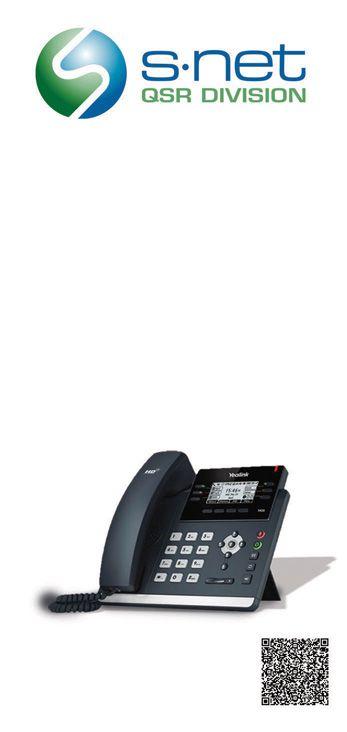
S-net .................................................103 844-986-1949 | qsr.snetconnect.com



Subway ................................................16 subway.com
The Howard Company ..........................65 800-782-6222 | howardcompany.com
VitaMix ................................................45 800-437-4654 | vitamix.com/ourdifference
Wayne Farms .......................................71 800-392-0844 | waynefarms.com/wings
Welbilt ................................................69 800-367-4233 | multiplexbeverage.com
Worcester ..........................................100 800-533-5711 | shortening-shuttle.com

SMART CHAIN ...............................................81 - 96
Botrista ..............................................91 800-542-6190 | botrista.io
Frontline International .......................87 877-776-1100 | frontlineii.com
Hatco .................................................93 888-814-0028 | hatcocorp.com
Henny Penny ......................................85 800-417-8405 | hennypenny.com
Panasonic Commercial Food Service ...83 https://na.panasonic.com/us/commercial-appliances





Restaurant Technologies ....................95 866-394-0776 | rti-inc.com/insurance-savings

Vito Fryfilter ......................................89 847-859-0398 | vitofryfilter.com
Waring Commercial ............................96 800-492-7464 | waringcommercialproducts.com



SPONSORED CONTENT
ChargeNet ..........................................59 858-381-0458 | chargenetstations.com
www.qsrmagazine.com | QSR | AUGUST 2022 103
Scott Snyder
CEO

BAD ASS COFFEE OF HAWAII
What was your first job?

While I was growing up, I worked in my family’s heating/AC business where I learned a lot, from a skilled trade to responsibility. Early on, I understood that you’re always viewed as a reflection of the brand you work for. Post-college, my first job was an internship that turned into a full-time position managing the marketing communications for a multihospital brand.
What’s your favorite cuisine or coffee choice?
I consider myself to be an “equal opportunity eater” because I love all food! But when it comes to coffee, I’m a bit of traditionalist in that I love my coffee black every day. I love the aroma and enjoyment of freshly roasted and brewed coffee from the first sip to the lingering aftertaste.
Who inspires you as a leader? Ronald Reagan has always been someone I admired because of his leadership style. He knew how to read a room and adjust his communication style accordingly to fit the audience and to achieve his objectives—it was an art form.
What’s the best piece of advice that other restaurant executives should hear? Identify your brand’s ownable truth—find what is unique and differentiates you from everyone else.

What are some of your interests outside of work?
I really enjoying being on the water. Competitive sailboat racing and cycling are two of my passions. Both require a lot of focus which makes for a nice break from work.
My professional journey spans across different industries and companies, but one common denominator has been working with startups or with brands in need of a transformation. Much of my early career surrounded various marketing roles, but I also spent time in publishing and eventually ended up overseeing client growth strategy as a partner at a digital advertising agency. We worked with fast-growing companies such as Chipotle, Red Robin, McDonald’s, Jimmy John’s and more that wanted to utilize tech-facing strategies to create experiential brand relationships with their customers.
I then made my way into independent consulting where I helped brands re-invent their business as well as manage the internal change that would be required to grow.

I was first introduced to Bad Ass Coffee of Hawaii in late 2017 as a consultant and became the interim CEO in 2018. I fell in love with the brand, the coffee, and its franchisees. I saw its potential and knew what was missing to trans-

form Bad Ass Coffee of Hawaii to new levels of success. With the help of investors, we acquired the assets in July 2019 and immediately went to work on building the right team to create a roadmap to success. We knew from the start that there would be a lot of change to manage in the organization, so leadership alignment around one common vision would be critical. Even after the pandemic started, we maintained our focus on the vision but were still able to execute efficiently and pivot as a team when met with challenges. Within two weeks of major closures due to COVID-19, we were able to quickly create an online ordering solution that enabled our stores to remain open. Four months later, our sales were higher than they were pre-COVID.
Looking ahead, Bad Ass Coffee of Hawaii is prepped for continued innovation and development. We really are a 32-year-old startup—the past couple years have been about building infrastructure and telling our story through an omnichannel sales strategy. q
BACK PAGE START TO FINISH BAD ASS COFFEE OF HAWAII 104 AUGUST2022 | QSR | www.qsrmagazine.com



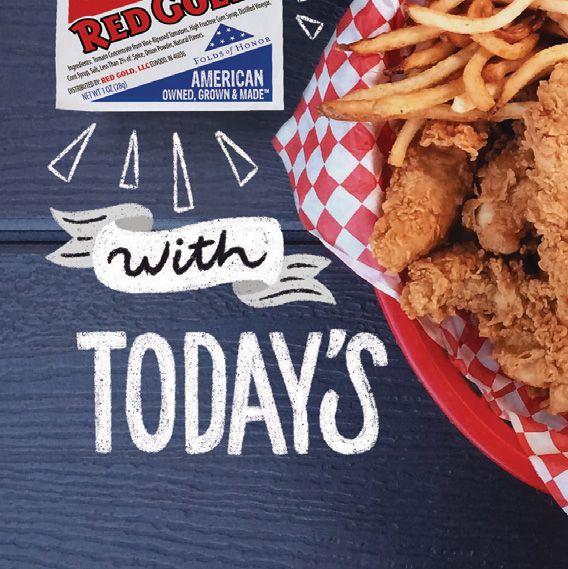







Red Gold® Makes Portioning Ketchup Easy! The right packaging, price and product equipment to support today's needs for your restaurant! Red Gold has the products you need for Contact your Local Distributor, Red Gold® Visit RedGoldFoodservice.com • Call 765-557-5500 x1209 • Email info@redgold.com


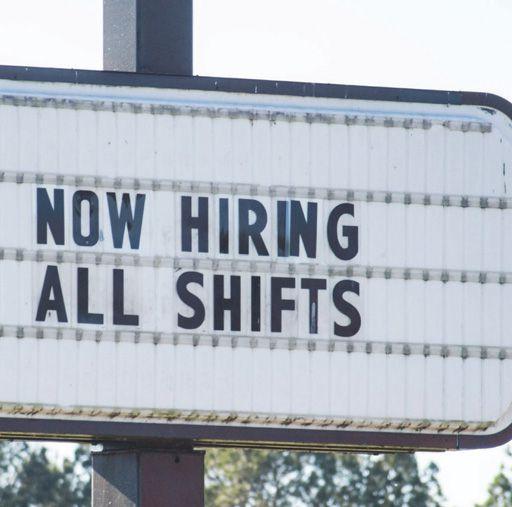

Ecolab USA Inc. All rights reserved. (Scan the code for more information about each machine) Low-temp dishmachine High-temp dishmachine Saves water, energy and labor. Faster, easier close down. Open with fewer employees. More time with customers. Contact your Ecolab Representative or call 800.529.5458 TODAY! KAY® Machine Warewash is ready to Join your Team.










 BY DANIEL P. SMITH
BY DANIEL P. SMITH

































































































































































 BY AMANDA BALTAZAR
BY AMANDA BALTAZAR



















































































































































































































































 PANERA IS HEADED INTO THE FUTURE WITH A NEXTGEN RESTAURANT THAT’S BUILT FOR AN OMNICHANNEL WORLD.
PANERA IS HEADED INTO THE FUTURE WITH A NEXTGEN RESTAURANT THAT’S BUILT FOR AN OMNICHANNEL WORLD.























































































































































































































































































































































































 BY DANIEL P. SMITH
BY DANIEL P. SMITH




















 BY KARA PHELPS
BY KARA PHELPS


























































































































































































































































